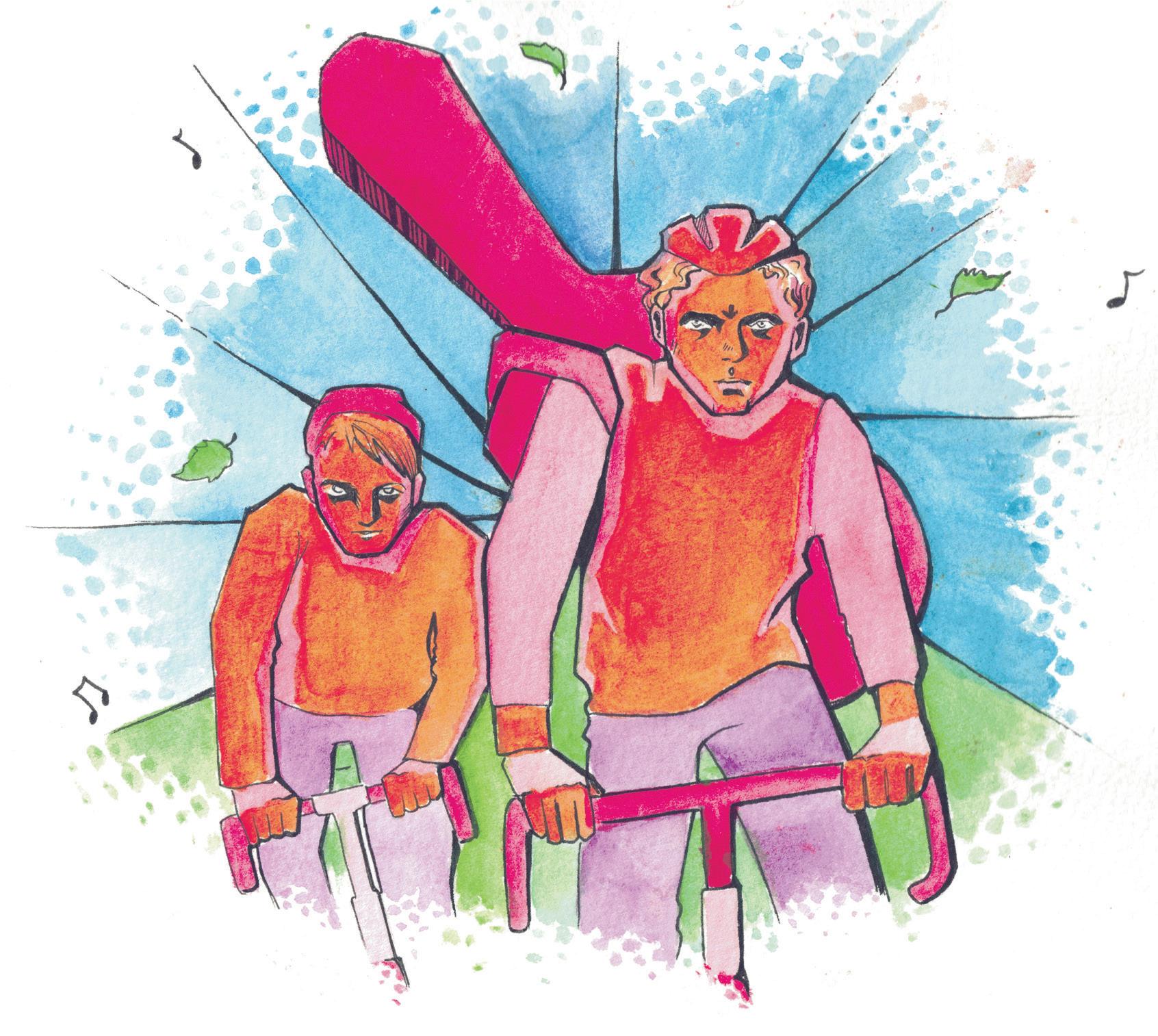




BY SASHA HUROWITZ STAFF REPORTER
Yale Law School once factored legacy affiliation into its admissions preferences, three Law School professors told the News — a policy that was not publicized and no longer exists.
Over the course of more than a decade, the Law School has gradually become legacy-blind in its admissions process, Akhil Reed Amar ’80 LAW ’84, a Sterling professor of law and political science, said in interviews with the News between April and June. Parental ties to the school — whether as alumni or faculty — now carry no weight in evaluating potential J.D. candidates, according to a Law School spokesperson.
The change was completed in the past five years, Amar said. Professor of jurisprudence Gideon Yaffe and emeritus professor Lea Brilmayer confirmed the Law School’s shift
away from legacy preferences but said they did not know the timeline. No mention of the Law School’s policy pertaining to legacy consideration appears to exist in any official public documents online.
When contacted by the News for comment, Law School spokesperson Alden Ferro declined to provide specifics about when or how legacy preferences were phased out — or whether they had ever been in place at all. Instead, Ferro issued a single written statement addressing both legacy admissions and legacy preferences for Yale College graduates, though the News had not inquired about the latter.
“There is no advantage given to legacy applicants in the Yale Law School admissions process," Ferro wrote in the statement.
“The YLS application does not ask whether the applicant has a family member who attended
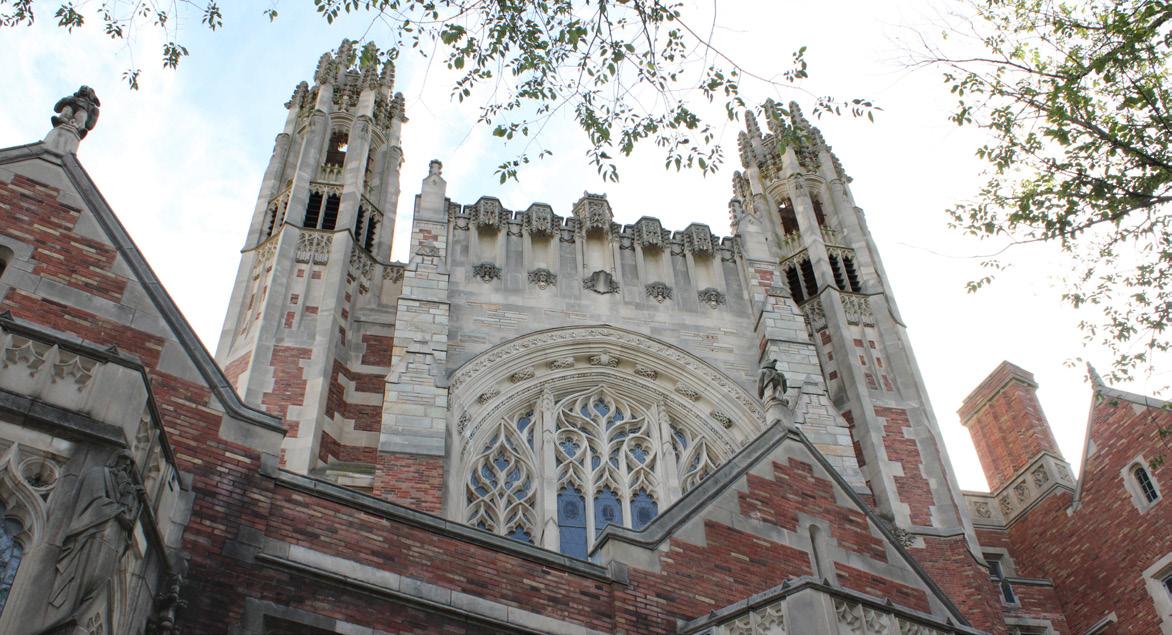
BY JAEHA JANG STAFF REPORTER
Former University President Peter Salovey plans to make a return to teaching next year.
In an email to the News, Salovey wrote that he is “leaning toward” teaching a seminar on the psychology of leadership in higher education and a lecture on emotional intelligence.
“I do plan to resume teaching at Yale next year,” Salovey wrote. “Back in the day, I used to teach large lecture courses such as Introduction to Psychology, and Psychology and Law. But I think I will now focus on courses that are a little more manageable.”
Since joining the faculty in 1986, Salovey taught “Introduction to Psychology,” known to students as “Psych 101,” nearly every year until 2003, when he was appointed the dean of the Graduate School of Arts and Sciences.
After leading the Graduate School of Arts and Sciences from
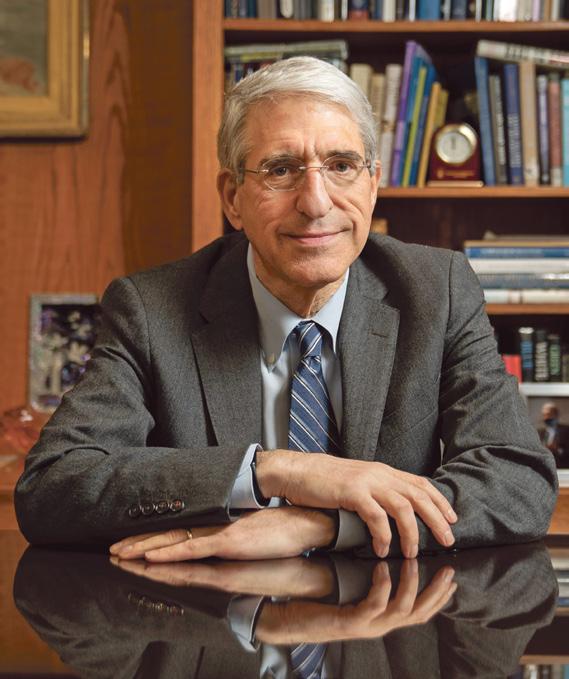
2003 to 2004, Salovey served as the dean of Yale College from 2004 to 2008, as University provost from 2008 to 2013 and as University president from 2013 to 2024. The last time Salovey taught was in fall 2012, according to CourseTable, a student course planning website.
While Salovey wrote that he misses teaching “Introduction to Psychology,” which he estimates 6,000 to 8,000 students took with him over the years, he does not plan to teach it again.
“But the field of psychology has changed so much, and I would have a lot to learn before I could offer an excellent introduction to it again,” he wrote. “I love it when alumni come up to me at a reunions and tell me that they pursued a career in psychology or use psychology in other kinds of work because of my ‘Intro’ course. That kind of feedback is very gratifying for any educator.”
Salovey also taught “Psychology and the Law,” which, according to alumni, was so popular it was taught in Battell Chapel. Most recently ––in 2011 and 2012 –– he taught “Great Big Ideas,” an “experimental residential college seminar” that he led during his provostship.
According to Salovey, he has worked on several projects since the end of his presidency, including an article on emotional intelligence, research on human jealousy and envy, and essays discussing controversies in higher education from a psychological perspective. Salovey has also edited a book of his speeches as dean and president, which will be
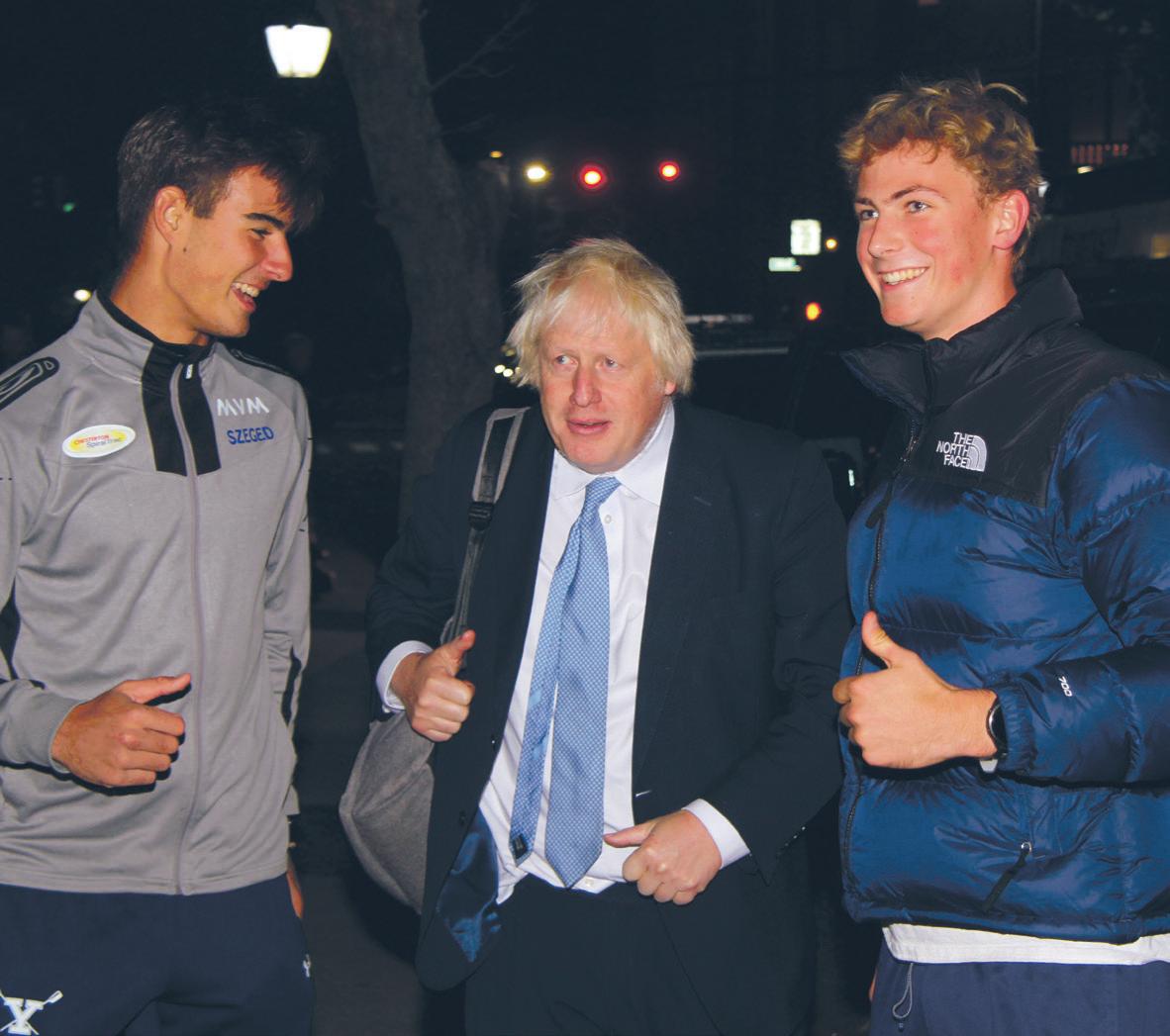
BY JAEHA JANG STAFF REPORTER
Boris Johnson, a former Conservative prime minister of the United Kingdom, spoke to Yale students Thursday evening about the importance of the Anglo-American alliance.
In the same talk, Johnson praised President Donald Trump and urged students to defend academic freedom and free speech. He contrasted American and British universities with those in “Moscow, Pyongyang, Tehran or Beijing.”
“The difference between our universities and those universities around the world is absolutely fundamental because our universities –– Oxford, Yale –– these are places of academic freedom,” Johnson said.
“And intellectual freedom is the root
BY ANYA GEIST STAFF REPORTER
Michel Devoret, a Yale professor emeritus of applied physics, won the 2025 Nobel Prize in physics alongside John Clarke and John M. Martinis, researchers from the University of California, Berkeley, for their work in quantum physics.
The team’s award-winning research was conducted in 1984 and 1985 at the University of California, Berkeley, when Devoret was a postdoctoral fellow and Martinis was a graduate student in Clarke’s research
group. According to a Nobel Prize press release, the trio will receive 11 million Swedish kronor, which is equivalent to about $1.1 million, to be shared equally.
“Michel’s work embodies the spirit of scientific discovery that defines Yale,” Michael Crair, the vice provost for research, wrote to the News. “His pioneering research and deep Yale collaborations have not only advanced the field of quantum science, but have also inspired generations of young scientists to explore SEE NOBEL PAGE 5

BY SABRINA THALER STAFF REPORTER
Administrators announced TA leading New Haven refugee resettlement agency will not receive migrants through the federal government’s refugee admissions process in the new fiscal year.
The board of directors of Integrated Refugee and Immigrant Services, or IRIS, voted unanimously on Sept. 16 not to participate for the 2025-26 fiscal year in an international resettlement agency’s work with the Preferred Communities Program in the federal Office of Refugee Resettlement, according to IRIS’ executive director, Maggie Mitchell Salem.
Salem said the decision came in response to the Trump administration’s efforts to classify Afrikaners, a population of Dutch-descendant white South Africans, as refugees

and prioritize their resettlement while operations of the U.S. Refugee Admissions Program — which partners with the Office of Refugee Resettlement to oversee refugee entry — remain otherwise suspended.
Church World Service, the international resettlement agency that oversees IRIS, had asked IRIS in early September if its members would join the agency in pledging support to refugees who enter the U.S. through the Preferred Communities Program, Salem added.
The decision marks the first time in IRIS’ 43-year history that the organization will not participate in refugee reception through the U.S. Refugee Admissions Program, Salem said.
“The refugee program is not about accepting people who you feel moral alignment with,” Salem
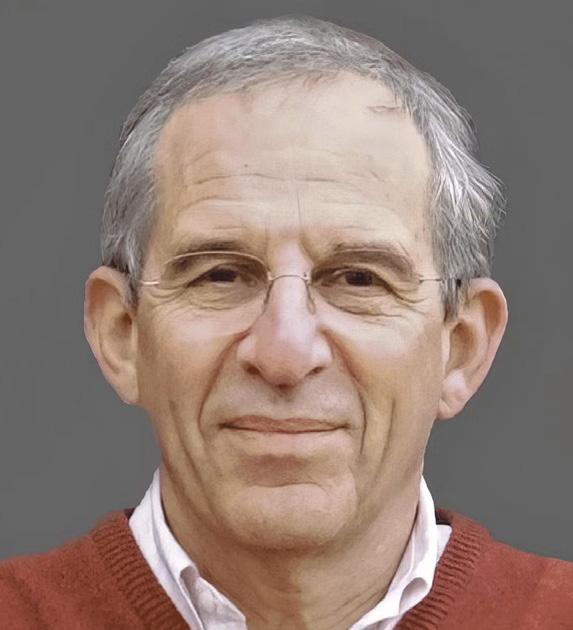
BY
JERRY GAO AND ASHER BOISKIN STAFF REPORTERS
Until Tuesday, students can vote on dishes for two food stations in Commons: Lotus and Pasta e Basta. The winning options will appear in the next menu cycle.
For Lotus, students can choose between three bowl options — Korean fried chicken or tofu; chicken tikka masala or dal makhani; and, thirdly, sauteed jade chicken or tofu with snow peas and green beans in a white sauce. At Paste e Basta, students can select one of three new house-made pasta sauces — wild mushroom cream, heirloom tomato or delicata squash.
“The dishes which receive the most votes will be offered at those stations after Fall break,” Michael van Emmenes, a top Yale Hospitality administrator, wrote in an email to the News.
The announcement came on Tuesday in an email sent by the Yale College Council dining policy team. The email also stated that students will be able to add cheese to their dishes at the Pasta e Basta station.
The new system, which allows students to shape the rotating menu, follows a period of significant change for Commons dining. Beginning this semester, students on meal plans can no longer use swipes for lunch at Commons or the grab-and-go Bow Wow, instead paying with dining points. Each Commons meal
October 10, 1947 / Columbia’s Blimp Leaflets Unnoticed As Psychological Aerial Attack Fails
Columbia’s elaborately planned aerial attack to demoralize the student body of Yale before tomorrow’s game fizzled yesterday afternoon when a blimp passed virtually unnoticed over New Haven and unsuccessfully attempt to bombard the campus with 5,000 “Safe Conduct Passes” to Baker Field.
Only a handful of the orange, green, and pink papers reached a few bewildered Elis. The Lion bomber was more accurate in hitting his target at the bowl, however. Football practice was momentarily interrupted when members of the team stopped to read and tear up the notices in amused disgust.



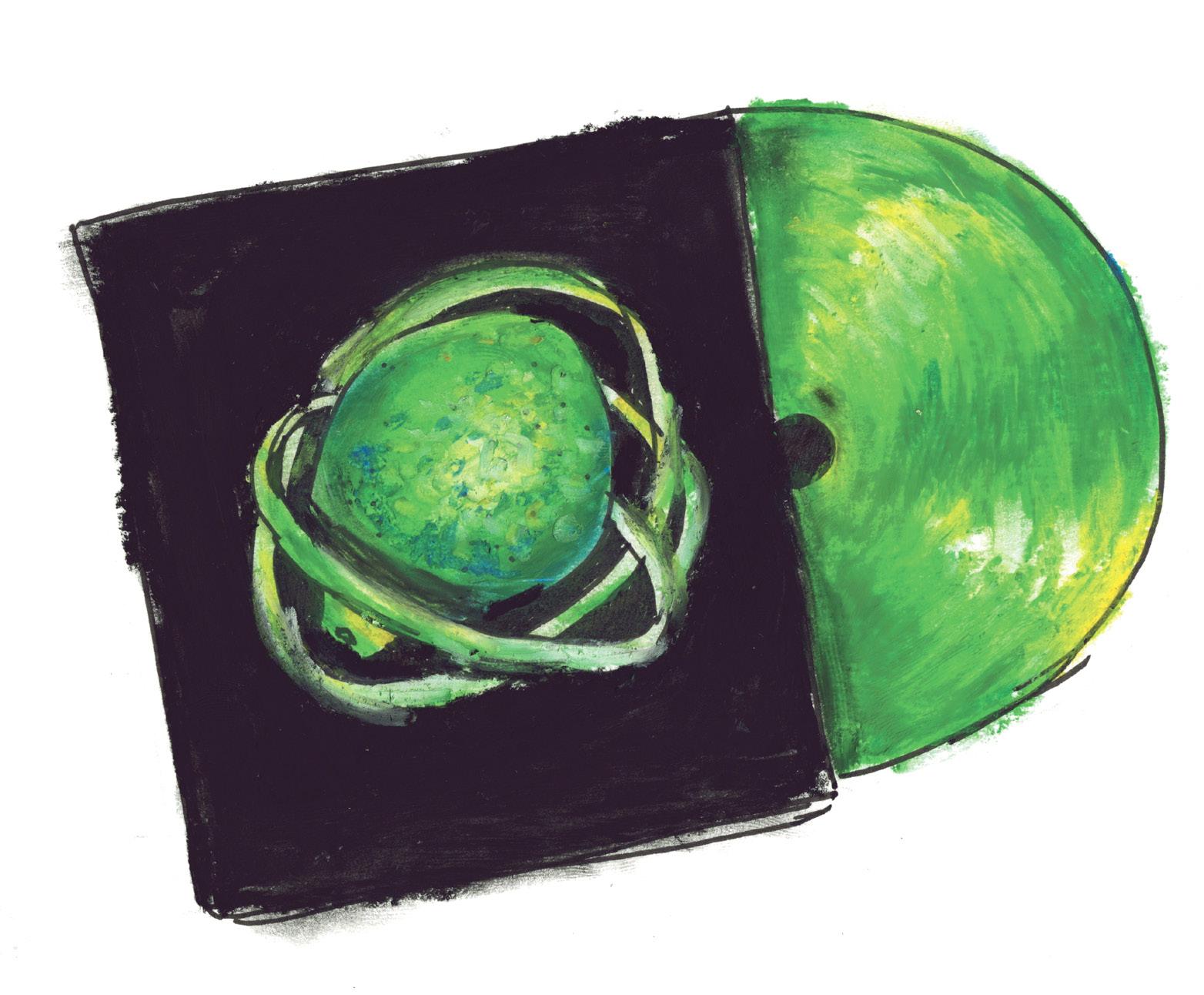
By Olivia Cyrus
Two weeks ago, while walking to a Spanish class, I passed Cross Campus. There, I saw a student manning a table and grilling what I thought to be an assortment of meats. Before his table was a white, hand-painted sign that said “Yale Sandwich Guy,” and I thought about how cool of a feature on student life it would be to write about him. The next day, however, when I walked the same route, I didn’t see him and was so disheartened that I never got his contact information. While visiting my friend in Pierson for dinner, I saw the same sign outside of an entryway and asked my friend if she knew him. She didn’t but instead gave me the contact for someone in his entryway. The guy in his entryway gave me contact information for Wyatt Lake ‘28, and we later connected and interviewed for the article.
During the interview, he told me that he’s a self-proclaimed “Grill Dad at Heart.”
Read “Student serves up bacon-egg-andcheeses around campus” on PAGE 12.
• A photo essay on Oct. 3 about the “Celestial Garden” exhibit misstated the name of the photographer who took the photos. His name is Braden Mathis, not Brayden Mathis.
• An article on Oct. 3 about administrators’ plans to respond to the endowment income tax hike misrepresented one of the measures Yale took to tighten its budget over the summer. The University decreased the pool of funds available for staff salary increases; it did not decrease the pool of staff eligible for salary increases.
• An article on Oct. 3 about the Yale New Haven Health system’s settlement with Prospect Medical Holdings incorrectly implied that Prospect Medical Holdings counter-sued Yale University. Prospect sued the Yale New Haven Health system, not the university, which is a different legal entity.
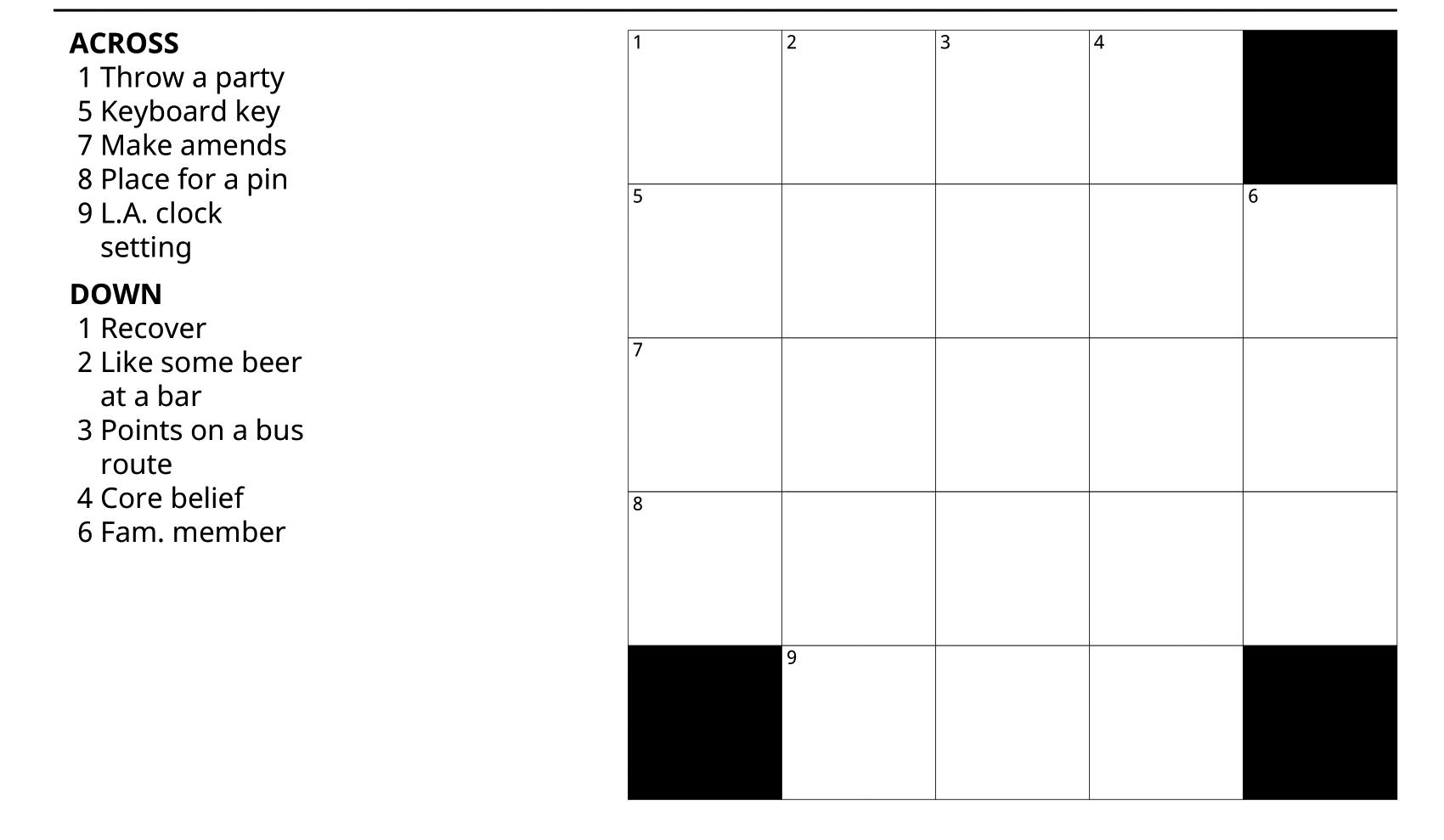

STAFF COLUMNIST
JOSHUA DANZIGER
How are young men doing? Terribly.
We are unemployed, depressed and sexually inactive. We are struggling in education, job placement and social flourishing. We are the perpetrators of our country’s recent mass shootings and political attacks.
After many generations of male dominance in almost every public realm, it can be hard to comprehend that men today are struggling. The collapse of young men’s purpose and role in society is a personal crisis and a civilizational one: when male ambition is left to rot, it ferments violence, despair and withdrawal. Society must take steps to avoid paying a large price.
In nationwide Department of Education enrollment statistics, women comprise almost 60 percent of university graduating classes. In grade school, girls earn better grades, hold more leadership positions and speak up in class more than boys. Boys are more likely to engage with drugs and alcohol and get in fights and are significantly more likely to be suspended. Female successes in education are hard fought and well deserved, yet should not prevent us from addressing struggling men.
Beyond education, young men are struggling in almost every aspect of life. According to the Child and Adolescent Health Measurement Initiative, 28 percent of men younger than 17 experience mental, behavioral or developmental health challenges, compared with only 23 percent of women. In 2023, men made up half of the population, but comprised 80 percent of suicides recorded by the CDC. A 2024 study by the Survey Center for American Life found that 15 percent of men have no close friendships, a fivefold increase since 1990. Meanwhile, male employment rates are steadily declining, with fewer working-age men participating in the labor force each year.
A new term has arisen to describe these unemployed men: NEETs — or, not in education, employment or vocational training. In common terms, NEET men are what one may consider a “loner” or a “lost boy.”
Some of these men graduated college in 2024 or 2025 to a difficult job market, and chose to remain jobless after they were unable to place into a job that matched their expectations. Women, experts say, are more likely to be flexible with job offers and accept what positions are available. Broadly, the job market for men and women with advanced degrees has slowed as AI threats loom over white collar hiring and tariffs have compressed the outlook of white shoe corporations. Yale graduates are not shielded from these trends, with the News reporting declining employment rates in some specialities.
Men have the capacity for great evil. More irritable, marginalized and sexually unsatisfied men are not good for society. Look no further than Luigi Mangione.
Jobless for over a year, Mangione isolated himself from the world months prior to shooting United Healthcare CEO Brian Thompson.
His mother reported him missing to the San Francisco Police Department after not hearing from him for months. Like many men, Mangione felt the only way out of our imperfect system was violence. So he chose murder.
Mangione is the extreme of a widespread problem. While some disillusioned men choose murder — like Mangione, or the Parkland High School shooter Nicholas Cruz — others turn to the less extreme. Self destruction is a common outlet — suicide and addiction rates are growing more in young men than in almost any other demographic group. Yet, withdrawal may be the most common symptom of the damaged young man. We all know people who have seemingly dropped off the face of Earth to waste away their days watching porn and playing video games in their parents basement. Any version of disenfranchisement sparks the wrong trajectory; for Mangione, it started with withdrawal and ended up deadly.
If you look across history, you’ll notice a trend: large groups of unemployed, underemployed or idle young men have been the catalysts for revolutions. It was underemployed apprentices and journeymen who stormed the Bastille. It was unemployed young men who Hitler organized to overthrow the Weimar republic and consolidate power in Germany. It was educated but unemployed young men who spearheaded the overthrow of Mubarak and Ben Ali in Egypt and Tunisia during the Arab Spring. If we want to save young men, we need to start now. Curb pornography and social media for men under 18. Revive vocational training across the country, especially in cities hollowed out by de-industrialization where addiction runs rampant. Teach boys to read, and expect them to excel. Stop teaching that masculinity itself is bad. Mandate national service, where men learn respect for something greater than themselves. Restore chivalry as an admired virtue, not a punchline. Remind young men that love, sex and marriage are still worth fighting for, and that they have responsibilities to their wives and mothers, to their communities and country, and to God. These solutions are easy to put into words, but hard in practice. The culture awakening required to save young men may only be possible with a strengthening of male employment opportunities, which seems unlikely as AI takes jobs.
Male idleness does not only threaten the individual flourishing of those becoming “couch potatoes,” “lost boys” and NEETs. Historical context shows us that idle men threaten the fabric of our society, and perhaps our republic. For the first time in history, the question is not how to restrain male ambition, but how to reignite it.
JOSHUA DANZIGER is a sophomore in Trumbull College studying History and Economics. His monthly column “Power” explores geography, demography and the state. He can be reached at joshua.danziger@yale.edu.

STAFF COLUMNIST
MANU BOSTEELS
America was built on individualism, or so the story goes. Rugged individualism, pulling yourself up by the bootstraps, the emphasis on entrepreneurship and HoratioAlger-style independence — the mythology of American citizenship is composed from stories celebrating the ability of the individual to fulfill themselves on their own.
As a matter of political philosophy, we, like many other countries, protect individual rights to protect the people from government overreach and maintain the mixed regime that our exceptionalism presupposes. But our politics and practices go further. They are built on the individual not just as a bearer of rights, but as the sole fundamental unit of society; in this vein, policy ideas are constantly evaluated on the basis of individuality. How does policy X affect an individual’s freedom to express their religion? How does policy Y burden an individual taxpayer?
AS A MATTER OF POLITICAL PHILOSOPHY, WE, LIKE MANY OTHER COUNTRIES, PROTECT INDIVIDUAL RIGHTS TO PROTECT THE PEOPLE FROM GOVERNMENT OVERREACH AND MAINTAIN THE MIXED REGIME THAT OUR EXCEPTIONALISM PRESUPPOSES.
This individualist mindset, built into the core structure of U.S. governance, is now inseparable from the American identity. I propose that our wholehearted devotion to the individualist perspective goes too far.
Much of the rest of the world, in contrast to the United States, has come to terms with the fact that the common good of the people is best served by some combination of individualism and commitment to community welfare.
For instance, the United States is the only member of the Group of Seven nations not to guarantee universal healthcare to its citizens. I’m led to believe that, in the United States, universal healthcare has never
come about primarily because we are incapable of looking beyond the hurdle that taxes might increase. The simple counterargument, an appeal to the communal good, to general welfare, is far outside the perimeter fence of American politics.
THE SIMPLE COUNTERARGUMENT, AN APPEAL TO THE COMMUNAL GOOD, TO GENERAL WELFARE, IS FAR OUTSIDE THE PERIMETER FENCE OF AMERICAN POLITICS.
In America, we do exceedingly little to prevent the leading cause of death for children and teens, because 234 years ago we declared the individual right to bear arms. Lacking the ability to prioritize the community over the individual, we have no recourse to take weapons of mass murder out of the hands of the general public. In America, community safety is understood — like everything else — through this same individualistic filter; the community is nothing more than a loose set of individuals. Therefore, community safety is as simple as putting weapons in the hands of each American so they can protect themselves. The American community as an end in itself is an empty concept. So what about our individual rights? Pitched as the redeeming value of American individualism, I think back to the promises of equality, fairness and prosperity I heard as a kid: the rights to freedom of speech; due process; protections from government searches and seizures, guaranteed to all Americans by the individualist structure of the Constitution. But the practical commitment
PITCHED AS THE REDEEMING VALUE OF AMERICAN INDIVIDUALISM, I THINK BACK TO THE PROMISES OF EQUALITY, FAIRNESS AND PROSPERITY I HEARD AS A KID.
to and consistency of those promises is less clear. Every day, I read about and witness the free speech of undocumented immigrants, permanent residents, international students, American citizens and elected officials alike attacked by immigration authorities and the federal administration. A secret police force is patrolling the United States in masks and civilian clothing, abducting people off the street for publishing articles in student newspapers, with complete disregard for due process and even human dignity. And then I see the individual right to free speech cited by the Supreme Court to allow massive corporations, dark money groups, and political action committees free rein to dominate our elections, disenfranchising the American citizenry, because SpaceX, Citadel and Palantir deserve the same right to free expression as their employees. The only communities, then, worth giving equal consideration as the individual are ones backed by billions of dollars.
All this to say: we give up a lot in the name of individualism, and it’s not clear that we — the American people — are getting nearly as much back.
IT SEEMS CLEAR TO ME THAT THE COMMUNITY IS SOMETHING GREATER THAN THE PLAIN SUM OF ITS PARTS.
Simply put, it seems clear to me that the community is something greater than the plain sum of its parts. Therefore, the individualist atomization process, where community policy is picked apart into its effects on the individual citizen, has become a tremendous limitation on American public policy. Individualism, once the supposed guarantor of American exceptionalism, might just be the crutch preventing its true realization.
MANU BOSTEELS is a sophomore in Pauli Murray College studying Philosophy and Math. His column “A Yale Life” runs biweekly and explores takes from the student perspective on campus and academic experiences and broader political developments. He can be reached at manu.bosteels@yale.edu.
Editor’s note
The Yale Daily News on Tuesday amended nine articles authored by one staff reporter that were published between October 2024 and May 2025. The articles were found to each contain at least one paragraph that closely matched language published earlier by other sources, without sufficient attribution. In the course of editing three different articles by that reporter this semester, News editors found language similar or identical to text previously published online. None of the material in question was ultimately published in the News. After the third instance, editors undertook a review of the reporter’s previously published articles, identifying the nine articles we are amending today. Editor’s notes have been added to each of the articles to reflect
changes made. The reporter no longer writes for the News. Original writing and accurate attribution are essential to the News’ independent journalism. As an institution devoted to truth and accountability, we must be upfront about our shortcomings.
Four of the nine amended articles appeared in the News’ print edition. An article last November about the Yale-Harvard game ticket lottery contained an unattributed paragraph that matched nearly verbatim a paragraph in a Harvard Crimson article. A January article about a TikTok ban contained three paragraphs that matched, nearly verbatim and without attribution, language from an ABC News article. An article in February about the Grand Strategy program included four paragraphs nearly identical to text in a press release
from the Jackson School. An article about the lightweight crew team, published in April, contained several paragraphs with language identical or similar to a Yale Athletics news release.
We regret that those instances were not identified during the editing process. As editors of a student newspaper, it is our duty to train our staff in the high standards, often unfamiliar to newcomers, that earn your confidence. In recent years, the News has not had a plagiarism and attribution policy in place. We apologize for falling short. We are committed to setting clear standards and ensuring that they are met.
Ariela Lopez ’27, Editor in Chief; Lily Belle Poling ’27, Print Managing Editor; and Ethan Wolin ’27, Print Managing Editor
“I wish that every day was Saturday and every month was October.”
CHARMAINE J. FORDE AUTHOR
Yale College or Yale Law School.”
He added: “This has been our consistent practice for many years.”
‘Merit and not blood’
According to Amar, legacy preferences at the Law School were gradually dismantled over the course of more than a decade by the faculty admissions committee, a group of professors formerly tasked with directly evaluating applicants.
The News could not verify the current workings of the evaluation process.
Amar said that he served as chair of the faculty admissions committee from around 2006 to 2020, for much of the period during which these changes occurred.
For many years, he said, applicants were assessed using an internal “12-point system,” in which faculty readers awarded scores based on academic performance, recommendations, writing, work experience and other factors.
Amar recalled that legacy applicants historically received an automatic additional point — a small but potentially decisive boost, he said.
He said that under the previous system, “perhaps five applicants each year” were admitted in part because of their legacy status.
Amar explained that this bonus was first reduced and later eliminated entirely. First, they got rid of the extra point, but gave legacy applicants an additional read. In recent years, the Law School also eliminated questions about family alumni or faculty ties from its application forms. By the end of the process, Amar said, the children of alumni received no preferences at all.
The News could not confirm the exact year that these questions were removed.
Yaffe noted that all faculty members were once required to participate in admissions by reading about 50 applications every year. Each file, he explained, was evaluated by two professors and given a numerical score.
Yaffe also said he does not recall any formal announcement of the
change being “publicly available.”
“I don’t believe it was announced before the change in policy that we did take legacies into consideration,” Yaffe said. “Why would you make it publicly available after the change?”
He later added in an email to the News that then-Law School Dean Heather Gerken “was a strong supporter of changing the policy that gave legacies a boost.”
Law School spokespeople did not respond to the News’ requests for comment from Gerken, who stepped down from the deanship over the summer and does not have contact information available on her Law School webpage. Gerken, now named an emeritus Sterling law professor, is set to become president of the Ford Foundation in November.
Amar said the move away from legacy preference had backing within the Law School’s faculty.
“The faculty has been overwhelmingly supportive — focusing on individual merit and not blood,” he said.
“Nothing was done without the endorsement of the dean of the Law School, the support of the admissions dean, the general acquiescence, support of the admission faculty admissions committee, in close consultation with the faculty as a whole,” Amar said in a later interview.
Eleven Yale Law School professors declined to comment to the News for this story. Miriam Ingber LAW ’04, the Law School’s associate dean for admissions, did not respond to the News’ request for comment.
‘It’s a surprise to me’ Joel Greenberg LAW ’73, a donor to the Law School, shared that he was not aware of the change in admissions policy. Greenberg said he did not anticipate detailed updates from the school unless he actively sought them out.
“If I had children who were possible candidates for the law school, I think I could very easily have gotten information about what the policy was now,” he added.
Last December, another Law School alumnus wrote to the Law School admissions office — in an email exchange obtained by the News
— that his daughter had applied to the Law School. He noted that he was a “proud member” of his class.
The admissions office responded to the alumnus’s email about an hour later, thanking him for reaching out and adding that they would “ensure” his email was added to his daughter’s file. The response did not indicate that the school does not consider legacy status in assessing their applicants.
Ferro, the Law School spokesperson, wrote in a statement to the News that alumni who contact the admissions office “receive a courtesy reply and the Admissions Office notes the interaction.”
“It has no impact on the assessment of the application and provides no advantage in the admissions process,” he wrote.
When the alumnus’s daughter was waitlisted from the Law School in March, the alumnus — who, according to his daughter, had consistently donated to the Law School — received an unsolicited, personalized email from Gerken. “I wish matters could have turned out differently,” Gerken wrote in the email, adding that if the daughter did well at another law school in the next year, “she might consider the option of transferring to Yale.”
Gerken did not mention in her email that the school does not take legacy status into consideration in its review process.
Destiny Lopez LAW ’21 worked in the admissions office during her time at the Law School as a diversity representative and was the president of the First Gen Low Income Partnership, a group for students who mark the first generation of their family to attend college. She said she also did not know about the shift away from legacy preference.
“It’s a surprise to me,” Lopez said. She said she did not remember admissions office staff members telling her and her colleagues about legacy preferences. She added she had assumed they were in place, as it was a typical prac-
tice at her alma mater, Stanford, and at Yale College as well.
“I do think it’s something positive that a lot of students support,” Lopez said. “It’s very confusing why they wouldn’t choose to make that known.”
Lily Man Lai Fan ’01 LAW ’04, a donor to the Law School, said she was not aware of the shift but expressed support for it once informed in an interview.
She added that she does not think donor expectations are tied to admission.
“I don't think donors go there or make donations expecting their children to get in, because it's such a small pool and it’s such a high bar,” Fan said.
As for the lack of an announcement, Fan said, “Do they need to announce it? I don't know. I mean, I think it’s hard enough for the Law School to raise money because of the small pool, and most people are professors.”
“I’m not offended by it,” she added. “I never even knew there was a legacy at one point.”
Outside Law School walls Yale College, by contrast to the Law School, continues to advantage students with legacy status in undergraduate admissions and is transparent about doing so. According to the Yale College class of 2028 profile, 11 percent of students have legacy affiliation.
Yaffe suggested that differences between undergraduate and professional education could explain the divergence.
“Parents play a much more substantial role in the life of undergraduates than they play in the life of graduate students,” he said. “So that would be an argument for thinking that there's some kind of good reason to have legacy admissions for undergraduates and no similarly good reason to have it for law students.”
A 2022 Pew Research Center survey found that three-quarters of Americans believed that legacy status should not be considered in college admissions decisions, with sup-
port for ending legacy admissions cutting across party lines. Amherst College and Wesleyan University eliminated legacy preferences in 2021 and 2023, respectively, while Virginia in July 2024 became the first state to outlaw them entirely at its public universities.
Undergraduate Dean of Admissions and Financial Aid Jeremiah Quinlan said he does “not comment on admissions policies at other schools, including Yale’s graduate and professional schools.”
The News reached out to Yale’s other graduate and professional schools about their admissions policies. Representatives of the David Geffen School of Drama, the School of Medicine’s M.D. program, the School of the Environment and the Divinity School all said they do not consider legacy status.
Maureen Farrell, a spokesperson for the Graduate School of Arts and Sciences wrote in a statement to the News: “While admissions decisions in the Graduate School are made by departmental admissions committees, the Graduate School application does not collect legacy information.”
Jared Liu, the assistant admissions dean at the Jackson School of Global Affairs, wrote in an email that the school likewise does not consider legacy status, noting that it was founded in 2022.
“So it would be unusual for there to be a legacy situation that quickly,” Liu wrote.
Spokespeople for the University’s remaining graduate and professional schools — the School of Public Health, the School of Management, the School of Art, the School of Architecture and the School of Music — as well as Yale’s central media office did not respond to the News’ requests for comment on their admissions policies.
Yale Law School is located at 127 Wall St.
Contact SASHA HUROWITZ at
of all creativity and prosperity and, as I’ve argued to you before, there’s nowhere, if you look at the record, where that spirit blazes more brightly than Yale University.”
Johnson also discussed foreign policy, arguing that the United States and the United Kingdom should stand up together against what he described as autocratic states. His wide-ranging speech also touched on topics ranging from the Israel-Hamas war to how the Boston Tea Party relates to Brexit.
The event was organized by the Buckley Institute and the Young America’s Foundation. The Buckley Institute brands itself as the “only organization dedicated to promoting intellectual diversity and free speech at Yale.”
Around 400 people attended the talk, which took place in Sheffield-Sterling-Strathcona Hall’s large lecture space. The event was accompanied by heavy security: Attendees were scanned by metal detectors upon entrance, and liquids, foods and bags were prohibited.
Introduced by William Barbee ’26, the president of the Buckley Institute’s student program,
Johnson started his speech by praising Yale’s “amazing record” of intellectual prudence and alumni distinction, including William Howard Taft to Hillary Clinton –– “and JD Vance,” he added enthusiastically. The Western liberal intelligentsia has lost its models, Johnson said, and an institution like Yale could provide inspiration.
The former British prime minister also condemned pro-Palestinian protests, which he said go against Israel’s “legitimate attempts” to stop attacks like that of Oct. 7, 2023, from happening again. He also condemned Russia, China and North Korea for their involvement in the war in Ukraine. After more than three years of the Ukrainian war, Johnson added, the West is “doing nothing like enough to prove Putin wrong,” referring to Vladimir Putin, the president of Russia.
Johnson then praised Trump, whose attacks against the late-night TV host Jimmy Kimmel –– “never heard of him before,” Johnson said ––and other news outlets are incomparable to Putin’s suppression of journalists in Russia.
“We have to remember the difference between our side and their side,”
he said. “You listen to the moaning of the liberal media about Donald Trump’s sometimes boisterous treatment of journalists. It’s a terrible problem, but I’m one of the very, very few European politicians who’s willing to say that I like Donald Trump.”
Towards the end of his speech, however, Johnson emphasized the importance of academic freedom at universities. Since taking office, Trump has cracked down on universities, freezing federal research funds and pushing schools such as Penn, Columbia and Brown into financial deals and settlements with the White House.
The topic of academic freedom also came up during the subsequent question-and-answer period. University students in the West should campaign for intellectual and academic freedom, Johnson said, as well as the rights of every student, lecturer and professor to say and write “what they always think in their heart ––the facts.”
Yale has a good record when it comes to intellectual and academic freedom, Johnson said, as exemplified by the Buckley Institute’s mission.
Johnson also dedicated a portion of his speech to praising what
he described as American values, recounting that he sat next to Apple CEO Tim Cook, Meta CEO Mark Zuckerberg, Amazon founder Jeff Bezos and “chief bunny of DOGE” Elon Musk at Trump’s inauguration and listing their respective net worths.
“And then it was me! I slightly brought down the average,” Johnson quipped, mentioning his career in public service and journalism.
After talking to these “tycoons of American capitalism,” Johnson said, he realized that the United States has an “extra sense” of freedom and possibility. The American concept of freedom was exemplified 250 years ago during the American Revolution, he said, adding that he “would have done” the Boston Tea Party, too. The spirit of the Boston Tea Party –– not wanting to be ruled overseas by unaccountable politicians –– was one of the reasons why he favored Brexit, Johnson added.
When asked about a problem faced by youth in both the United States and the United Kingdom, Johnson pointed to the difficulty that British youth face in climbing the “property ladder,” such
as by acquiring homes. When he asked the audience whether a similar problem exists in the United States, too, the audience generally agreed, with various nods and verbal “yes” responses.
“How do you believe in capitalism, how do you support the capitalist system if you struggle to acquire capital in that way?” Johnson asked.
“That, I would say, is the single biggest problem. We got to fix it.”
Daniel Jung ’28, who attended the talk, said that Johnson was a charismatic speaker with “many anecdotes to talk about.”
“He definitely is able to control the room,” he said. “He very much showed his appreciation for the students and intellectual prowess this university has, which is a good way to be welcomed.”
Last year, the conservative political commentator Ben Shapiro visited Yale as part of the lecture series jointly hosted by the Buckley Institute and the Young America’s Foundation.
Contact JAEHA JANG at jaeha.jang@yale.edu
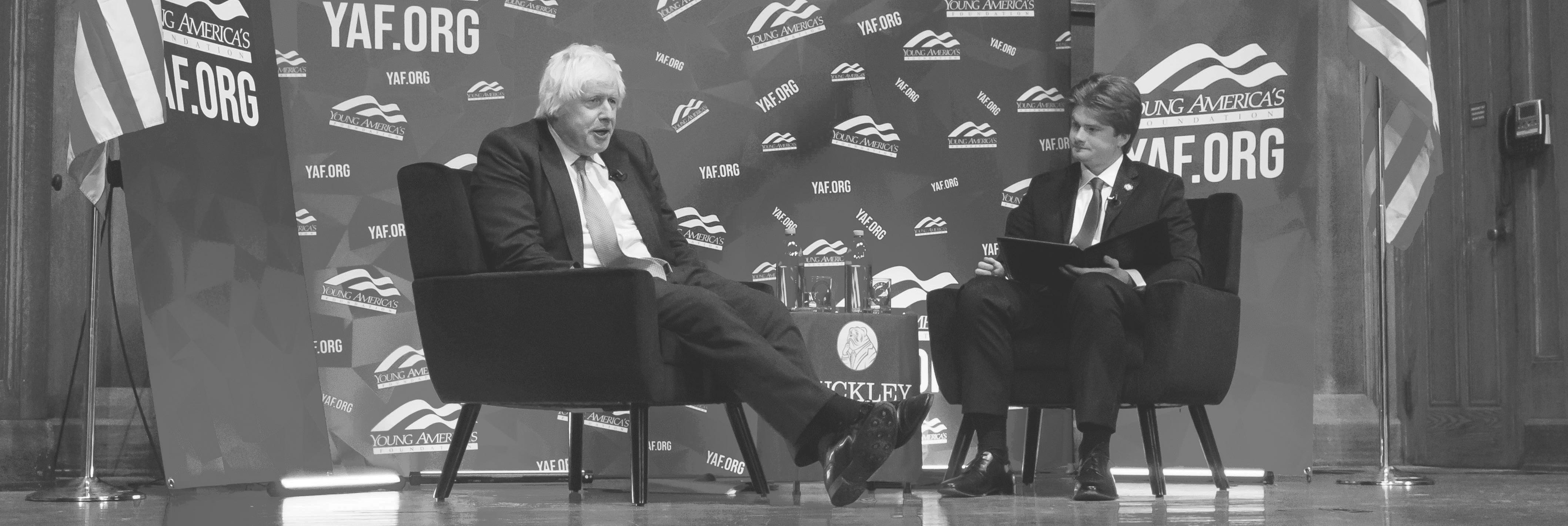
“October was always the least dependable of months... full of ghosts and shadows.”
JOY FIELDING CANADIAN NOVELIST AND ACTRESS
NOBEL FROM PAGE 1
the unknown with the same rigor and curiosity that have marked his extraordinary career.”
Devoret and his colleagues earned their Nobel Prize for experiments demonstrating quantum phenomena on a scale that was visible to the human eye. One phenomenon, quantum tunneling, describes the ability of a particle to go through a barrier rather than over it. The other, energy quantization, is the idea that subatomic particles only emit or absorb energy in discrete amounts.
Using a chip with a superconducting circuit, the team was able to visualize the quantum effects on a macroscopic scale — a feat that challenged traditional assumptions about quantum mechanics.
“They answered the basic science question,” Sohrab IsmailBeigi, the current chair of the Applied Physics department, said,
“and in the process, they created an approach and a protocol and a way of doing the experiment that had a really big impact.”
Ismail-Beigi remarked that Devoret was a great colleague, who, in addition to being very knowledgeable about his subject, was good at explaining it to others.
Devoret joined Yale as a full professor in 2002, according to A. Douglas Stone, a professor of applied physics and the deputy director of the Yale Quantum Institute. Stone was chair of the applied physics department when Devoret joined. Since then, Devoret played a key role in developing the study of quantum technology at Yale alongside other physicists, such as Steven Girvin and Robert Schoelkopf.
“The three of them really pioneered the technology that's now being used by Google and IBM and Amazon and other places,” Stone said. “The mod -
ern prototypes of quantum computers are being built with Yale technology.”
Physics department chair Sarah Demers, who served as the director of undergraduate studies from 2022 to 2024, recalled hearing students speak with enthusiasm about the opportunity to work with Devoret and Schoelkopf.
“Not only was it cutting edge research done by faculty members, but the students were absolutely along for the ride,” Demers said. “They opened up their labs — and still do in YQI — to a lot of undergraduate researchers.”
Devoret was also among the founding members of the Yale Quantum Institute, referred to as YQI, which was established in 2014 to create infrastructure for Yale’s research into quantum technology and computing, Stone said. Quantum research, he explained, is aimed at solving problems in computing that were
once considered unsolvable. Countries around the world are racing to advance quantum research and technology today, Stone added, because of how important the work is. The United Nations has designated 2025 the International Year of Quantum Science and Technology.
“It’s a new kind of technology that goes beyond the transistors you have in your cell phone, and fiber optics and so on,” Stone said. “It might be qualitatively more powerful for both computing and sensing, for measuring very, very small changes, which can be very important for all sorts of things, for defense, for the Global Positioning System.”
Though Devoret’s Nobel-winning research dates back to the 1980s, Stone thought that the quantum technology “gold rush” of 2025 could be traced back to research like Devoret’s, which laid the groundwork for continuing research.
Currently, Devoret also serves as the chief scientist for quantum hardware at Google Quantum AI. Martinis, who previously worked on quantum technology at Google, has since cofounded Qolab in 2022, a quantum computing startup.
“Yale proudly cheers a trailblazer of a technology so consequential and far reaching that it may affect the life of every member of the planet,” University President Maurie McInnis said in a press release. “The work for which Professor Devoret is recognized, and his continued work over two decades with his Yale colleagues and others, helped launch a revolution in quantum mechanics.”
Devoret was born in Paris.
Jaeha Jang contributed reporting.
Contact ANYA GEIST at anya.geist@yale.edu.
SALOVEY FROM PAGE 1
published in 2026, he wrote. Alumni recall fond memories of ‘Easy A Salovey’ Alumni who took Salovey’s courses as undergraduates expressed enthusiasm for his return to the classroom, fondly recounting his dynamic teaching style and friendly personality.
Charlie Knoll ’92, who took “Introduction to Psychology” and “Psychology and the Law” with Salovey, wrote in an email to the News that Salovey and his “engaging, energetic, and funny” teaching style influenced him to major in psychology.
“I remember one time he
brought a brain to class and held it aloft for us,” Knoll wrote. “I loved it. Since then, I’ve gone on to a career in Medicine and the brain and neurological system have been key aspects of my work. I can still picture his holding the brain.”
James Mattucci ’90 –– who took “Introduction to Psychology” in fall 1986, Salovey’s first time teaching the course –– described the former University president’s teaching as “half-teaching, half-stand-up.”
According to Phoebe Roberts ’95, “Psychology and the Law” met at a different location every session until the end of add/drop period due to its popularity, even-
tually settling at Battell Chapel.
James Borin ’93 MED ’98, who took the class, wrote in an email to the News that while students staged various pranks in the memorably large lecture ––including dressing up as secret service agents to escort students to seats, unfurling a “huge banner” from above the lecture stage and streaking naked through the aisles –– Salovey handled the interruptions with grace and kept “everyone’s attention rapt.”
According to Abbe Walter ’92, “Psychology and the Law” was so popular that outside of the class, students sold t-shirts that read, “One in Four maybe more,” an apparent reference to a phrase traditionally used to
describe the LGBTQ+ demographic at Yale and, according to Walter, a tribute to the course’s popularity.
“Considering there was no social media or internet at the time, this class was definitely ‘a thing’ and that can be wholly attributed to how great a teacher Peter Salovey was,” Walter wrote in an email to the News.
The former president was also dubbed “Easy A Salovey,” according to seven alumni.
Cheryl Green ’93, who was Salovey’s mentee for the Mellon Mays Undergraduate Fellowship, praised Salovey’s kind personality. When she, who is in a wheelchair, couldn’t attend class because of a broken elevator,
Salovey came to her residential college, Jonathan Edwards, and taught her one-on-one until the elevator was fixed, she wrote in an email to the News.
Dozens of alumni agreed that Yalies will be lucky to learn from Salovey.
“I am happy that Dr. Salovey is returning to teaching –– it’s a wonderful coda to his tenure as University President and it will benefit so many Yalies,” Lauren Mangini ’03 wrote in an email to the News. Salovey was Yale’s 23rd president.
Contact JAEHA JANG at jaeha.jang@yale.edu
IRIS FROM PAGE 1
said. “You may not actually agree with them on much. The point is that they're a refugee, because they are being attacked for some aspect of who they are, and it is unsafe for them to remain in their country, and that does not apply to Afrikaners.”
On President Donald Trump’s first day in office in January, he signed an executive order indefinitely suspending new refugee admissions under the U.S. Refugee Admissions Program, which partners with the Office of Refugee Resettlement to facilitate resettlement through agencies like IRIS. On Feb. 7, another executive order exempted Afrikaners from the suspension, classifying them as refugees.
In May, the government admitted a group of 59 Afrikaner migrants for resettlement in the United States.
The United Nations defines a refugee as a person “who has been forced to flee his or her country because of persecution, war or
violence,” and who has “a wellfounded fear of persecution for reasons of race, religion, nationality, political opinion or membership in a particular social group.”
Trump has alleged that Afrikaners are victims of a “genocide,” citing violent crimes against white farmers as evidence of racial discrimination.
A South African court rebuked that claim, and data suggests that crime against white South Africans is not as outsized as Trump suggests, according to the country’s police minister.
“Afrikaners are not, as a group, politically persecuted,”
Daniel Magaziner, a professor of South African history at Yale, said. “They are not threatened with anything approaching genocide or something that would necessitate their being seen as refugees. Most Afrikaners are able to live very free and secure lives in South Africa.”
Salem said the government offers a range of visa programs that could help bring in Afrikaner migrants, and that using refugee
COMMONS FROM PAGE 1
now costs 11 points — equivalent to roughly $11.
Currently, Lotus serves crispy black bean tofu or crispy black bean pork and a variety of dumpling options. Pasta e Basta serves ragù alla pugliese and fresh asparagus pasta. Van Emmenes wrote that the new menu options were created by staff at Commons.
“The culinary team at The Commons created several Fall menu items for students to vote on at the LOTUS and Pasta e Basta stations based on seasonality, supply chain availability, food trends, and historically popular dishes,” Van Emmenes wrote, citing the Korean fried chicken bowl as one popular example.
Alongside the new voting initiative, the YCC dining policy team announced another change: Beginning after Oct. 15, students will be
able to add cheese to their pasta bowls at Pasta e Basta. That change came after advocacy from Branford Senator Santiago Giraldo ’28.
“Everytime I went to the pasta station at Commons I would always get a plate without cheese and it would irritate the hell out of me,” Giraldo wrote in a statement to the News.
“I’m a big cheese with pasta fan. So not having cheese with my meals was incredibly annoying and I know for a fact that I wasn’t the only one who felt that way.”
Santiago said that YCC dining policy director Thy Luong ’28 and deputy dining director Brendan Kaminski ’28 met with a representative from Yale Hospitality to bring his idea into reality.
Luong wrote in an email to the News that she and Kaminski met with Yale Hospitality on Sept. 23.
Luong said the meeting consisted of introductions between
status to grant them a pathway to citizenship “undermines the credibility” of the admissions program.
As Trump has emphasized Afrikaner admissions, his administration has also significantly contracted federal avenues for refugee entrance into the country. Salem said that since January, IRIS has received, per month, a family of six and a “couple of individuals” as the government limited the admission of non-white refugees and slowed the processing of Special Immigrant Visas, or SIVs.
Last year, IRIS resettled 900 refugees through the U.S. Refugee Admissions Program, Salem said. She explained that the nonprofit will continue to support the refugees it has resettled through federal admission in recent years, and that it will accept and help resettle people who successfully enter the country with SIVs, including Afghan refugees who were allies of the U.S. during the war in Afghanistan.
On Sept. 15, Salem sent an email to IRIS’ community sponsor organizations — which support reset-
tlement throughout Connecticut beyond staff-led work in New Haven and Hartford — asking for their input on whether the nonprofit should continue its reception of refugees through the federal government.
“Would you be willing to help resettle an Afrikaner family were we to ask you for support?” Salem asked the sponsor organizations in the email, which the News obtained. Danbury Area Refugee Assistance, or DARA, was among the sponsor groups that responded to Salem's request for input. Barbara Davis, the president of DARA, said that her organization’s leadership unanimously voted against IRIS’ renewed partnership with the Office of Refugee Resettlement.
“We didn't feel that those families could possibly have met the same bar, the very high standard of what it means to be a refugee in the United States,” Davis said of potential Afrikaner migrants. “To shut the door on the most vulnerable populations who have survived some of the most dire cir-
cumstances in the world, only to allow in others that have not, seemed unfair, and we didn't want to legitimize it.”
Davis explained that since Trump took office in January, DARA has “pivoted” its focus to fundraising to support IRIS in its work assisting newly-arrived families in New Haven and Hartford. IRIS lost millions of dollars in federal support for its resettlement work earlier this year.
“I always felt that the Refugee Resettlement Program was one of the most efficient and valuable public-private partnerships in this country,” Chris George, IRIS’ former executive director from 2005 to 2023, said. “We always trusted that the government would select people who meet the definition of ‘refugees.’”
The Episcopal Diocese of Connecticut founded the Interfaith Refugee Ministry, now IRIS, in 1982
Contact SABRINA THALER at sabrina.thaler@yale.edu
YCC officials and Yale Hospitality and discussion of other new initiatives, including the potential for “future pop-up ideas.”
“I’m really happy that Thy and Brendan have kept up and built upon the amazing relationship we began with Ms. Westwater and Ms. Hepburn-James at the beginning of the summer,” YCC President Andrew Boanoh ’27 wrote to the News, referring to Jodi Smith Westwater, Yale’s assistant vice president for hospitality, and Stacey Hepburn-James, Yale Hospitality’s senior director of residential operations.
Boanoh said he cast his vote for the Korean fried chicken or tofu and wild mushroom cream options and “would encourage all students to do the same.”
According to Luong, the dining policy team plans to meet with Yale Hospitality administrators once every three weeks, and is in commu-
nication with Yale Hospitality about bringing cookies back to Commons.
“We’re looking forward to fully advocating for student demands and, most importantly, collaborating with Hospitality to implement feasible change,” Luong wrote. Commons is located in the Schwarzman Center.
Contact JERRY GAO at jerry.gao.jg2988@yale.edu and ASHER BOISKIN at asher.boiskin@yale.edu
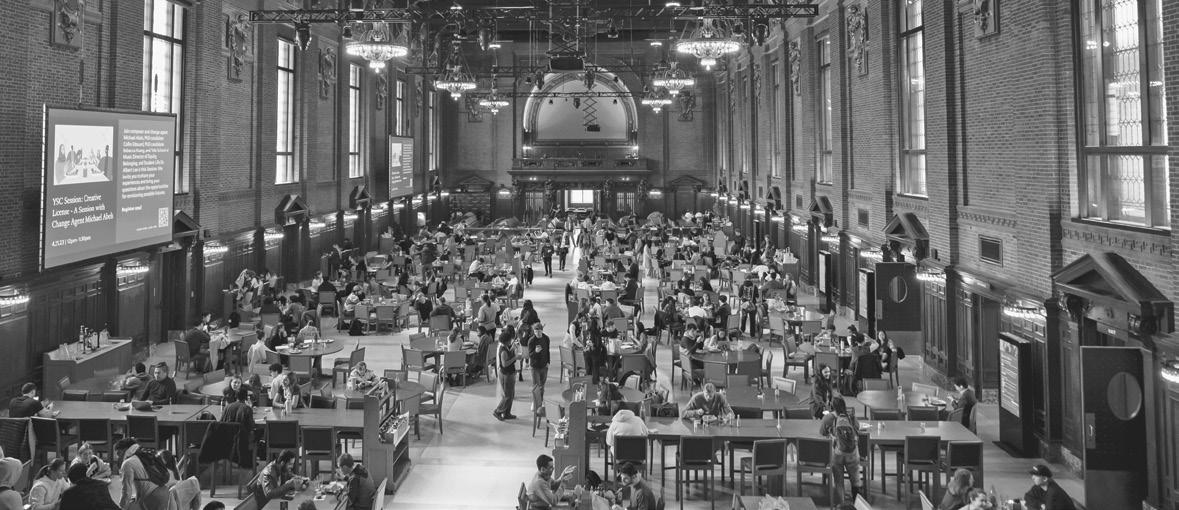
“Ye cannot rival for one hour October’s bright blue weather.”
BY ISOBEL M c CLURE AND SARINA SANGHVI STAFF REPORTER AND CONTRIBUTING REPORTER
University President Maurie McInnis spoke candidly with parents on Saturday, addressing concerns about the endowment tax hike and free speech at her Family Weekend talk.
During the event, she responded to a question about why Yale has not had its federal funding directly revoked by President Donald Trump. Yale and Dartmouth are the only Ivy League universities whose federal grants have not been punitively frozen since Trump took office in January.
McInnis said there was “no obvious answer” to why Yale has been spared from the funding cuts Trump has made to its peers. She described Yale as a “leader” in respectful dialogue on college campuses, referencing the 1975 Woodward Report — a document promoting free expression and civil discourse on campus.
“Whether it is that long tradition, the long tradition we have of encouraging open debate from something like Yale Political Union or the Buckley Institute, or whether it’s we’re at the end of the alphabet, I don’t have that answer,” McInnis said.
“We are lucky that Mr. Yale’s name started with a Y,” Yale College Dean Pericles Lewis, who was speaking at the same event as McInnis, said.
Parents who listened to McInnis’ speech expressed appreciation for her emphasis on the importance of free speech and cited confidence in McInnis’ ability to navigate budgetary concerns.
During the opening portion of her address, McInnis described universities’ historical partnership with the federal government. She described how investments in universities have facilitated societal progress, referencing scientific and technological discoveries, as well as artistic pursuits and historical research.
Later in her remarks, McIn -
nis addressed the impending increase to the tax on the University’s endowment investment gains, which is slated to rise from 1.4 percent to 8 percent on July 1, 2026, as was laid out in a provision in the Republican taxand-spending bill signed into law by Trump on July 4. She also warned about threats to federal research funding, including grants from the National Institutes of Health and the National Science Foundation.
During her address, McInnis referenced her activity in Washington, where she has been lobbying for universities’ interests. She said the Yale administration is currently planning future years’ budgets but mentioned the measures Yale has already taken to “weather the storm,” such as a reduction in non-salary budgets.
“I want to recognize that our alumni and parents have been great friends to us as we have tried to advocate on behalf of higher education in Yale,” McInnis said, thanking those “who have also raised your voices with lawmakers in D.C. to let them know how much you value higher education in America.”
During the question-and-answer period, McInnis answered questions from the audience and gave responses on topics including free-speech rankings for college campuses, the endowment tax hike’s impact on the University budget and financial aid, artificial intelligence in courses and students’ preparation for the workplace.
According to McInnis, the elevated endowment tax will cost the University around $290 million, if the tax’s impacts were “assessed on last year’s revenue.” She noted that a 21 percent tax, which was proposed in an earlier version of the reconciliation bill, would have cost Yale roughly $790 million.
“Our budget last year was just a little over $6 billion. From that, $2 billion — or one-third — came from proceeds from our endowment,” McInnis said, noting that the tax will take effect
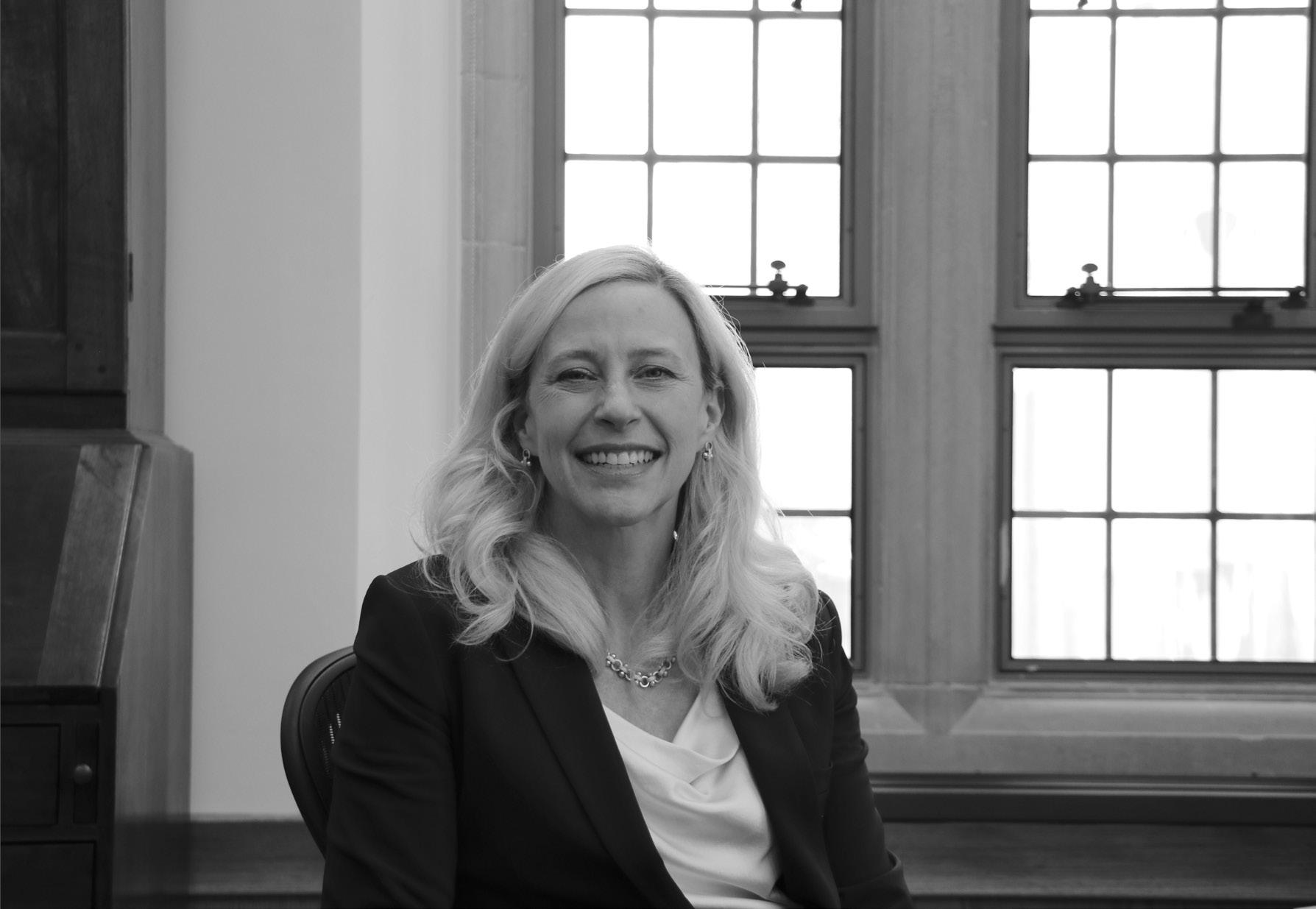
the next fiscal year, allowing the University time to adjust.
McInnis was then asked what she believes the tax’s impact on financial aid would look like and what a reduction in financial aid could entail, and she responded that she “sees no impact on the current packaging that all of our students currently have.”
Later, McInnis reflected on declining trust in higher education, noting the rising cost of universities, low admissions rates and the sense that colleges are not open to “respectful debate and dialogue.”
Five parents who attended the event expressed appreciation for McInnis’ transparency and focus on students as the University navigates aggressive government policies towards higher education.
“It is very encouraging as a parent to hear her emphasis on respectful discourse and debate when there is a disagreement
politically,” Camila Cerbantez-Flores, a mother of a firstyear student from Florida, said. “Information from the media can get noisy and scrambled, so it was good to hear directly from her.”
Cerbantez-Flores said she appreciated that McInnis seemed aware of decreased public trust in higher education. She noted that McInnis’ emphasis on respectful discourse was “encouraging” to hear as a parent and praised the University president’s concentration on students’ curiosity and creativity.
Yani Peyton — whose daughter is a senior from Abingdon, Maryland — appreciated McInnis’ focus on maintaining the aspects that “make Yale so special,” while trying to balance that with the obstacles she has to face.
“I have a tremendous amount of empathy for her stepping into a role of presidency at a time like this, and she is up against a lot of challenges,” Peyton said. “Trying to navigate the budgeting is quite a difficult task, and I think she is up for the job.” Cathy Han, the mother of a first-year student from Newport Beach, California, also had a favorable impression of McInnis. She described McInnis as appearing “very reasonable” and with common sense, a quality which Han said was important for university presidents during this time. Han added that she felt “somewhat reassured” by the University’s messaging on financial aid but was “nervous” about potential cuts to research funds.
McInnis gave her speech at Marsh Lecture Hall.
Contact ISOBEL M c CLURE at isobel.mcclure@yale.edu and SARINA SANGHVI at sarina.sanghvi@yale.edu
BY KINNIA CHEUK STAFF REPORTER
Tom Steyer ’79, billionaire investor, climate advocate and former Democratic presidential hopeful, doesn’t think that there will be bipartisan agreement on climate change in the United States anytime soon.
Instead, Steyer thinks another force will push the nation to act on climate change even without explicit bipartisan agreement — the market.
“We all can bipartisanly agree that we don’t like to lose
money,” Steyer said. Joined by former Secretary of State John Kerry ’66, Steyer spoke Tuesday afternoon at Yale as the fall 2025 recipient of the Chubb Fellowship, a visiting lecture program. The discussion focused on how market power is shaping climate action and was moderated by Sue Biniaz, a lecturer at the School of Environment and a former lead climate negotiator for the United States. The event — held in Sheffield-Sterling-Strathcona Hall — was attended by over 300
students who followed up with questions on the U.S.-China artificial intelligence race, China’s leadership role in the global energy transition and how public and private sectors can best support each other in accelerating climate action.
In 2021, Steyer co-founded climate investment firm Galvanize Climate Solutions and brought Kerry on as co-executive chair in 2024.
Kerry shares Steyer’s optimism that market forces will push the clean energy transition

forward. During Kerry’s time as former President Obama’s secretary of state, he came to the conclusion that no government alone was able to move fast enough to “get permitting done” and accelerate the transition without the help of the marketplace, he said.
Steyer argued that, right now, the market is at a place where the economic benefits of renewable energy and green technologies will push people to go green merely by doing what’s in their self interest.
“The power of the marketplace is more enormous than a lot of people want to admit,” Kerry said, echoing Steyer.
“When we start rolling down this road, making the products, selling the products, implementing them, putting the strategies in place, people are going to flock to the returns that you get.”
Steyer raised a few examples: More than 90 percent of new electricity generation globally was from renewable sources last year; and Pakistan experienced a solar boom last year from market pressure to mitigate high electricity prices.
The only test is, according to Kerry: Will the transition to a no carbon economy happen fast enough to avoid the worst consequences of the climate crisis?
According to Kerry, the narrative on climate change needs to shift away from renewable energy being more expensive and instead account for the massive costs of continuing to burn fossil fuels.
“What is the cost of black lung disease on a global basis? What is the cost of air quality that is destructive?” Kerry said. “Health care costs go up, everything’s more expensive, we don’t calculate that price.”
Isabel Rewick ENV ’26 said she was surprised by how heavily the speakers leaned into the market-based narrative because she is someone compelled by the moral basis behind climate action. She said she left the talk with new insight about how to reach broader audiences when communicating about climate change.
“It says a lot about where we are at right now, about climate being such a political and polarizing issue, that the morality argument doesn’t reach everyone but the economic self-interest argument does,” Rewick said. Even with their confidence in private markets, Steyer and Kerry stressed the importance of governmental leadership and policy in accelerating the climate transition, especially when it comes to the United States on the global stage.
The United States has huge power to unite other countries and the corporate world to act on climate issues, Kerry said, citing the global agreement to transition away from fossil fuels at COP28 in Dubai as an example.
Biniaz noted that Kerry had led international climate engagement through “the U.S. flip flops” — both under Obama before President Trump’s first term in office and afterwards under former President Biden as the U.S. special presidential envoy for climate.
“The world was very happy to get the U.S. back in a leadership position,” Biniaz said.
“The question is, is that possible again in the future?”
The Chubb Fellowship is administered through Timothy Dwight College and is awarded once a semester.
Contact KINNIA CHEUK at kinnia.cheuk@yale.edu.
“October is a fallen leaf, but it is also the wider horizon more clearly seen.”
BY JAKE ROBBINS, LEO NYBERG & BRADY PAYNE STAFF REPORTER AND CONTRIBUTING REPORTERS
About 100 people gathered at the Women’s Table Sunday evening for a vigil to commemorate the twoyear anniversary of the Oct. 7, 2023, Hamas-led attacks in Israel.
The event was hosted by the Joseph Slifka Center for Jewish Life and Yale in partnership with Chabad at Yale, according to a Slifka invite. The vigil — which consisted of speeches, music and prayer — followed a daylong memorial display on Cross Campus of pictures of hostages held by Hamas in Gaza and signs calling for their return.
Uri Cohen, the executive director of the Slifka Center, said in an interview after the event that remembrance, rather than a particular political message, was central to the vigil.
“If there’s a message, it’s that of peace. We’re here, we remember, we pray for peace for Israelis, for Palestinians and for the whole region,” Cohen said.
On Oct. 7, 2023, Palestinian militants from Gaza attacked Israel, killing over 1,300 Israelis and taking around 250 hostages captive. Israel subsequently invaded the Gaza strip, launching a war in which, the Gaza Health Ministry estimates, more than 67,000 people in Gaza have been killed.
According to the New York Times, Israel’s leaders believe Hamas still
holds around 20 hostages and the bodies of at least 25 more.
At the vigil, students reflected on the events of Oct. 7 and all that has followed.
Elijah Wiesel ’28, who spoke at the event, told the News following the vigil that he sees a connection between the collective memory of Americans and the Sept. 11 terrorist attacks to the Jewish and Israeli community’s continuing commemoration of Oct. 7.
“Our generation is called to remember 9/11,” Wiesel told the News. “For a lot of us, this is something we cannot forget. It is something that impacts us everyday, follows us home and follows us on campus.”
During the vigil, Alex Ozar, the campus rabbi and co-director of Jewish Learning Initiative on Campus, spoke to the group about the importance of mourning the dead and remembering the hostages.
He thanked the approximately 100-person crowd for “doing the hard, impossible, beautiful and transcendent work of the Jewish community.”
“This is supposed to commemorate the victims, who were murdered on Oct. 7 and those who were kidnapped,” Yossi Moff ’27, a board member of Yale Friends of Israel told the News while cleaning the memorial off Cross Campus.
“Both the ones who, thank God, came back, and the hostages who are still being held, some dead, some alive, in Gaza now.”
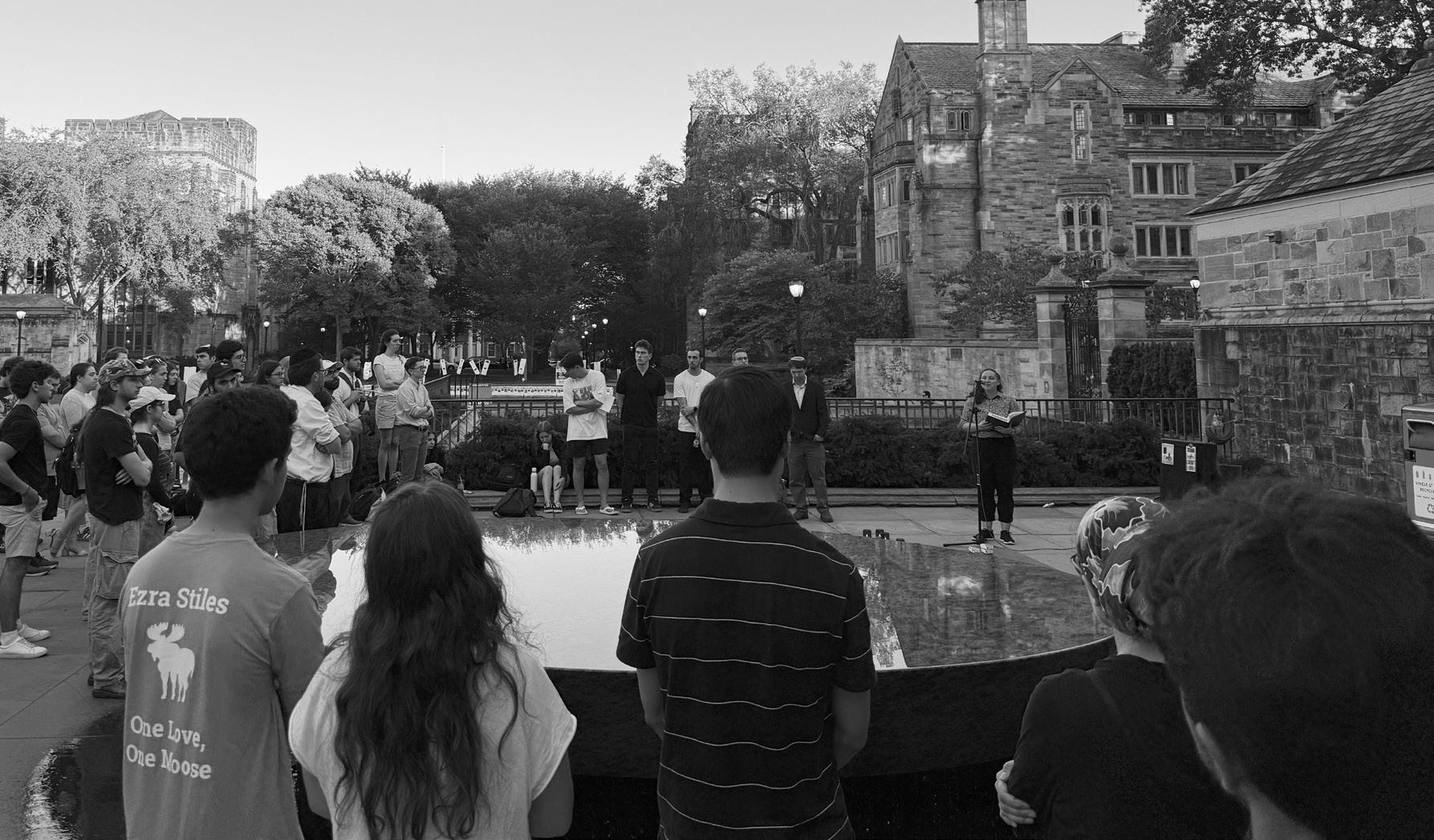
Last year’s commemoration was similar to the one on Sunday, but it included videos and interviews from Oct. 7 survivors, Moff said.
Moff said he hopes all the hostages will be released well before the third anniversary of the attacks, and future commemorations will focus on remembering the dead and honoring their lives.
Sabrina Kastner ’26 reflected on the significance of holding the memorial and vigil on a day that coincided with the start of Sukkot, a Jewish fall harvest festival, noting
that the community sought to balance mourning and celebration. She said it would not be appropriate to hold a formal mourning during the holiday, but that the events on Sunday created a shared space for reflection and remembrance while many students were still on campus.
Kastner added that being at the vigil brought back difficult memories from the past two years, including the immediate aftermath of the Oct. 7 attacks and the ongoing hostage crisis in Gaza.
She emphasized the importance of
coming together as a community to remember and find strength, describing the vigil as part of a long tradition of resilience in Jewish history.
The Slifka Center for Jewish Life is on 80 Wall St.
Contact JAKE ROBBINS at jake.robbins@yale.edu , LEO NYBERG at leo.nyberg@yale.edu and BRADY PAYNE at brady.payne@yale.edu .
BY JERRY GAO AND EMILY AKBAR STAFF REPORTER AND CONTRIBUYING REPORTER
Curtis Yarvin, a blogger known for his anti-democracy views, debated Yale Law School professor Jed Rubenfeld at a debate Tuesday evening hosted by the Yale Political Union, or YPU. Yarvin argued in favor of the resolution “end the democratic experiment” against Law School professor Jed Rubenfeld. The
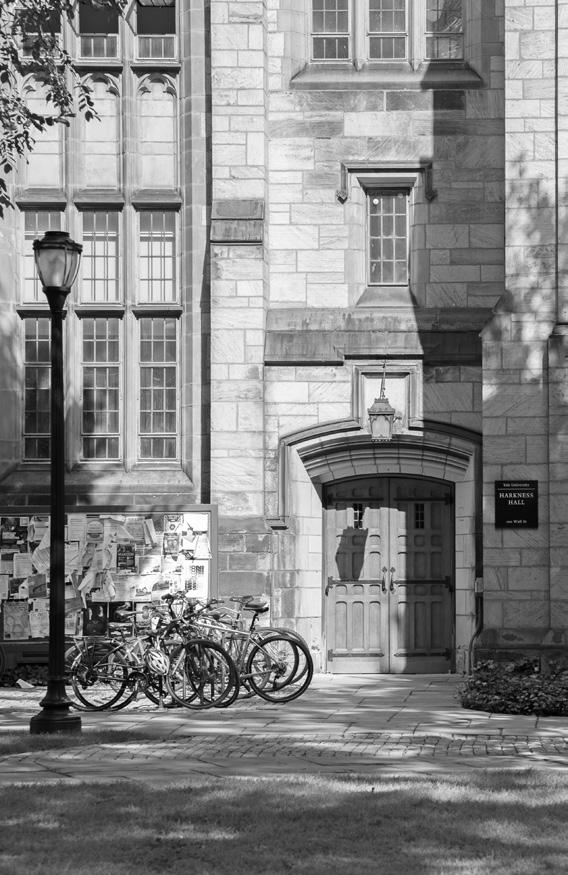
resolution failed, with 60 voting against and 23 voting in favor, Hassaan Qadir ’26, who attended the debate, told the News. The News could not immediately confirm the vote with YPU leadership.
Yarvin has promoted the idea of an American monarchy online under the pen name Mencius Moldbug, and his ideas were cited by JD Vance LAW ’13 on a podcast in 2021 supporting Trump replacing civil servants with Trump loyalists.
In an email to the News prior to the event, YPU President Brennan Columbia-Walsh ’26 asked that a reporter not attend Yarvin’s debate — a break from recent YPU custom. A News reporter was initially let into the event but asked to leave by Columbia-Walsh before the debate began. Columbia-Walsh declined to explain why the News reporter had to leave the event, referring back to his initial email.
Yarvin told the News that he was unaware of the policy barring a News reporter as he entered a dinner before the debate at Mory’s.
“I don’t know the rules, someone will have to see,” Yarvin said.
“I would ask the organizers. I really don’t know.”
Qadir said in an interview after the debate that he believed a lack of news coverage enabled participants to speak freely.
“I think it’s useful for the Yale Political Union to be a relatively private space for dialogue,” Qadir said, explaining that speeches could be misrepresented. “But on the other hand, it can be useful to publicize and let other people know, even for the simple sake of getting more people to come to the YPU.”
Another student, Antonio Padilla ’27, said that the move to bar a reporter was unnecessary due to a lack of controversial statements said throughout the debate. Padilla expressed his disagreement with the YPU’s decision, stressing the importance of publicizing Yarvin’s statements.
“I do think that if he’s gonna espouse these views, talk about the institution that he’s speaking in, and talk about the students within these institutions, then the people should be able to hear,” Padilla said. “That’s kind of the democratic ideal, I guess.” Student attendees summarized the character of the debate. Yarvin argued that the democratic experiment has already failed, while Rubenfeld contested that ending the experiment is not worth the consequences of tyranny, two students said.
Alden Okoh-Aduako ’28 said that Yarvin advocated for a government structured like a corporation, in which there is an absolute monarch accountable to some outside body — analogous
to the way a chief executive officer is accountable to a board of directors.
Padilla said Yarvin assessed democracies and oligarchies around the world to be “not working,” and thus concluded that “monarchy seems like the obvious solution here.” On democracy specifically, Padilla said that Yarvin attributed homelessness and political polarization as some of the signs of failure.
“He said, ‘When I walked down Chapel Street, I had to think to myself the project failed, right?’” Padilla recalled Yarvin saying, in reference to homeless people on a street in downtown New Haven.
Two students interviewed by the News questioned Yarvin’s proposed monarchical system and if his ideal government would actually lead to human flourishing.
“But then it’s like, okay, well, what’s keeping that board of directors in check?” Miles Moore ’29 said.
Padilla criticized Yarvin’s theoretical system of government on the basis of who would run it, pointing to the possibility of immoral leaders.
Students in support of the resolution spoke about the need for decentralized governments to check malicious incentives and inefficiencies from the federal government, Qadir said.
Padilla described how stu -
dents speaking in the affirmative proposed more interesting arguments as they “pulled from more sources,” including Carl Schmitt, a German political theorist, or philosophies from ancient Athens.
In response to Yarvin, Rubenfeld argued that ending the democratic experiment could result in complete totalitarianism, which is not worth the possible gains of a successful monarchy, Qadir said.
“Sure, you could end up with a benevolent king who works efficiently for the common good, but who’s to ensure we don’t get a tyrant instead?” said Okoh-Aduako, recalling Rubenfeld’s speech. Columbia-Walsh could not be reached for comment about the debate after it ended.
Yale Public Safety personnel were present outside William L. Harkness Hall during the event, and attendees’ bags were checked by security. The YPU previously tightened its security measures for a debate the week after the killing of Charlie Kirk.
Yarvin is scheduled to debate Garett Jones, a George Mason University professor, on Wednesday at an event hosted by the Yale Federalist Society.
Contact JERRY GAO at jerry.gao.jg2988@yale.edu and EMILY AKBAR at emily.akbar@yale.edu .
BY ANAYAH ACCILIEN AND KIKA DUNAYEVICH CONTRIBUTING REPORTERS
Around 30 students gathered around dimly lit candles on the New Haven Green to mourn and commemorate the Palestinians who have lost their lives in the ongoing war in Gaza and over decades of Israeli military actions.
The event was hosted by Yalies4Palestine, or Y4P, as part of the group’s three-day commemoration of the two-year anniversary of the Gaza war.
A student speaker who did not share her full name with the News said Israel was responsible for “the destruction of homes, the uprooting of families, the demolition of schools and hospitals, the erasure of towns and villages, the theft of
land and the silencing of dreams” over more than a century.
In a speech, Rohan Lokanadham ’28 shared a story about a friend from Gaza who he said has had a typical experience there among Palestinians who have endured “for the last two years of active genocide” — an accusation Israeli officials have denied.
Lokanadham said his friend was paralyzed from the waist down under Israeli bombardment and had moved farther and farther south in Gaza. He is “a son, brother, husband and father, and is truly one of the kindest people I have ever met,” Lokanadham said.
Another student speaker led the crowd in a rendition of “from New Haven to Gaza, we shall not be moved.”
Lokanadham said more people are beginning to recognize Palestinians’ rights to dignity, safety and life — an acknowledgment
that many at the event viewed as the first step toward lasting justice and rebuilding.
“I’m hoping that we will help in creating the conditions for a Palestinian state, creating the conditions for Palestinian dignity and life without genocide,” he said. The event ended with a moment of silence, followed by a call to action: to share the stories of Palestinians.
Yalies4Palestine lost its status as a registered student organization in April after pro-Palestinian protests coinciding with a visit to New Haven by the far-right Israeli minister Itamar Ben-Gvir.
Contact ANAYAH ACCILIEN at anayah.accilien@yale.edu and KIKA DUNAYEVICH at kika.dunayevich@yale.ed

“October
BY SOFIA GAVIRIA PARTOW STAFF REPORTER
A lighthouse is being erected in Iseman Theater as the space prepares to host four performances of “Exclamation Point & An Act Without Words,” an original play by Soleil Piverger ’27 premiering Thursday evening.
The play follows the journey of Leela Lo Lottle through the fantastical world she inhabits. The fourth part of a series by Piverger, the play was selected as the Yale Dramatic Association’s fall experimental show, and incorporates various mediums, including film, within the larger play structure. It is composed of two acts and a final experimental section titled “An Act Without Words” that functions as a postscript.
“I was looking at the ends of sentences, so that’s how I came upon ‘Exclamation Point’ as this sort of title,” Piverger said. “What does it mean to start something with the idea of an end, or what does it mean for the end to represent a beginning?”
The procession from beginning to end is embodied in the configuration of the stage, with Leela’s family apartment located on one end of the theater and the lighthouse on the other.
The audience is arranged in parade-style seating between the two structures to serve as a physical manifestation of the journey described in the narrative. Leela begins the show trapped in her family’s apartment, but is led to the Exclamation Point lighthouse throughout the course of the play.
“Leela is born allergic to dust and that is the reason why her world is cruel to her. At the end when her world turns to dust, she gets out because she’s aller-
gic and she remembers what unifies her body with her voice and who she is,” Piverger wrote.
Throughout the play’s first act, Leela remains trapped in her family apartment by her brothers. She can only observe the outside world through a tiny peephole in the wall.
The second act revolves around Leela’s adoption by a woman named Drusilla who is mourning the loss of her daughter, Lula. Leela effectively becomes Lula in the eyes of the grieving family.
The play utilizes myriad storytelling devices throughout the production, including video projections.
The videos — which will be projected onto a screen during the performance — act as visual representations of Leela’s internal dialogue and psychic abilities, which contrasts the actions Leela observes onstage through her peephole during the first act.
The video and live performances differ in their tangibility. The videos expose the subconscious of different characters in the play, according to Tybee Feiler ’27, the play’s associate director. Characters on stage observe themselves projected onto a screen, allowing the audience to witness the characters’ interaction with their own minds and thoughts.
“Sometimes the actors are in sync with the film, and sometimes they’re out of sync. We can tell when they’re suppressing their thoughts and when they’re working through the different ideas happening in their minds,” Feiler said.
Feiler and Piverger met when they were 5 years old and have been involved in theater and playwriting together ever since, they said. Feiler joined Piverg -
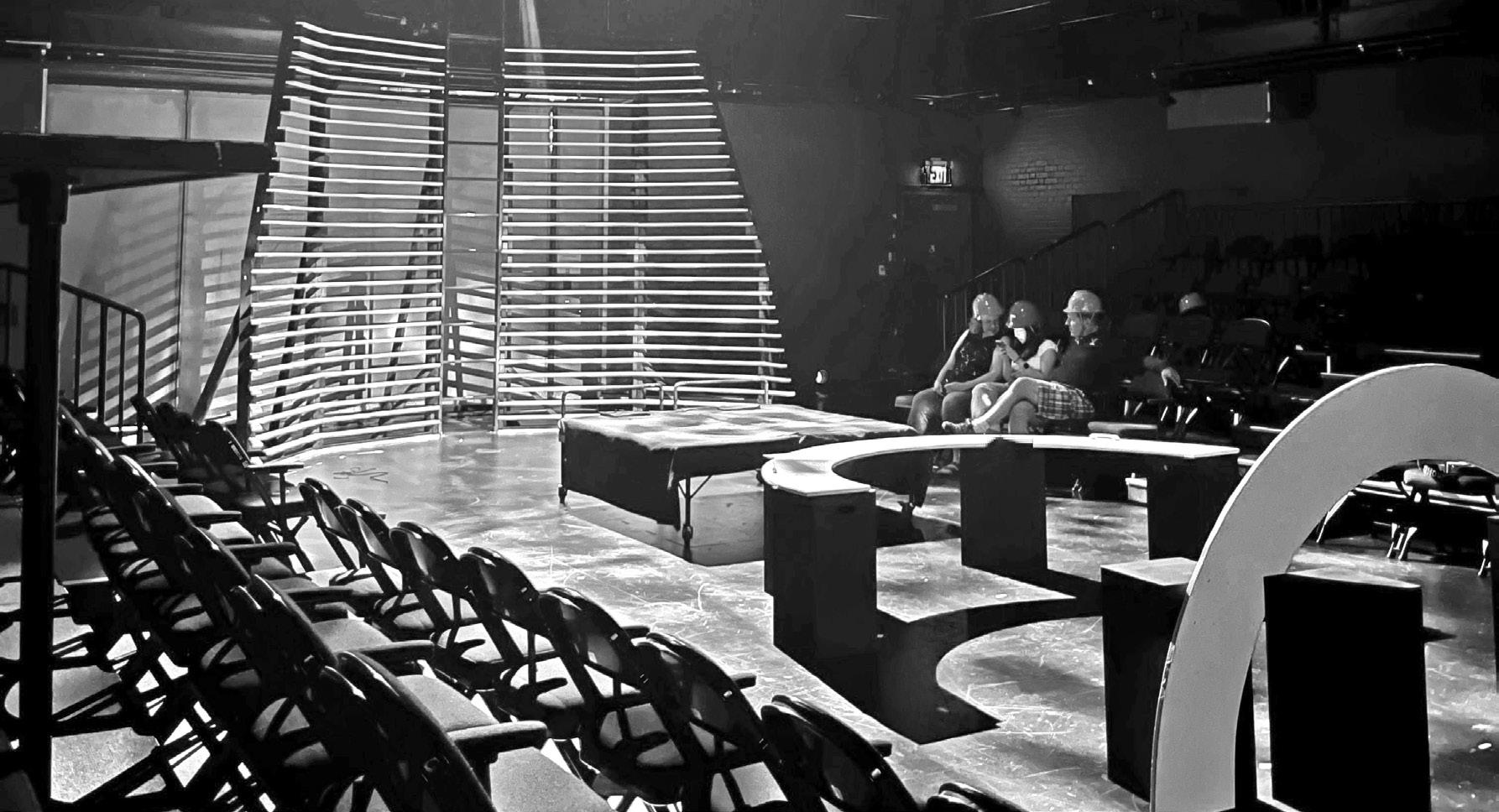
er’s team as associate director over the summer, during which they worked together to develop the visual and narrative design of Leela’s world and to edit the script.
Feiler underscored the wordplay and Seussian utilization of language that was essential to Piverger’s writing process as well as their joint editing work.
Inspired by poet Emily Dickinson, Piverger incorporates adapted versions of her poems to tell an original and unique story.
“It’s Emily Dickinson, but some of the lines have been changed. I maintain the rhyming pattern, but it’s recontextualized — same themes, different story,” Piverger said.
In addition to the wordplay, Feiler and Piverger both highlighted movement and the physical embodiment of language as critical to the narrative arc of the
play.
Camille Chang ’26 is working as the play’s movement director. Her practice is primarily founded on the score-based work that emerged from 1960s modern dance. The scripted scores function as short prompts that inspire movement from actors.
“The idea that me and Soleil were talking about is this idea of freedom in the play. What does it mean to have the freedom to do what you want?” Chang said. “So it’s basically giving the actors a prompt, but not a set movement, to determine what they want to do on stage, and tweaking the aesthetics of it.”
One of the prompts that Chang wrote for the play asks actors to recall an injustice done to them, a friend or a neighbor. The prompts encourage actors to draw from their own experiences while also
allowing them the creative space to interact with the characters they are portraying.
Chang also highlighted the importance of pushing the actors beyond graceful, measured performances of movement, encouraging them instead to move their bodies extremely strangely. She further described the play as itself a prompt to the audience.
“The play prompts the audience to think about themselves a lot,” Chang said. “What this play inspires, I think, is how do you take what you have seen and felt and take it out into the outside world, and how you interact with other people outside of this theater and black box?”
The show is running Thursday through Saturday at the Iseman Theater.
Contact SOFIA GAVIRIA PARTOW at sofia.gaviriapartow@yale.edu
BY ANGEL HU AND SIMRAN RANDHAWA STAFF REPORTER AND CONTRIBUTING REPORTER
Students packed a campus auditorium Tuesday evening for an advanced screening of Luca Guadagnino’s new film “After the Hunt,” which tells a fictional story about a group of characters at Yale.
“After the Hunt,” which will open nationwide on Oct. 17, tells the story of a Yale philosophy professor named Alma Olsson, played by Julia Roberts, whose student Maggie Price, played by Ayo Edebiri, accuses her colleague and close friend Hank Gibson, Andrew Garfield, of sexual assault.
Exploring the fraught relationships between mentor and student, institutional power within academia and the roles of gender and race within prestigious institutions, the public screening encouraged viewers to “share their thoughts and feelings on the film openly,”
according to Film Programming Manager Marc Francis, who introduced the screening.
“I predict this is going to be a bizarre and maybe surreal experience for us watching this kind of film in the institution which is set,” Francis said.
After the opening scene, the film cuts to a black screen with the words, “It happened at Yale.”
While the film was not shot at the University, it depicts many familiar landmarks on campus and around New Haven — including Phelps Hall, Old Campus, Beinecke Plaza and Chapel West Liquor Shop.
The Yale logo was also featured on sweatshirts, posters and faculty ID cards that were shown at various points throughout the film.
After the screening, Crystal Feimster, a Black studies professor, and Joe Fischel, a women’s, gender, and sexuality studies professor, led a conversation on the racial and gender politics in the film.
Feimster praised the “brilliant acting” in the movie and the ambitious subject matter but said the plot development was “inconsistent.”
“I think it captured something about our political and cultural moment that is uncomfortable. There were moments of cringe, there were moments of truth and there were moments that made you think, ‘Really? We’re going there?’” Feimster said.
Feimster said that the primary tension of the movie focused on the dynamic between Alma and Maggie, exploring the relationship “between Black and white women when it comes to sexual narratives — who is believed and who isn’t.”
The movie focused on the misaligned motives of the three leading characters and how that impacted each character’s actions.
“At the end, we get this kind of battle between Black and white women for resources,” Feimster said, referring to the context of a patriarchal society in which both
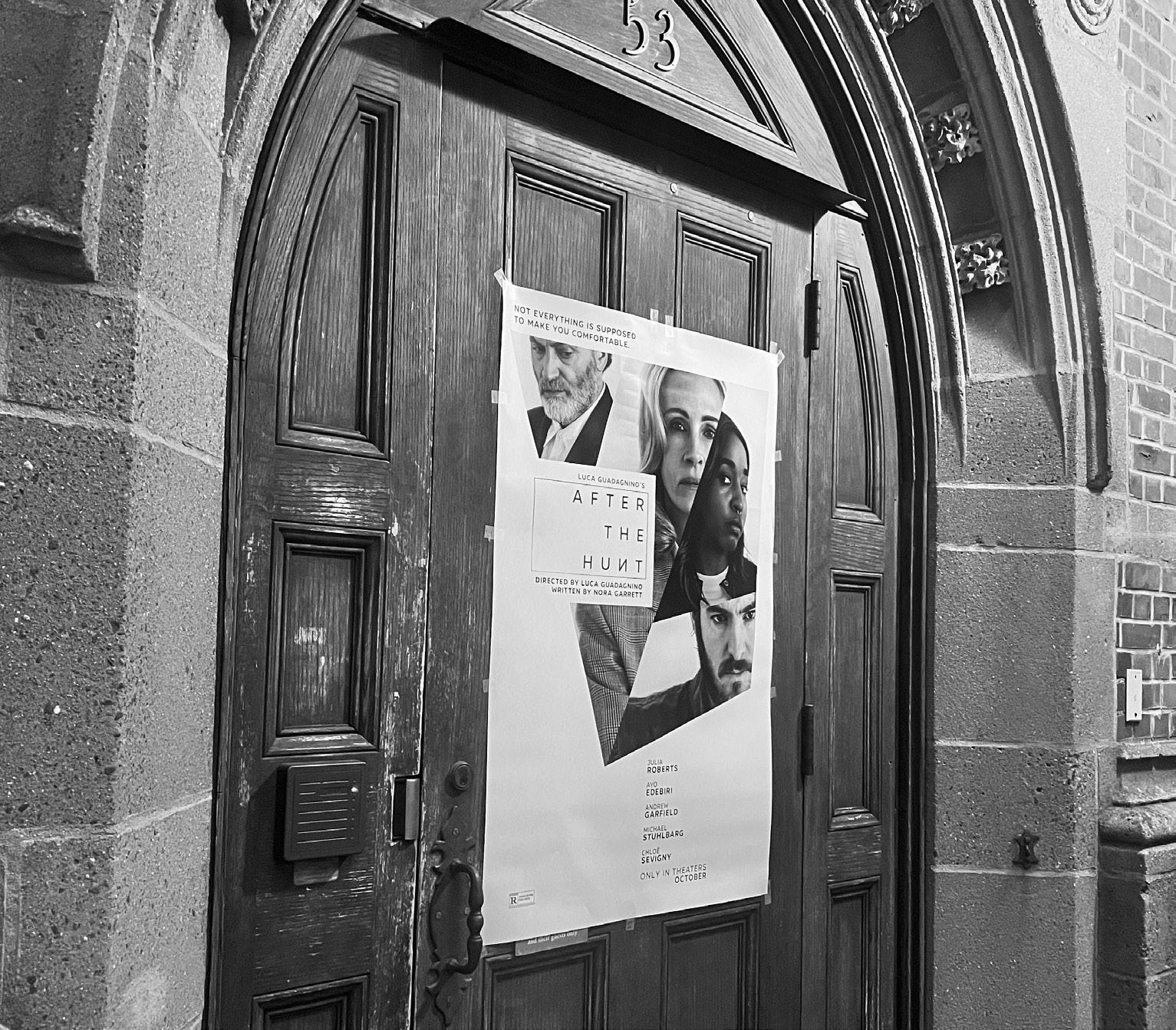
women are vying for success in predominantly male, predominantly white spaces.
Feimster emphasized that, for her, the movie’s primary value comes from asking students and staff at Yale to “reckon” with their place at the University amid the complex interplay of social dynamics.
Fischel praised the commitment to recreating the University.
“The director went so hard on the Yale ID and Yale scenes — all that stuff was accurate,” he said.
Additionally, Fischel echoed praise for the performances of the star-studded cast, mentioning the strength of Julia Roberts’ performance in many intense scenes.
However, Fischel also criticized the movie for being “libelous toward Black women” due to what he saw as poorly executed commentary on class and an overt focus on Julia Roberts’ character.
Throughout the movie, Alma’s suffering and perspec -
tive is emphasized over Maggie’s experience with her own sexual assault. Fischel also argued that, at many points in the film, the “portrayal of Maggie and her trans/nonbinary partner are so much a spectacle.”
In an email to the News, Fischel added that the film’s faithful adherence to imitating Yale was undermined by the fact that none of it was filmed on campus, hindering “the viewer’s confidence in ‘what happened.’”
“It seems to me a rather embarrassing flaw of the film that for all of its effort to make Yale a main character, there is nothing at all added to the film — emotionally or politically — by its taking place on our campus,” Fischel wrote.
Luca Guadagnino also directed “Challengers,” which came out in 2024.
Contact SIMRAN RANDHAWA at simran.randhawa@yale.edu and ANGEL HU at angel.hu@yale.edu.
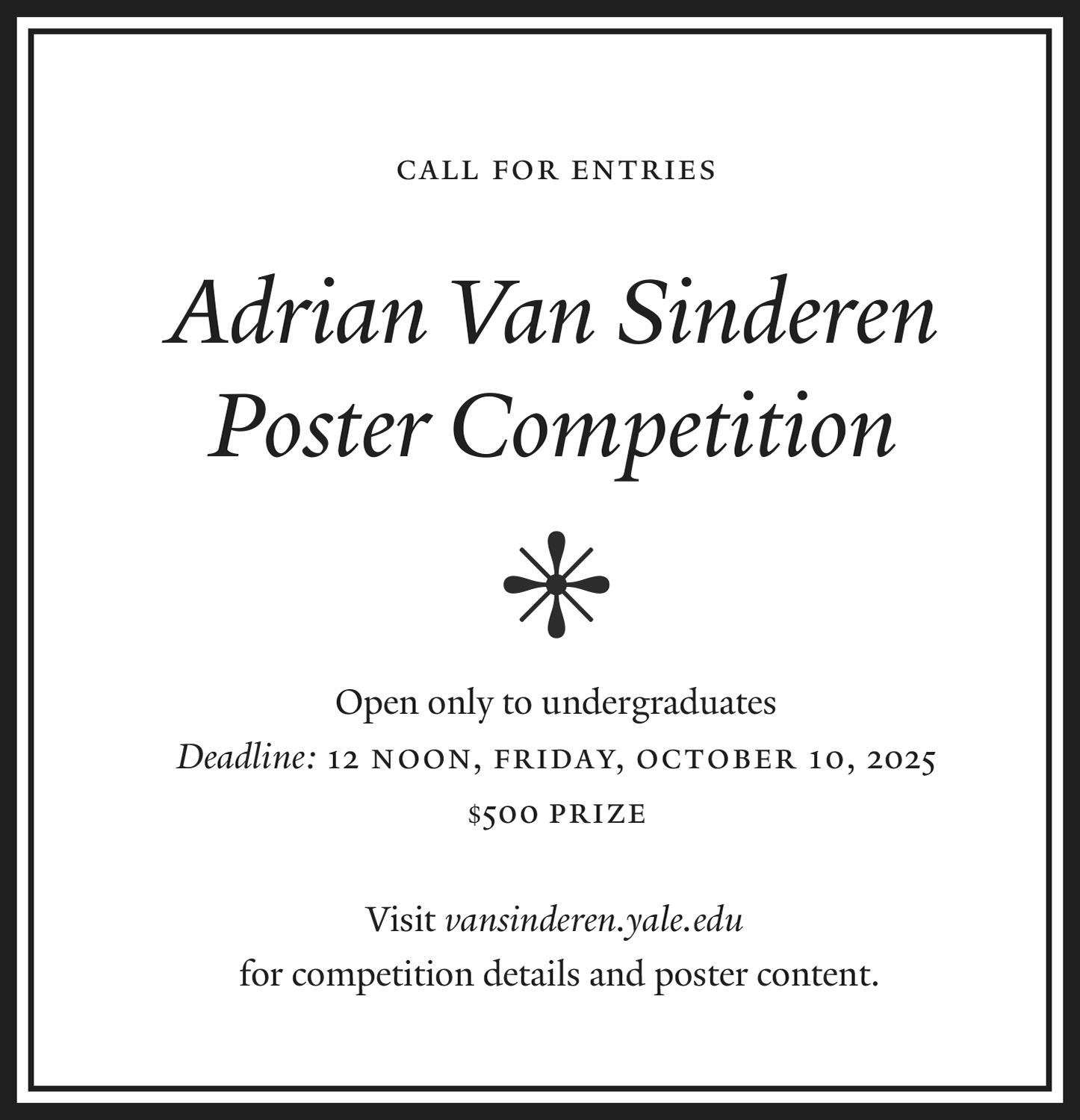
“I
have been younger in October than in all the months of spring.”
BY ANYA GEIST STAFF REPORTER
Yale student Collin Junus ’27 last month launched a new productivity app called Monk, named after a general category of productivity apps dubbed “monk mode” apps.
Monk helps users set goals and restricts access to other, distracting apps, such as social media. Junus said he aims to help users “fight back against brainrot.” Junus launched Monk with a small team of designers and editors and hosted a launch event on campus in September.
“Attention collapse is probably one of the biggest problems of our generation, and I felt it myself, right?” Junus said. “Honestly, I built Monk for myself first.”
However, Junus hopes that Monk will become a status symbol.
“If you just want to drive a car, you can drive a Toyota Prius. But then why do people buy Ferraris? Right?” Junus said. “I don’t want people to use Monk just because they need it, but I want them to use it because it makes them feel hotter, richer and more elite, right?”
Junus — whose website calls him a “Worldbuilder,” “Polymath,” “Genius” and “Asian Batman” — also has a YouTube channel under the name “Collin The Chad.” Some of his videos include “how to glow up in 2025” and “how to be confident AF as a guy.”
Just as he aims to influence social consciousness through his online presence, Junus hopes that Monk will launch a “cultural movement.” He
sees Monk as more than just a utility app but a “ritual” that users will come to rely on and connect with.
“I call it the mental renaissance, and that’s the cultural aspect of it, right?” Junus said. “And what is the mental renaissance? It’s the idea that stillness is rebellion.”
Like other productivity apps, Monk uses time restrictions to limit usage of distractions such as Instagram or Youtube, in theory allowing users to have more productive time.
Josh Chen ’27, a friend of Junus’ who has used Monk, said that because users pay for it, the app is more likely to impact their behavior.
“That investment into yourself and your own behavior makes you more likely to stick to it,” Chen said.
Junus frames Monk as a cultural ritual. Chen explained where he believed Junus came up with that marketing approach.
“I think framing Monk as a sort of revolution fits into the general trend of combatting screen addiction,” Chen said. “Collin likes to say that brain rot was kind of fathered by Facebook and it rabbit-holed into social media in the early 2000s and 2010s. And in the past few years, you’ve seen many people in Gen-Z seeing and experiencing for themselves the detrimental effects of screen addiction.”
Another user, Proud Ua-arak ’27, also spoke about the screen addiction she deals with. When using other productivity apps, she said, she was likely to just bypass the time restriction set on her phone. However, she found Monk more effective at encouraging her to be more productive.

Ua-arak added that though she has few issues with the functionality of Monk, she might enjoy some added elements to the app.
“I’m someone who’s a sucker for inspirational quotes or, you know, morning affirmations,” Ua-arak said. Maybe, she added, the app could “notify me every morning to like, log in, or something like that.”
“Obviously, you know, when you sell a product, you don’t just sell the product for itself,” she said. “You sell it for the emotions and everything involved in it.”
Ua-arak said this framing likely would not impact her use of the app in any way. That being said, Ua-arak emphasized the value she has found in using a productivity app like Monk.
Ua-arak finds Junus’ approach to marketing his app — the cultural movement technique — interesting.
“Just reclaiming that time in the mornings and nights where I can’t be doing something else,” Ua-arak said, “I can wake up with a refreshed brain, or go to sleep without these distractions.”
Junus’ YouTube channel has 711,000 subscribers.
Contact ANYA GEIST at anya.geist@yale.edu.
BY LEONARDO CHUNG CONRIBUTING REPORTER
For many students at Yale, skincare is no longer just soap, lotion and sunscreen. Simple cleansers have given way to lengthy regimens of serums, moisturizers and acids as social media popularizes routines that promise glow and confidence.
Across the United States, dermatologists say that young people are adopting increasingly layered skincare routines, incorporating products like retinol, exfoliating acids and natural alternatives such as beef tallow. While some say that the routine craze can be helpful when it builds good habits, it can be risky when students stack too many products or chase trends without medical guidance.
Dermatologists at Yale agree to a baseline: keep it simple, stay consistent — and most importantly — wear sunscreen.
“It’s great that people care about skin, but everyone online seems to be an expert,” said Sara Perkins, a dermatologist at Yale Medicine. “As dermatologists, our role is to help people understand what has evi-
dence and what does not, and overall help navigate the over-the-counter skincare space.”
Perkins notes that the two common issues in her clinic are confusion and overuse. Students with large collections of skincare products are often unsure which ones do anything at all.
“Consistency is key,” she said.
“You must give a regimen four to six weeks before judging it.”
She recommends a gentle cleanser twice a day, moisturizer and daily sunscreen. Retinoids and acne washes can help, but only when there is a clear need.
Mary Laird, another dermatologist at Yale Medicine, agreed that complicated routines are not always necessary.
“If a regimen like this is working for someone, then great!” she wrote to the News. “But they are typically unnecessary, can be expensive and can cause irritation, so a simpler routine often works just as well.”
Perkins also said that the products themselves are oftentimes not the trouble — but rather how people combine them without knowing how they work can cause problems.
“Skin is delicate. More is not always
better,” she emphasized.
Sa Rang Kim MED ’19, a dermatologist at Yale Medicine specializing in skin-cancer prevention, noted she has seen trends appear in her clinic as well.
“It’s nice that social media has made skincare part of daily conversation, but misinformation can be harmful,” she said. Kim mentioned that she has seen many students use unnecessary 10- to 12-step routines.
Students’ habits vary. Some keep it minimal.
“I just wash my face daily,” Elena Miinea ’29 said. After an adverse allergic reaction to benzoyl peroxide, she avoided new products and continues to be wary of influencer promotions. “Some influencers might be getting real results, but others might be getting paid to provide certain opinions, so it’s not the most transparent process.”
Mridula Bharathi ’29 uses face wash, an exfoliating toner, Vaseline and a gel moisturizer at night. “I consider my skincare a source of happiness for me. My routine can take as long as I want, so I do it every night,” she told the News.
She also said that she was able to find the products that were most suitable with her skin through trial and error, and that her routine is always subject to improvement if she finds better products.
Bharathi believes that many children are influenced by social media influencers to buy skin products, such as anti-aging serum, that they do not really need.
Perkins and Laird, mentioned two red flags to watch out for: pain or persistent redness.
“Your routine should never cause pain, redness, irritation, itch or rash,” Laird wrote. “If any regimen is not working for you after a couple of months, it might be time to see a dermatologist.”
Kim emphasized a similar caution against homemade remedies. She said that ingredients such as baking soda and lemon juice are commonly used in DIY face masks, which can cause skin irritation. Instead, using products that list their active ingredients is safest and most effective.
Sunscreen was the largest gap between dermatologist advice and student behavior. Perkins called daily
sunscreen the most important habit. Perkins urged students to make sunscreen use automatic, because small exposures such as the sun coming through the windows and short walks can add up.
“Sunscreen is the least flashy but most important step,” said Perkins. “Apply sunscreen every day, all year. Build the habit so you don’t forget.” Campus and seasonal factors can also play a role in skincare. Perkins pointed to wind, cold weather and snow glare as sneaky sources of damage, while Laird said winter dryness can worsen eczema and may require thicker moisturizers.
Kim added that New England weather extremes make skincare unpredictable: dorm heaters in the winter can cause skin dryness, while summer sweat can also lead to irritation.
According to Fortune Business Insights, the skincare industry is projected to reach a value of $30.42 billion by 2032.
Contact LEONARDO CHUNG at leonardo.chung@yale.edu. COURTESY OF

cleansing, moisturizing and sun protection — matter more than following viral trends.

BY LIZA KAUFMAN STAFF REPORTER
When Dave Rudin GRD ’85 first approached Yale Athletics Director Vicky Chun on the sideline of the 2018 Yale football game against the University of Maine, he wasn’t sure what to expect.
“I thought, instead of sending an email and getting it bounced around the athletic department, let me go straight to the top. So, I found Vicky Chun on the field,” Rudin said in a phone interview. “The worst they could say was no.”
They said yes, and now, seven seasons later, Rudin, whose photographs have been published in the News, has become a fixture on Yale sidelines at football, volleyball and women’s lacrosse games as a volunteer photographer known for his detailed sports photography that captures both the triumph and the struggle of athletes. His path to Yale games, however, winds back through ancient languages, high school newspapers and even the ruins of Egypt.
From The Vanguard to Washington Square News
Rudin picked up a love for journalism in high school, when he wrote for his high school newspaper, The Vanguard.
“I liked to write. That’s one way to put it,” Rudin said with a laugh.
“One of my English teachers even commented on my rambling style of writing. I guess I’m someone who writes by the pound.”
After graduating from John Dewey High School in Brooklyn in 1977, Rudin went to New York University from 1977 to 1981 and studied Near Eastern Languages and Classical Civilization.
At NYU, Rudin joined Washington Square News, the student newspaper, working first as a reporter and then as sports editor in his sophomore and junior years. He covered basketball, volleyball, wrestling, soccer, tennis and wrestling, while also experimenting with layout and photography.
“Laying out the paper taught me a lot about framing an image. I learned to always position a photo so people are looking into the page, not off it,” Rubin said. “That’s something that still affects how I frame a picture today.”
Rudin’s passion for photography came from his father, Sidney, who taught him how to use his Minolta SR-1 camera.
“I thought the ‘SR’ on the model stood for ‘Sidney Rudin,’” Rudin joked, “but it was just the model name.”
Besides his sports photography, Rudin also does fine art and travel photography in black and white. A series of his photos taken at the annual Carnevale in Venice won the top prize last year in the non-professional category of the Pollux Awards, a major international photography competition.
Yale, Egypt and a detour into finance
After graduating from NYU in 1981, Rudin came to Yale to delve into Egyptology. A linguaphile, Rudin studied French, Egyptian and Akkadian at Yale, adding to a language repertoire that already included Spanish, Hebrew, German and Japanese.
Though he earned a master’s degree in Ancient Egyptian and Near Eastern Studies, Rudin left Yale before completing his dissertation.
“I felt isolated in a small department,” he said. “I saw the same handful of people every day and basically there was no opportunity to meet new people.”
Rudin decided to leave New Haven and return home to New York City, where he obtained what he called a “practical degree” — an MBA from NYU’s Stern School of Business. Rudin has worked for the New York City Department of Finance for most of his career, according to his LinkedIn profile.
In 2025, Rudin enrolled at a University of Edinburgh virtual program to pursue a master’s degree in Ancient Worlds, looking to reconnect with his academic passions.
Returning to Yale through the camera lens
Rudin first returned to Yale after his days at the Graduate School in 2016, when a friend, whom he had met at a Doctor Who convention, invited him to see a performance of Othello at the School of Drama.
“Even though I’m a photographer, I purposely left my camera at home,” he said. “I wanted to experience Yale and New Haven directly through my eyes.”
As Rudin strolled past the Humanities Quadrangle, where he had taken many classes, and walked along York Street, he said he was flooded with memories and became emotional.
“I thought to myself, maybe it’s time that I tried to reconnect with the University.”
The next year, in 2018, he approached Chun and Ann-Marie Guglieri, who also works in the athletic department, on the field.
They gave him credentials, and by the end of that season, Rudin had shot multiple football games.
“Anne-Marie wrote back saying, ‘Dave, your pictures are great.
You can photograph whatever you want,’” Rudin said, and from there, his journey taking pictures of Yale athletes officially began.
Rudin also reconnected with Yale by joining the Graduate School Alumni Fund. Since 2019, he has volunteered as a funding agent, writing letters and emails to fellow alumni.
As a first-generation student, and having been the recipient of a full fellowship and stipend, Rudin said he believed strongly in paying it forward.
“I have always felt I should give back so that other future
students get the same benefit,” Rudin said.
Rudin’s new role on the Alumni Fund brought him to New Haven in 2019 for the annual Alumni Assembly, held the Thursday and Friday before the final home football game, which was the annual Yale-Harvard Game that year. Although he wasn’t sure he was going to be permitted field access at The Game, Rudin brought along his camera equipment.
While he was eating lunch at the Omni on Thursday afternoon before The Game, he received a call granting him permission to take photos at the 136th playing of the Yale-Harvard game. However, Rudin woke up next morning to find that he had a posterior vitreous attachment on his left eye, the eye he uses to take pictures.
Despite describing it as an “amoeba” floating on his eye, Rudin did not let it stand in his way of photographing this historic game.
In the 2019 game, which went down in history for a student protest at halftime that delayed play for almost an hour, the Yale team was down by 17 in the middle of the fourth quarter. The Bulldogs made a historic rally and threw the game into double overtime, a moment Rudin said he will never forget.
“If someone had told me that one day I would be attending the Yale Alumni Assembly and the next day I’d be photographing the Yale-Harvard game on the field, I would’ve told him that they were crazy,” Rudin said. “When I was a student, I felt isolated. Now, through the alumni community and photography, I feel more a part of Yale than ever before.”
Rudin has since photographed at all eight Ivy League football stadiums and created photo books of Yale-Harvard games. He has expanded to women’s sports, photographing volleyball since 2023 and women’s lacrosse since 2024.
His commitment to photographing Yale athletes often takes him far beyond New Haven. In 2023, when Yale football played at Brown and volleyball competed at Harvard on the same day, Rudin made the trek from New York to photograph both games in Providence and Cambridge.
“I photographed two Yale sporting events on the same day in two different states,” he said with a laugh.
Two years ago, when he drove to Princeton for a Friday volleyball match and then to Penn for Saturday’s game, his car broke down and he had to pay his own money to fix it, Rudin said. The same thing happened again over the weekend after he traveled to Lehigh University for a football game.
Parents like Maggie Yang, mother of defensive lineman Dylan Yang ’26, have noticed that dedication.
“Dave is just so committed. Literally, he’s always there, camera in hand, capturing every moment at home or away games,” Yang wrote to the News. “It shows that
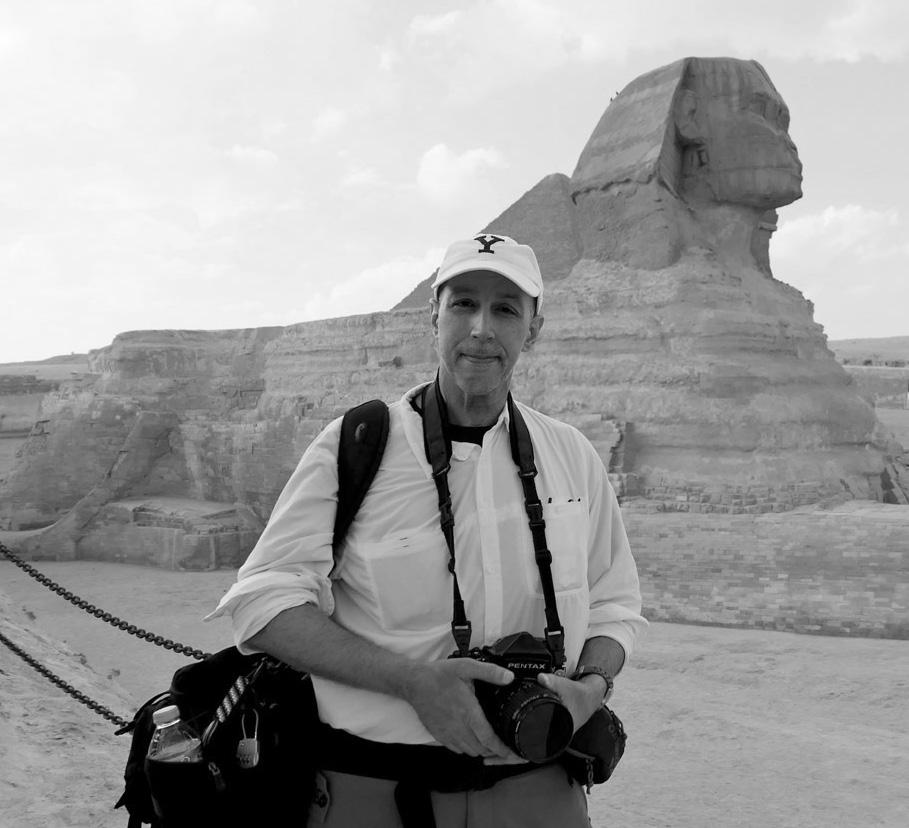
he cares about the players and what this team stands for and that means a lot to us parents. To have these moments captured in a photo is precious and timeless.”
Reflecting on his decision to expand his photography to women’s sports, Rudin said he wanted to highlight the grit of female athletes.
“I photograph big strong men with football, so maybe I should photograph some big strong women,” Rudin said.
Capturing the human condition
For Rudin, sports photography is not just about victories.
“Sports are about the human condition,” he said. “It’s not just happy people celebrating. You have to show the bad with the good sometimes.”
He recalled one photo of quarterback Griffin O’Connor ’22 sitting hunched over on the sideline during a difficult game, “looking like what more could go wrong.”
Rudin posted the photo on Facebook, and O’Connor’s grandmother messaged him, expressing appreciation for Rudin’s authentic portrayal of athletes.
Athletes also notice Rudin’s dedication.
“I think he does a great job capturing our emotions,” volleyball player Betsy Goodenow ’27 wrote to the News. “Every picture tells a story. We really appreciate the support we get from Mr. Rudin— he travels to away games and comes to lots of home games. To have a dedicated person like that in your corner means a lot.”
Although NCAA regulations prevent Rudin from sharing his photos directly with the athletes because it could be considered a form of payment, Rudin shares his photos with Yale parents and online through his Instagram page.
Yang said Rudin’s work offers parents a glimpse into the spirit of the team that they rarely get to see from the stands.
“His pictures capture the emotion of the players regardless of where they are positioned on the field or sideline throughout the entire game,” Yang wrote. “Some of the pictures are not about the big plays, he catches those little moments of mental toughness and connection that make this team so special.”
Yang’s favorite picture Rudin has captured is one of her son kneeling and praying at the 50-yard line, in memory of his high school teammate Steven Sanon, who wore the number 50 and passed away.
“I even made a sticker emoji out of it,” she said.
A quiet, constant presence on the sidelines
Despite his long tenure, Rudin is careful not to overstep boundaries.
“I try not to get too personal with players,” he said. “But when I get to know someone a little bit, it makes my pictures more meaningful. They’re not just names anymore.”
Rudin’s presence has made him a fixture on Yale sidelines.
“Whether we’re at the Bowl waiting for the players to run out or at the tailgate lot watching families and friends interact, Dave captures it all,” Yang wrote. “His photos bring players who come over, families, and friends together.”
On any given weekend, Rudin will be on the sidelines with a camera in hand and eyes focused on the story unfolding in front of him.
“I feel more like a Yalie now than I did when I was a student,” Rudin said. “This is my way of supporting the athletes and giving back to the University.”
Yale Athletics is headquartered in Ray Tompkins House, at 20 Tower Parkway.
Contact LIZA KAUFMAN at liza.kaufman@yale.edu.
BY INEZ CHUIDIAN CONTRIBUTING REPORTER
The men’s cross country team competed at their second meet of the season at Lehigh University for the annual Paul Short Run on Friday.
Named after the late Paul Short, who served as Lehigh’s assistant director of athletics for 29 years, the Paul Short Run is one of the largest meets in the country — hosting over 7,000 athletes from more than 600 high schools and colleges every year.
The Bulldogs competed in the 8K Gold Race and scored a total of 308 points across their top five runners, Owen Karas ’26, Kenan Pala ’26, Daegan Cutter ’27, Braden King ’26 and Guy Stevens ’27.
On average, Yale’s top five runners finished the 8K in 24 minutes and 7 seconds, combining for a team time of 2 hours and 36 seconds. Karas led the squad with a final time of 23:31.
“Most of the guys improved their times from last year’s race,” Cutter wrote in a text to the News. “Of the 6 Ivys that ran, we beat all but Harvard. This race gave us a lot of confidence moving forward.”
The team’s 11th place finish out of 40 competing programs was a strong start for the Bulldogs and hints at a competitive season that
will culminate with the NCAA Cross Country Championships in November.
“It was a great fall day for cross country,” Ronan Luff ’27 said in an interview Monday. “There wasn’t too much of an emphasis on this race or where we placed as a team, as the real part of the season is just getting underway now.”
Sophomore Seb Sutch ’28 described the weekend as “fair but not outstanding.”
“We've been in a big block of training for the last month so our bodies aren't quite in tune for a fast race yet,” Sutch said. “In the next few weeks, as training decreases and the weather cools down, we should see a big step up in terms of performance.”
Endurance sports, such as cross country, frequently schedule practice regimens for athletes to peak in performance at certain intervals. Often, high volume training pays off once the season reaches its final stretch.
The Bulldogs will next race in New Jersey for the Princeton Fall Classic on Oct. 17.
Contact INEZ CHUIDIAN at inez.chuidian@yale.edu.

“After the keen still days of September, the October sun filled the world with mellow warmth.”
ELIZABETH GEORGE SPEARE, AMERICAN WRITER
BY ELIJAH HUREWITZ-RAVITCH STAFF REPORTER
From an early age, Vincent Mauro Jr. cared about two things in life: the Boston Red Sox and New Haven.
A longtime behind-thescenes political operator in the Elm City, Mauro, 52, said that love for his hometown was instilled in him from birth.
Mauro went straight into local politics after graduating from Quinnipiac University and — aside from a few years of law school for “different critical thinking” — never left.
“I pretty much have stayed on I-91 my entire life,” he said.
He began his career as a legislative aide to state Sen. Martin Looney and, when Looney was elected as majority leader, served as his special counsel. From 2015 to 2023, he served as the state Senate
Democrats’ chief of staff. But Mauro has never strayed far from New Haven. He served as Ward 8 alder from 2000 to 2004. And in 2014, he was elected to chair New Haven’s Democratic Town Committee, which endorses and helps elect candidates. Since late 2023, he has also worked as a government affairs advisor at the Hartford office of law firm McCarter & English.
Mauro comes from an “old time New Haven Italian family,” according to Chris Mattei, a prominent lawyer whom Mauro advised on his unsuccessful 2018 run for Connecticut Attorney General. He grew up around Legion Avenue, which he said was one of the first ethnically diverse areas in the city. Unlike in other communities, Mauro said, “identity politics didn’t really work there.” Mauro said this is where he first learned the value

and power of coalition-building.
He sees New Haven as a melting pot without parallel — a place that combines “a blue collar world with an ethnic world with a racially diverse world with an Ivy League world.”
Chairing the Democratic Town Committee is more or less in Mauro’s bloodline. His uncle Arthur Barbieri — who once worked with President Bill Clinton LAW ’73 — ran the local party from 1955 to 1975. Vincent Mauro Sr. took the reins in 1980 and served until his death in a car accident in 1987; Barbieri stepped back in and chaired the party until 1996.
Mauro was just 14 when his father died, and though he explained that “there was a numbness factor to it,” he said he had an unusually strong support network thanks to his father’s deep involvement in New Haven.
“I became my father’s friends’ friend,” Mauro said.
People would often stop him to offer stories about the elder Mauro, and Mauro said he learned more about who his dad was from these anecdotes than he had while he was alive.
As Mauro grew up, a career in politics simply felt natural.
Josh Geballe, Yale’s senior associate provost for entrepreneurship and innovation and who once served as Connecticut’s chief operating officer, wrote in a text message that “Vinnie is a brilliant political strategist who is always thinking several steps ahead.”
Mauro, for his part, said that he likes problem-solving in politics far more than running for office.
“I think we can generally solve most political problems at a kitchen table or at a dining
room table before they become problems,” he said. “That, to me, has always been a hallmark of how to keep this city’s politics from blowing up.”
His job, as he put it, is to “play fat guy in the middle.”
Nick Balletto, who has chaired both the New Haven and Connecticut Democratic Parties and who has been friends with Mauro since he was 13, explained that running the local party can be a thankless endeavor.
“No one ever calls to say hello,” he said. “Because usually, first thing when you pick up the phone, somebody’s yelling at you for something, or they want something, or they’re looking for something.”
As a political operator, Mauro is both “very clear-eyed” and “very blunt,” Mattei said.
Mauro himself said that he pulls no punches: “If you want my opinion, understand, I’m going to be honest with you.”
But behind Mauro’s gruff exterior, Balletto said, he has “a big heart.”
“He’s much softer than he wants people to believe he is,” Balletto added. While Mauro has no children of his own, he loves kids, according to Mattei, who added that “he’s kind of like a little kid on the inside.”
Eddie Camp, a UNITE HERE researcher and a friend of Mauro’s, wrote in a text that his daughter and Mauro have “a running joke about Doritos.”
Over almost six two-year terms running New Haven’s Democratic Party, Mauro said that he is proudest of the city’s stability.
Though it “ebbs and flows like the Long Island Sound” — with “good days,” “bad days” and “okay days” between the city’s government, its unions and Yale — “we have avoided the pitfalls of other places,” Mauro said.
He attributes this steadiness to a long-standing coalition of people who have put their differences — and their personal ambition — aside for the good of New Haven.
“Good jobs, keep the taxes down, lower crime, have better schools — people are invested in that as opposed to, ‘I gotta run for this office,’” he said. Much of Mauro’s work as the city party chair involves getting more people to vote for local Democratic candidates.
Watching newcomers in their twenties and thirties move into the Elm City’s new apartment buildings, Mauro said he thinks the best way to get them involved in politics is to start with neighborhood and civic organizations.
“New Haven is not just a waystation,” Mauro said.
Mauro said he is beginning to think about the best way to enable a smooth transition in the city’s Democratic leadership.
“We’re all heading for that generational change that will inevitably occur down in Washington and Hartford and New Haven,” he said.
For now, though, Mauro is not going anywhere. Since his earliest memories — handing out campaign literature as a little kid — his motivations have not changed, he said.
“It is and has always been just about the city,” he said. “People say, ‘Where’re you from?’ I never say I’m from Connecticut. I only say I’m from New Haven.”
The Trinity Bar serves 18 “Vin Mauro’s Wings” for 22 dollars.
Contact ELIJAH HUREWITZ-RAVITCH at elijah.hurewitz-ravitch@yale.edu.
BY ISABEL LI CONTRIBUTING REPORTER
West Haven hosted its first ever Westie Pawlooza. Small but lively, the event featured 13 local vendors, a raffle, live music and a bus from Halfway Home Rescue, which brought a number of dogs for adoption. The event served to raise awareness about animals’ rights and local businesses, while also creating a space for dog-owners to mingle.
West Haven councilmember Meli Garthwait and Margaret Longo of West Haven Parks and Recreation came together in June to plan the event. Both are avid dog lovers and advocates, they said. Garthwait herself is a self-described “third-generation rescuer” and co-founder of Green Fur Kidz, a nonprofit dog rescue that takes in dogs from open admission shelters, also known as high kill shelters.
Longo saw Saturday’s event as an opportunity to help the West Haven Animal Shelter. All of the proceeds from the day went to the shelter, she said.
“The city has a general fund, so they wouldn’t directly get the
money. So, this way here, it’s something that we could do so that it directly goes to the animal shelter,” Longo said. Around 12 p.m., West Haven Police Department Sergeant Tom Marchitto gave a K-9 demonstration with his police dog Ado, an 8-year-old German Shepherd and Belgian Malinois mix.
The demonstration began with basic commands like “sit” or “down” and ended with a bite work demonstration mirroring real situations in which Ado would need to apprehend suspects.
For Marchitto, demonstrations are not only fun, but also break down the stigma of police dogs as dangerous creatures.
“It helps bridge that gap between knowing that they’re not hyenas, they’re not these wild animals,” he said. “They get a little bit of an understanding as far as what goes into these dogs, the ability to see the training of it.”
Following the K-9 demonstration, dog trainer Michelle Douglas from Refined Canine gave a short talk on basic dog training.
Halfway Home Rescue — a North Haven nonprofit that takes in cats, dogs and rabbits, as well as various
farm animals — brought a total of eight dogs up for adoption.
Volunteer Sarah Miller said that events like Westie Pawlooza are important for educating people about low adoption rates and high euthanasia rates.
“Animals are staying in shelters for considerably longer than they have before. And there’s never enough funding, and the animals who are in need, the number never goes down,” she said. “Our rescue gets called every day for people who want to surrender their pets for one reason or another, so we like to be able to talk to people about that.”
In between the demonstrations, dog owners mingled, showed off their dogs’ tricks for prizes and perused the vendors.
Constance Joshua, owner of Shadow’s Blankets, was a featured vendor. Joshua sells homemade animal blankets, bandanas, bowties and poop bag holders. She highlighted the benefit of these types of events for promoting local businesses.
“It helps people who don’t have brick-and-mortars of their own to come out and show their wares,” Joshua said.

Attendees were impressed by the event.
“This has given me so many ideas how libraries can even get involved in events such as this and supporting animal dog rescues and animal rescues,” Chris Hemingway, a librarian at Hagaman Memorial Library in East Haven told the News. “It’s great to see everybody out here and supporting the rescue.”
Both Garthwait and Longo hope to continue the event and turn Westie Pawlooza into an annual tradition for West Haven residents and local businesses alike. Old Grove Park is located on Oak Street in West Haven. Contact ISABEL LI at isabel.li.isl9@yale.edu.
BY ELIJAH HUREWITZ-RAVITCH STAFF REPORTER
New Haven’s general operating budget for the last fiscal year was balanced, Mayor Justin Elicker announced at a Tuesday press conference.
According to a financial report published Wednesday, the city brought in revenues of $681,543,089 and spent $681,484,371. This marks the fifth consecutive year of balanced or surplus budgets at City Hall, after decades of extensive borrowing. This year, the city ran a much smaller surplus than last, when Elicker redirected surplus money to the public school system.
“The departments did a pretty good job of managing their expenditures and keeping their costs down as much as possible,” city budget
director Shannon McCue said in a phone interview. “The education budget was over, which we knew.”
McCue said that several other departments came in under budget and that their savings balanced out the Board of Education’s overages.
Elicker, who is currently running for reelection against Republican Steve Orosco, said that during his mayoralty New Haven had made “a ton of progress” in stabilizing its finances.
“We work very, very hard to be transparent in our budget process, to not use budget gimmicks to pass on our problems to future generations and to grow our revenues,” Elicker said.
At a mayoral debate on Sept. 30, Orosco criticized Elicker’s fiscal management.
“We’re short in every single department, yet our taxes keep on
going up,” Orosco said to an audience of around 180. “The budget keeps on going up, but our city services continue to decrease, which means we’re paying more for less.”
On Tuesday, Elicker also touted New Haven’s improving financial stability. Just last month, the credit rating agency Fitch upgraded its rating of New Haven’s bonds from A- stable to Apositive. Moody’s, another credit rating agency, changed its rating from Baa1 positive to Baa1 stable. The improved credit ratings will allow the city to borrow money at lower interest rates.
Looking to the 2025–2026 fiscal year, which began on July 1, the mayor identified several challenges facing New Haven, including funding for the city’s public schools, a new contract with police officers and rising
pension and debt service costs — along with uncertainty about federal funding. McCue called the 2025–2026 budget “more conservative” than the previous fiscal year’s. She explained that it includes $1.7 million in labor reserves, which is available for the city’s contract negotiations with municipal employees, and $1.4 million in expenditure reserves which “provides cushion in case we need it throughout the year.”
McCue added that looking forward, “it’s all about minimizing spending growth.” New Haven’s medical fund, which pays for city employees’ healthcare, was more than $2 million over budget. McCue said that the city is currently “looking at different options” in order to “get it at the best cost.”
At the press conference, Elicker continued to draw a sharp contrast between New Haven and the federal government.
“At a time when the federal government is shut down and different folks in Washington can’t agree on a pathway to resolve the federal budget problems,” he said. “We in New Haven are continuing to do things differently by providing transparent, reliable and stable budgeting. It’s what our residents deserve.”
The general fund budget approved by the Board of Alders for fiscal year 2025–2026 totaled $702,310,050.
Sabrina Thaler contributed reporting.
Contact ELIJAH HUREWITZ-RAVITCH at elijah.hurewitz-ravitch@yale.edu.
“If the rain comes, they run and hide their heads, they might as well be dead.”
“RAIN” BY THE
BY OLIVIA CYRUS STAFF REPORTER
On Thursday morning, a sharp autumn wind engulfed campus. Keeping Yalies warm amidst the cold, though, was a table in Pierson College manned by Wyatt Lake ’28 — the self-proclaimed “Yale Sandwich Guy.” Lake began selling sandwiches, mostly bacon-egg-and-cheeses, in the Pierson courtyard in August, beginning around 9 p.m. most evenings. His popularity skyrocketed in September, when he was selling between 10 and 15 sandwiches in nearly 20 minutes each evening, he said.
In September, Lake moved his table from Pierson to Cross Campus and immediately began selling out of sandwiches. He said he regularly sold there from 8 a.m. to 11 a.m. for about two weeks, selling as many as 25 sandwiches in each go.
“It’s about building community on Cross Campus and less about the fact that I’m making like a dollar for each sandwich,” Lake said in an interview. “It became a really fun thing where people would come out and I even started to get special requests from security guards who were like ‘I’ll pay you $12 right now to get this many free sandwiches.’”
His sandwich stand also garnered the attention of the University administration. Lake said he was suspended from selling sandwiches on Cross Campus after receiving a call from Associate Director for University Life Earle Lobo, who Lake said cited safety violations and competition with Commons.
When asked about his call to Lake, Lobo explained in an email to the News that the University prohibits the “promotion of commercial interest and collection of money” on Cross Campus and
Beinecke Plaza. The University’s regulations for outdoor spaces states, “Events must neither promote outside commercial interests, nor involve any solicitation for or collection of money for commercial or charitable purposes.”
Now, Lake said the future of the Yale Sandwich Guy is up to the discretion of his head of college, adding that his situation is challenging because he thinks it has “never been done before.” The Office of Student Affairs also asked him to register as an associated student agency, Lake said.
The origin of ‘Yale Sandwich Guy’ Lake’s entrepreneurial and culinary journey began last year out of his Lanman Wright Hall, or L-Dub, dorm room, he said. He and his roommate would invite peers over to their suite and make burgers and, his favorite, baconegg-and-cheeses.
According to Lake, his classmates disapproved of the dining halls’ current breakfast offerings, which inspired him to expand his side hustle beyond the confines of an Old Campus dorm room.
Lake said that building community on Cross Campus was the main reason he continued operating his stand, adding that he felt Yale has less on-campus food stands than other college campuses.
“Breakfast is bad here, and I was looking at Cross Campus and there’s like nothing going on ever,” Lake said. “I was like ‘I could just set up a stand here and some hotplates so easily, just like we did in L-Dub.’”
He also hoped to address the needs of a “large” demographic of students shuffling up Science Hill and returning back to their colleges after 2 p.m., after dining halls close for lunch.
Lake said his friends studying
economics guided him through the financial logistics of the endeavor. Together they learned that it costs about $1 to make his staple, a bacon, egg and cheese sandwich, which he sells for $3 dollars. Some customers have suggested Lake raise his price to $4 or $5, he said, but he refuses to in the name of “community bonding.”
A friend of Lake’s, an Eli Whitney student with a car, drives Lake to Walmart, he said. There, he buys eggs in bulk, a pack of bacon and a stack of buns. All this accumulates to around 72 sandwiches, and when he’s back on campus, all Lake needs is an open space and a nearby outlet to start cooking.
Lake’s work was briefly put on pause Wednesday, Sept. 24, when Lobo informed him he was no longer able to sell sandwiches on Cross Campus without proper registration.
Lake has since applied to register as an official student group, which he expects will take several weeks to be verified, he said. He adapted, though, and plans to station himself at residential colleges across campus.
“I feel like it’s pretty normal for people to be cooking or selling things on a college campus, but if you look at Yale, there’s like no one doing anything,” Lake said. “The whole idea behind sandwiches is to bring a little more liveliness to our spaces. Unfortunately, Yale makes that pretty hard.”
‘Yale Sandwich Guy’ Returns
One week after the suspension, Lake made his return to the Branford College courtyard on Wednesday. Lake said that both his head of college and the Office of Student Affairs have been working with him to ensure that he can operate in full capacity.
“Bottom line is that all these people in charge have made it clear
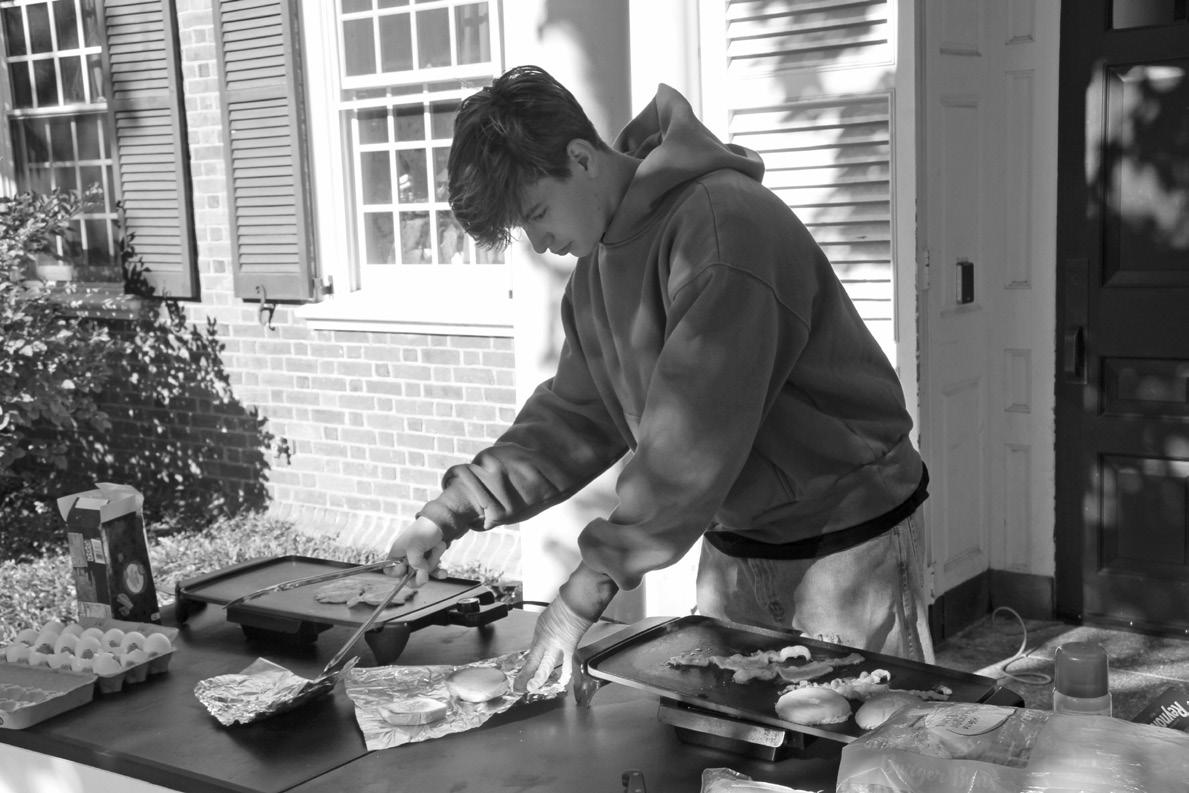
they want the Yale Sandwich Guy to continue, I just need to dance around the guidelines,” Lake said. Huck Moore ’28 got a sandwich from Lake on Thursday in the Pierson courtyard. Moore said he was grateful for the “delicious” sandwich because he didn’t have time to go to the dining hall.
“It carried me through all my classes and it was good service,” Moore said. “I think it’s very important because it gives people the chance to take advantage of being around people doing interesting things that they might not do elsewhere.”
Moore described Lake’s entrepreneurship as an example of “the American spirit and promise in its greatest form.”
Koby Chen ’26 bought a sandwich from Lake on Thursday while walking to the gym. After peering at Lake’s hand-painted azure sign, Chen said he wondered, “Who’s the Yale Sandwich Guy?”
He found out after purchasing a “fire” and “really good” bacon-
egg-and-cheese. He also struck up a conversation with Lake about the importance of tabling around campus.
“We have very interesting rules about what we’re allowed to do and they kind of stifle the ability of students to organize, come together and form community, so it’s good to see the Yale Sandwich Guy doing his thing,” Chen said. “It was a good opening to my day.” Lake said he plans to continue selling sandwiches as long as he’s at Yale.
In the future, he hopes to expand his repertoire to grilled cheeses and pancakes. He also considered selling matcha, alongside his sandwiches, after taking inspiration from the performative male contest, an event that drew hundreds of students, last month. For those looking for a vegetarian option, Lake also sells baconfree egg melts.
Contact OLIVIA CYRUS at olivia.cyrus@yale.edu
BY SARAH RIVAS CONTRIBUTING REPORTER
Miguel Cardona, Joe Biden’s secretary of education, recently joined the faculty of Yale’s School of Management.
Cardona, who once taught at an elementary school in Meriden, was previously Connecit -
cut’s commissioner of education. Since Cardona served in the Biden administration, President Donald Trump has significantly reduced the Department of Education. Earlier this year, he signed an executive order demanding the closure of the education department in favor of sending its responsibilities to the states.

“We’re at a time where the current administration is taking aim at anything related to equity. And the appointment and the call of Secretary Cardona to come teach at SOM shows that there is a commitment on the part of educators at Yale to still value equity,” Nathan Dudley ’82, a lecturer on public school education policy, said.
Cardona will co-teach the elective course “Education Policy” — which will cover such as accountability, college access and economic returns to education — with professor Seth Zimmerman during the 2025-26 academic year.
Dudley highlighted Cardona’s stances on improving “college affordability” and creating “career pathways” as ones he hopes students learn from in the course.
Beyond teaching, Cardona will also participate in programs run by The Broad Center — a School of Management program focused on K-12 public school students — to engage with leaders of school systems.
“What I think will be special about the course is that we will take on education policy issues in the context of specific decision points. Dr. Cardona’s expe -
rience as leader at the local and state level here in Connecticut and then at the federal level as Secretary of Education will give us a window into what the people making key choices were thinking,” Zimmerman wrote to the News.
Cardona and Zimmerman will explore how institutions like Yale fit into the higher education landscape and challenge their students to reflect on how policy decisions are made in circumstances of uncertainty and limited information.
“This is an incredibly challenging time politically nationwide, especially for the field of education, which I love so dearly as a strong believer in the federal government’s role in empowering and supporting schools, especially public and low-income schools, so it is not surprising that Yale made this call” Roy Kohavi ’26, a student in the intensive education studies certificate, wrote.
Dudley added that Cardona’s commitment to supporting teachers is especially valuable now, when teachers and teachers unions have been under attack by the current administration.
“I’m interested to see how Dr.
Cardona’s experience in high-level governance will impact his teaching, particularly in how to maintain focused commitment to students when there are so many stakeholders vying for an education leader’s attention. Because that’s really who education leadership is about: students,” Noemi Liu ’26 wrote.
Liu added that “though Cardona was a prominent politician and has much insight to share on navigating federal leadership,” she is “the most excited about his experience as a practitioner and local leader.”
There is a large “policy-practice divide in education,” according to Liu, where the guidelines implemented by policymakers are often not translated effectively into practice within classrooms.
This reality makes a professional such as Cardona, who has worked at every level of public education, invaluable, she said.
Cardona, a Connecticut native, became the state’s youngest principal at age 27 and later its commissioner of education.
Contact SARAH RIVAS at sarah.rivas@yale.edu .
BY HAILEY YOUNG
CONTRIBUTING REPORTER
Students will gather Saturday afternoon on Cross Campus to take part in Yale’s first-ever Pudding mit Gabel — pudding with fork — a viral Gen Z trend filling the streets of Germany and Austria and circulating on social media.
The 3 p.m. event — organized independently by Anneliese Hammer ’28, a German language student, in collaboration with the Department of Germanic Languages and Literatures — is meant to engage the student body in a lighthearted celebration of German culture. cq
“I first saw the trend on TikTok, and a friend sent it to me because she knew I was taking German,” Hammer said. “I thought it
seemed like a fun way to get people together, hang out and get outside.”
In Germany and Austria, “Pudding mit Gabel” events often pop up through mysterious signs or posts announcing a time and location, Hammer explained. Attendees bring their own pudding and fork, meet in a public space and often start a drumroll as the host delivers an impromptu speech before they start eating.
Within a few weeks, Pudding mit Gabel began to attract hundreds of young people around Europe, per Hammer. The unconventional utensil choice sticks out.
“Eating the pudding with a fork seems strange, but I think the purpose is that it takes longer to actually eat,” Hammer said. “It opens
up an opportunity to talk to more people. I hope that Pudding mit Gabel will be a way for students to keep building community.”
To bring the experience to Yale, the German department helped fund pudding cups and forks for participants, in the hope that students will engage with their offerings while connecting with a trend that has slowly made its way to many parts of the U.S. Pudding mit Gabel events have already taken place on many college campuses such as Northeastern University, Syracuse University and the University of California, Los Angeles.
“I am really excited for this event and hope it is a chance for us to highlight a ‘fun’ aspect of contemporary German culture that might make students excited
about taking a German language class in the future,” Theresa Schenker, the director of Yale’s German language program, wrote in an email to the News.
German professor Sophie Schweiger, the department’s director of undergraduate studies, who is from Austria, recalled a friend’s experience participating in Pudding mit Gabel. Schweiger said she has heard the gatherings considered Gen Z flash mobs.
“From what I gather most people join to enjoy time outside, meet new people IRL, and use it as an excuse to ditch the phone for a few hours,” Schweiger wrote to the News. “The irony being, of course, that all of these events get documented on and reported back to social media, the very thing ‘Pudding
mit Gabel’ claims to want to offer an alternative to.”
Overall, Hammer said she hopes to provide a space that brings people together as Yalies wrap up the halfway point of their first semester.
“I haven’t heard much about the trend aside from quick glimpses online, but I’m excited to go and meet more people interested in the culture!” Olivia Bley ’29, a German American student, wrote to the News. At the Pudding mit Gabel event on Cross Campus on Saturday, complimentary pudding and forks will be provided for the first 100 attendees, according to an advertisement for the event.
Contact HAILEY YOUNG at hailey.young@yale.edu .
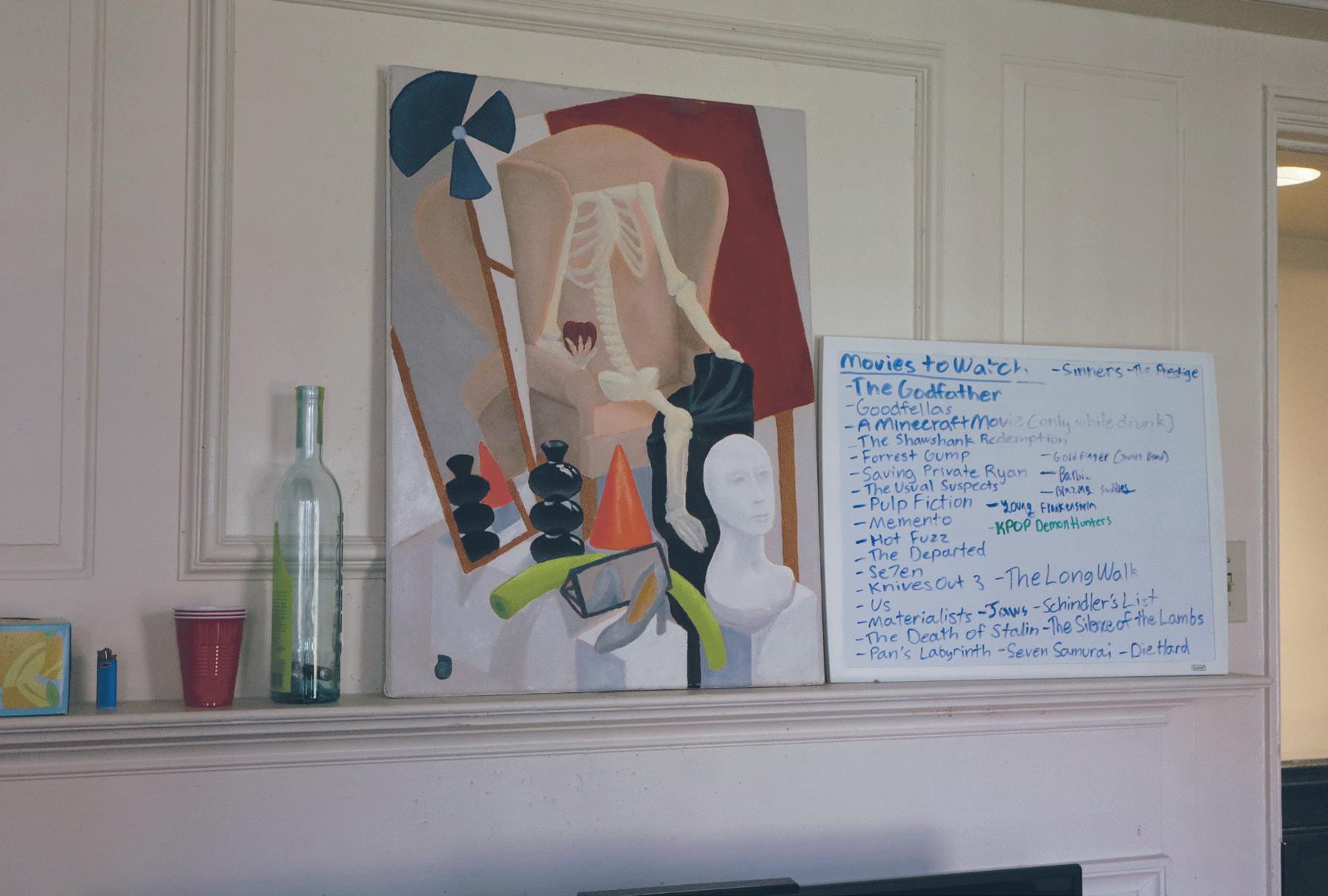

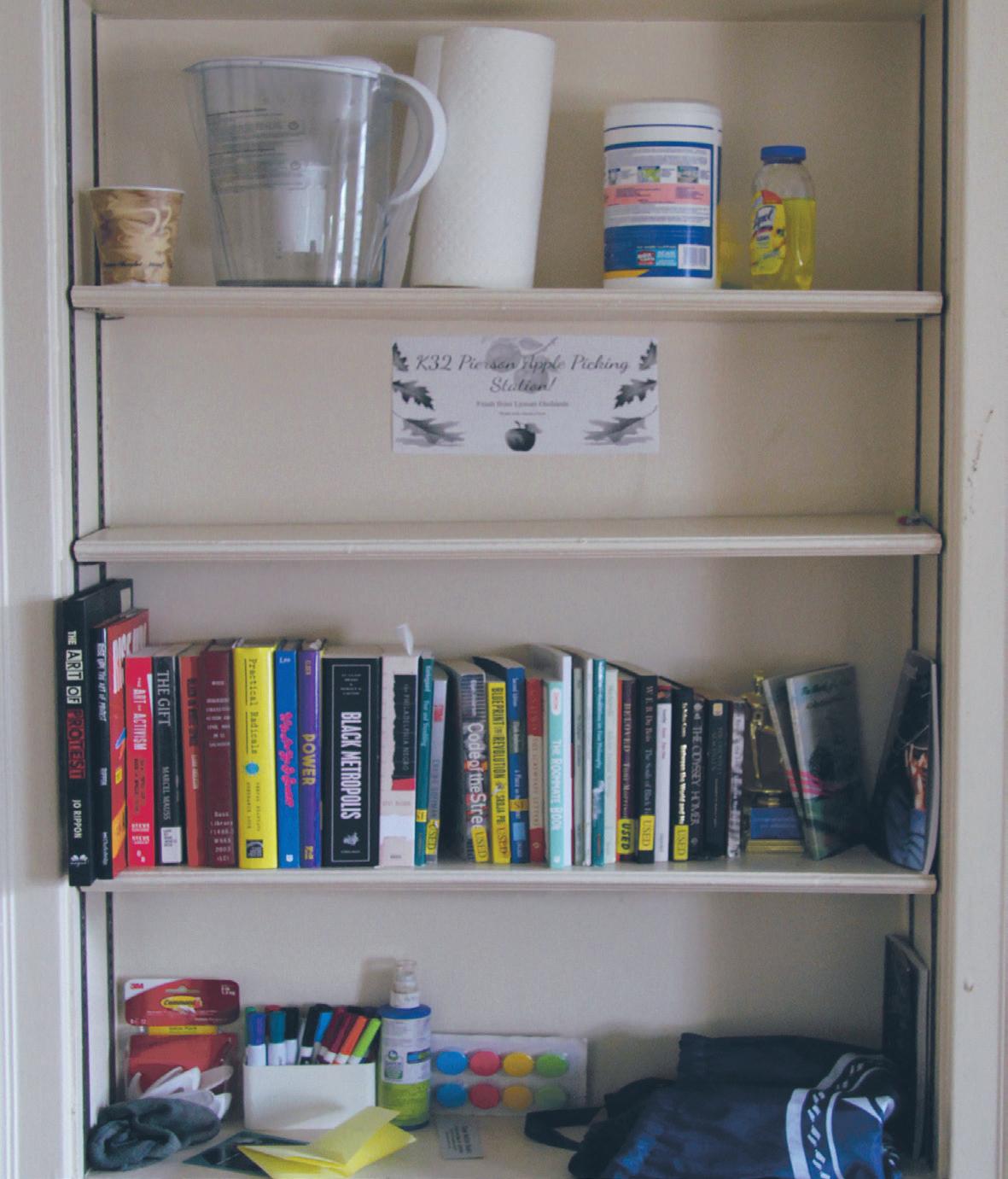

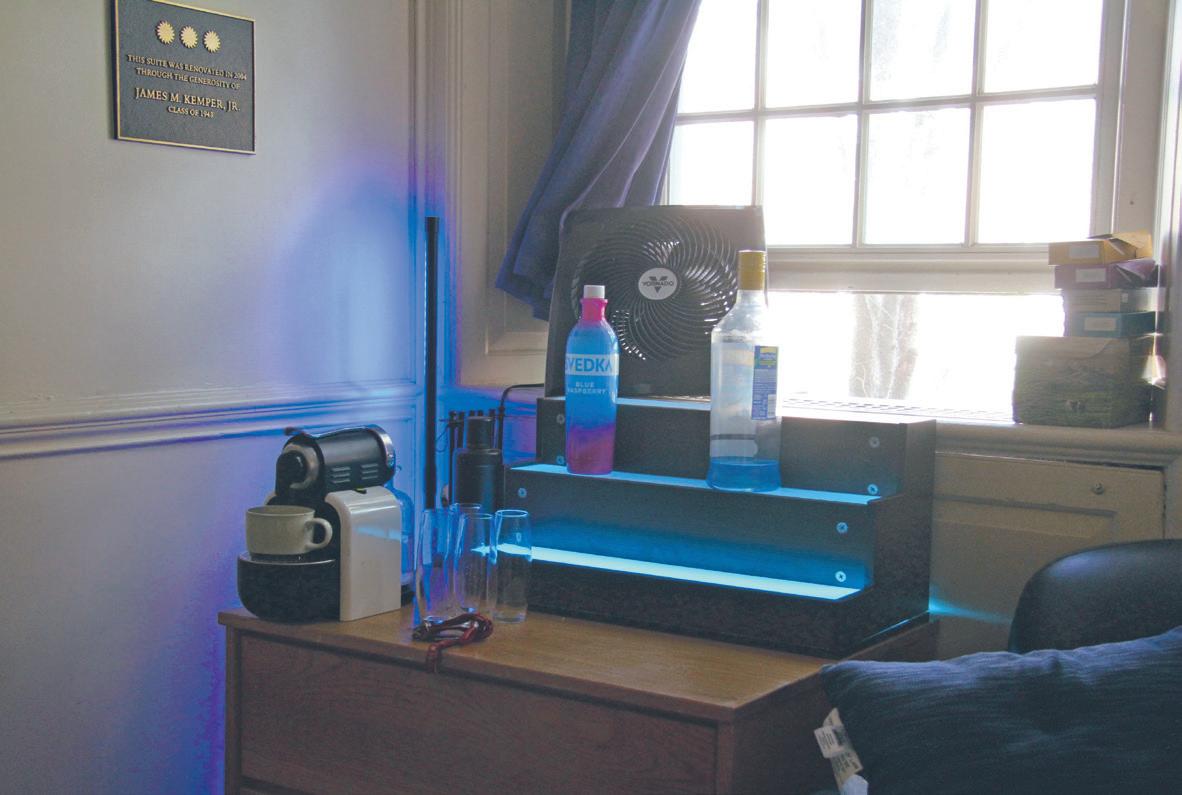


Contributing
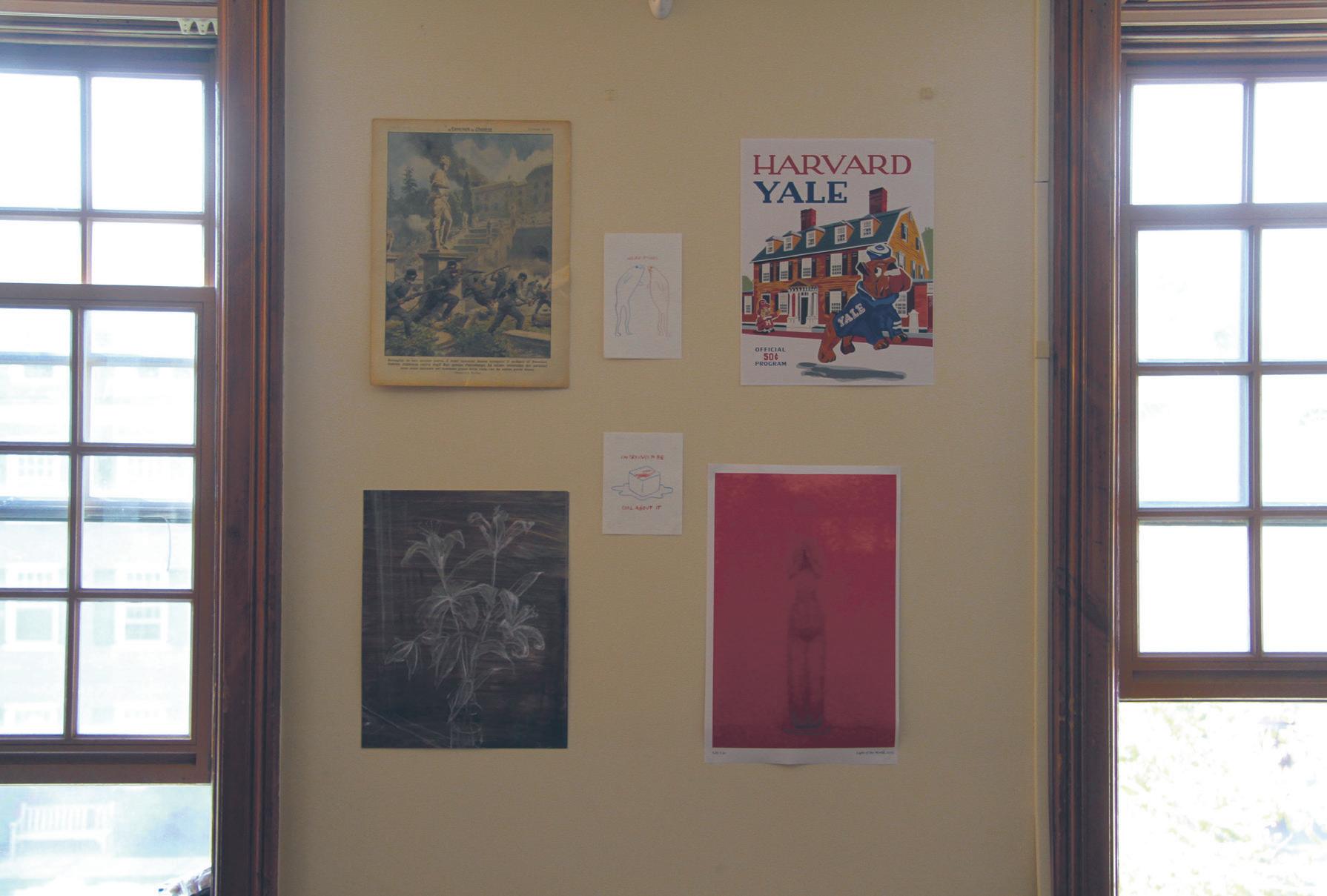
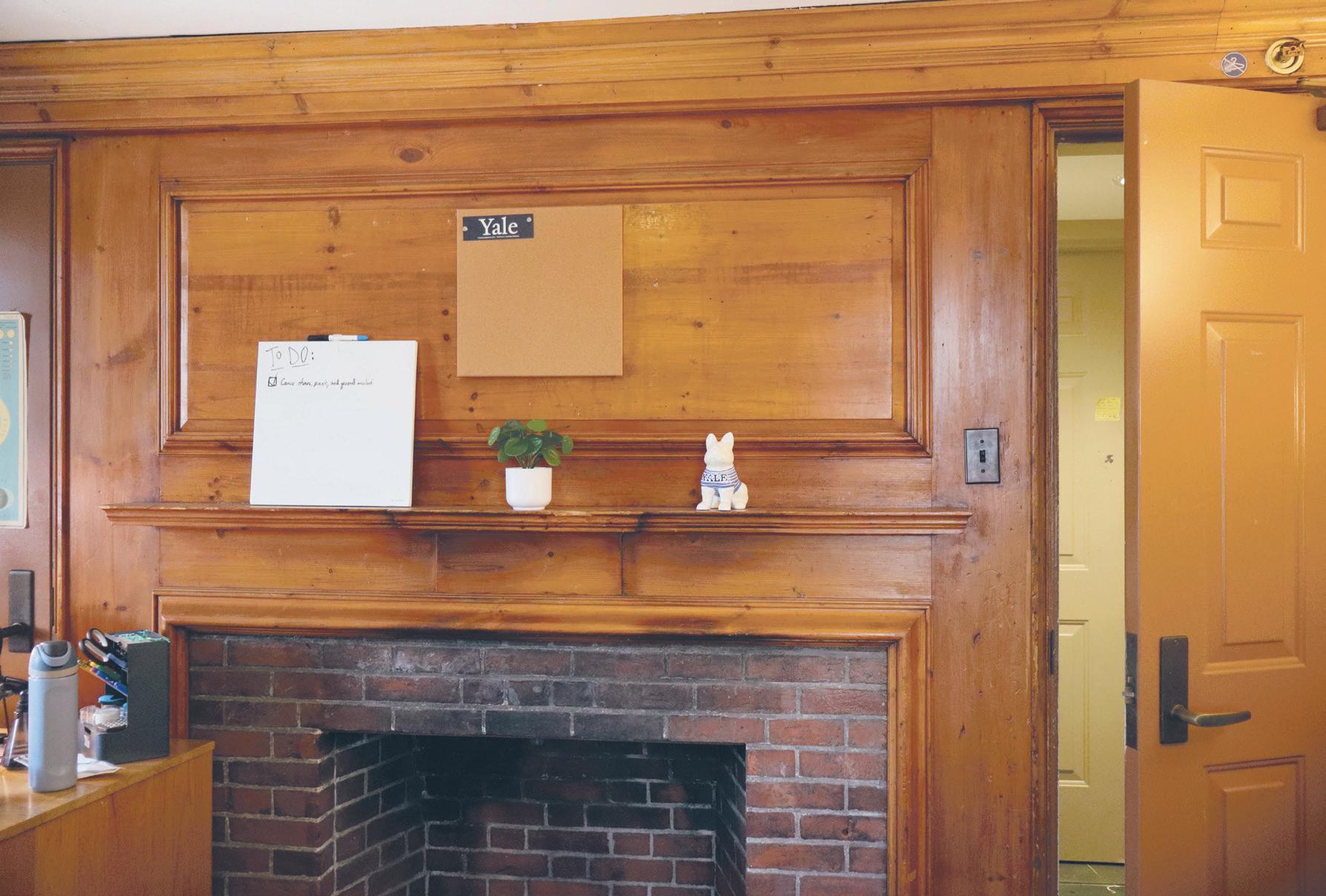


BY BRODY GILKISON STAFF REPORTER
Team 152 (2–1, 1–0 Ivy) will make a trip north Saturday to match up against their second Ivy League opponent of the year, the Dartmouth Big Green (2–1, 0–1 Ivy).
Yale comes into the game with hopes of bouncing back from their first loss of the season against No. 7 ranked Lehigh on Saturday. Meanwhile, Dartmouth enters the contest after dropping their game against Penn (2–1, 1–0 Ivy) over the weekend, 36–24.
Lock down the secondary Dartmouth quarterback Grayson Saunier has shown a propensity to utilize his arm talent early and often in the Big Green’s first three games of this year. Saunier currently leads the Ivy League in pass completions this season with 68, averaging just over 260 yards per game while completing his passes at a 65.4 percent rate. However, he has also been prone to turning the ball over, with four interceptions already this season.
“You have got to defend the entire field with these guys,” Yale defensive coordinator Sean McGowan said in a Yale Athletics press release. “They have an experienced quarterback. And then they have three receivers on the outside that really test you with great speed. So it’s gonna be a great challenge.”
For the Bulldog defense, McGowan’s message should be music to their ears: they have earned their keep all season defending against the pass. Yale has held their opponents to 211 yards per game in the air and has picked off the opposing quarterback four times. Led by defensive backs
Osize Daniyan ’27, Abu Kamara ’27 and Joshua Tarver ’26, the Bulldogs will need to have air-tight pass coverage against the prolific Saunier to prevent the Big Green offense from marching down the field.
Swiss army knife
Whether it be in stopping the run, dropping back into coverage or rushing the passer, linebacker Inumidun Ayo-Durojaiye ’26 has been all over the field on defense this season. After having 6.5 tackles in the first game against Holy Cross, he then broke out for nine solo and 13 total tackles against Cornell. Against Lehigh, he one-upped his previous stat line as he notched 10 solo tackles, becoming only the second Bulldog to do so in the past five seasons besides Kamara.
With the Big Green’s impressive air attack, along with their run game averaging nearly 130 yards per game, Ayo-Durajaiye should be right in the middle of the action, and his ability to wreak havoc will be much needed in this matchup.
Protect the ball So far this season, there has been no shortage of opportunities for the Yale offense to put points up on the scoreboard, in large part due to the number of turnovers the defense has been able to create. However, holding onto the ball and not giving it right back to the defense has been a struggle for the Bulldogs. Last weekend, Yale turned the ball over three times, including two passes inside the red zone that could have potentially been converted into six-point scores for the Bulldogs. Yale put together a number of strong
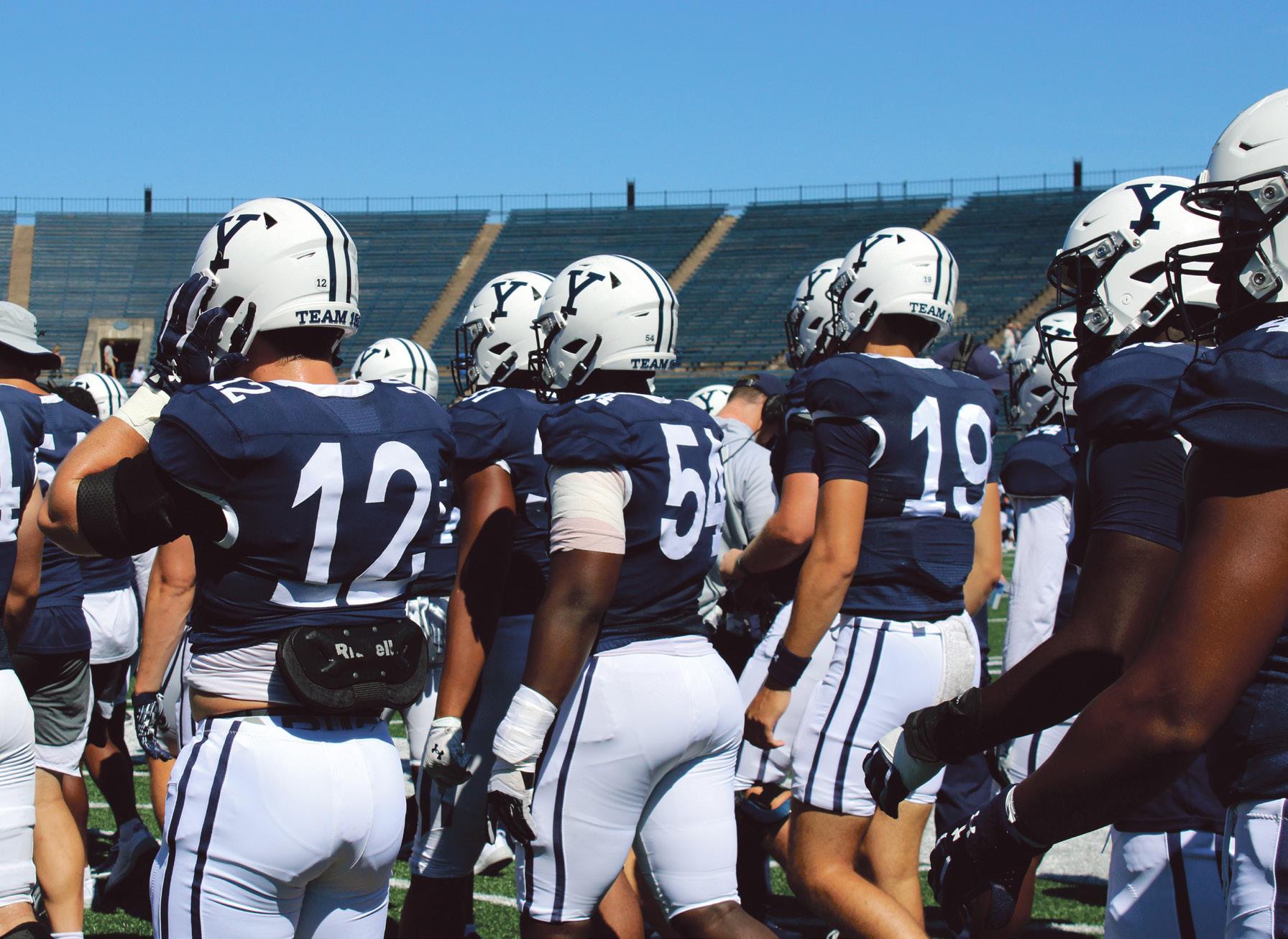
drives, but instead of finishing with the ball in the endzone, the Bulldogs got sloppy and didn’t convert on their drives.
Yale has also fumbled the ball four times on the year, which slows the offense down as well. Turnovers don’t just lead to missed opportunities for the Elis, they also give the opponents more chances to put points up on the board. Holding on to the ball will be paramount in determining not only the outcome of the game this
BY LIZA KAUFMAN STAFF REPORTER
The men’s soccer team (2–6–2, 1–0–1 Ivy) beat the University of New Haven Chargers (3–2–4, 1–0–1 NEC) Tuesday night under the lights at Reese Stadium.
With both of Yale’s goals coming from first-year players, the Bulldogs took down the Chargers 2-1 on Yale’s home turf.
Tuesday’s game was the first matchup between the two New Haven-based schools since the University of New Haven joined the NCAA Division I Northeast Conference in May. The University of New Haven previously competed as an NCAA Division II school.
Going into Tuesday’s game, the Elis were coming off a clean sheet 1-0 Ivy League victory over the Columbia Lions and were looking to build on the momentum. The Chargers were also coming off a 2-1 triumph over Central Connecticut State University and hoped to topple the Bulldogs.
Ahead of Tuesday’s game, defender Andrew Myerson ’27 said the team would rebound quickly and use Tuesday as an opportunity to continue refining their game before they face Harvard on Saturday.
“We need to get our bodies ready for that one because it’s a quick turnaround just three days after a very exciting and tough game. You have to take one game at a time,” Myerson said in a phone interview. “Tuesday is important, but our Ivy League record is the priority, so we will likely make a few changes going into Tuesday so we can make us 100 percent on Saturday.”
UNH’s Andrew Miranda, hungry to put his team on top, scored the first goal at the one minute mark on Yale goalkeeper Conrad Lee ’26, to put the Chargers on the board 1-0. Despite UNH taking an early lead, the Bulldog offense charged forward and did not let the Charger’s early goal deter them. Forwards Simon Adjakple ’27 and Joseph Farouz ’27 continued to rush UNH’s goal. The Chargers’ goalkeeper, Shane Antao, stayed quick on his feet, blocking a header from Owen Bull ’28 off a corner kick and a shot from Adjakple. The Bulldogs were finally able to get the ball past the posts in the 32nd minute of the first half. Sven Meacham ’28, who leads the team in assists, made his way past the Chargers’ defenders and passed the ball to first-year midfielder Billy Altirs ’29. Altirs’ goal, his second this season, tied up the game at 1-1.
Yale kept up the momentum, determined to take the lead before the end of the first half. At the 40th minute mark, Meacham passed the ball to Nathan Harmon ’29, who fired a shot past UNH’s goalkeeper to give the Bulldogs a 2-1 lead over the Chargers. Harmon’s goal was his first as an Eli.
In the second half, the Bulldog defense successfully protected Yale’s lead for the 45 minutes, refusing to let the Chargers tie up the game. Yale finished Tuesday’s game with a solid 2-1 victory.
Reflecting on their two game winning streak, Nick Miller ’27 highlighted key areas where the team has improved.
“We’ve done a better job of retaining possession lately,
which is great because it allows our offense to get going and apply pressure to the opponent’s backline. Having more of the ball helps our defensive group, too, because it enables us to breathe a bit and focus on executing the plays we have to make,” Miller wrote to the News. “Most importantly, we’ve learned what it takes to win games, which is a huge advantage.
The Elis will now look to continue the winning momentum for the rest of the season.
“For our team, ‘Win October’ is a mantra we strive to live by, as this month often determines the course of our season due to the high percentage of Ivy League matchups,” Miller wrote to the News. “We’ve gained a lot of confidence and belief after earning two big results that we will certainly carry into this upcoming game at Harvard.”
According to Myerson, Saturday’s game against the Harvard Crimson (3–4–3, 0–0–2 Ivy) is the “game of the year.”
Harvard, tied for last place with Dartmouth in the Ivy League standings, have finished their last five games with two 0-0 draws against Northeastern (2–6–2, 1–0–4 CAA) and the University of Vermont (8–0–4, 2–0–0 AEC), and three losses in a row to Princeton (8–0–1, 2–0–0 Ivy), Boston University (7–0–3, 3–0–1 Patriot) and Penn (5–2–3, 1–0–1 Ivy).
“It will be fun to play at their house and beat them away,” Myerson told the News.
Kickoff is slated for Saturday at 7 p.m.
Contact LIZA KAUFMAN at liza.kaufman@yale.edu.
weekend, but the team’s success for the duration of the season.
In the matchup last season between Yale and Dartmouth, the Bulldogs jumped out to an early lead. Quarterback Grant Jordan ’25 had a school-record 412 passing yards and five touchdowns but it wasn’t enough as Dartmouth fought back and came out on top in overtime 44-43. This season, winning a conference championship means a trip to the
postseason for the first time, and that is just an extra layer of motivation for both teams. This in-conference battle should have both teams fighting tooth and nail to come out on top. Yale kicks off against Dartmouth this Saturday at 1:30 p.m. at Memorial Stadium in Hanover, New Hampshire. Contact BRODY GILKISON at brody.gilkison@yale.edu .
BY AZARA MASON CONTRIBUTING REPORTER
The Yale men’s golf team wrapped up play at the Hamptons Intercollegiate on Tuesday, finishing seventh overall in a field that included nationally ranked programs such as No. 3 ranked University of Mississippi and No. 15 ranked Florida State.
The competition didn’t seem to rattle captain Will Lodge ’26, who finished second overall at three under par (72–69–72).
“I always find Maidstone a great opportunity to go beat some top guys and put up a strong performance,” Lodge said.
Lodge’s steady play was anchored by a bogey-free second round and an eagle on Maidstone’s par-5 15th.
“Fifteen is a fairly easy hole if you execute your shots properly, but that’s obviously tough in high winds and under pressure,” Lodge added. After hitting a precise 7-iron from 205 yards out to within four feet, he sank the putt. This is a hole he has “liked a lot over the years,” even recalling an albatross there last season.
Lodge said he was pleased with how he maintained composure in the windy conditions.
“Going bogey-free in Round 2 was what I was most proud of,” he said.
“It’s great to put up a nice round, but to finish without really any mistakes was a strong feat. The conditions were extremely tough, so I was really happy with how I grinded out the round and managed my ball around the course.”
Matt Lin ’28 praised Lodge’s consistency and precision for setting the tone for the entire team.
“It was great to see Will play so well,” Lin said. “As our captain, he emphasized the importance of smart decision-making
on a course like this—especially with the high winds and challenging greens. His performance was a reminder of how crucial it is to manage your game thoughtfully.”
Lin also delivered a strong finish of his own, tying for 37th at +8 after capping the tournament with a closing-round 72.
“Going into the third round, I focused on improving my putting and being more consistent off the tee — both of which had been weaknesses earlier in the tournament. I’m glad those adjustments paid off and were reflected in my final score,” he remarked.
He pointed to one shot that captured his momentum on the final day.
“On hole 16, I hit my second shot into the bunker short right of the green and faced a 30-yard bunker shot with the green sloping left to right,” Lin said. “I was able to land it 15 feet short and left of the pin, and it rolled out to about a foot for a tap-in birdie. It was a tricky shot, and I was proud to execute it under pressure.”
Like Lin, Sam Davis ’26 also bounced back by the end of the tournament. After an 80 in Round 2, he rallied with a final-round 70, posting five birdies in his last 18 holes. Both players’ finishes helped Yale maintain its standing in a competitive field and highlighted the team’s depth heading into the final stretch of the fall season.
Yale finished 7th at +18 while Georgia captured the team title at –7, followed by Wake Forest (–4) and Ole Miss (+1). The Yale men’s golf team will close their fall season at Sleepy Hollow Country Club on Oct. 17 in Briarcliff Manor, N.Y.
Contact AZARA MASON at azara.mason@yale.edu .

Francisco, where he’s now building Capacitive, a startup that helps enterprises build custom AI agents.
Radhakeeson, originally in the class of 2028, had spent high school working toward Yale. He was recruited to row crew and committed because he was drawn to the team’s culture and the school’s finance pipeline. “Your whole life revolves around college when you’re in high school,” he said. “That’s kind of the way I was.”
He and his co-founder Kevin Treehan, also originally class of 2028, were high school friends who started talking about startup ideas the second they arrived at Yale. They applied to Y Combinator, informally known as YC, a prestigious startup accelerator that gives early-stage technology companies funding, mentorship and a powerful network. They didn’t get in the first time. Then, YC added a winter round of applications, and the pair applied again, mostly on a whim. “I did not think we were going to get in and I was going to, you know, drop out,” Radhakeeson said.
YC gives accepted students $500,000 on the condition that they leave school and move to San Francisco. “If it didn’t come with that 500K check, I don’t know if I would make that decision to leave Yale,” Rohan says. He has friends who have raised over a million dollars for AI startups even without participating in accelerators. “How available the capital is is really what helps people make that decision to drop out.”
students $200,000 to leave school and build “new things.”
The Palantir Meritocracy Fellowship offers high school seniors funding to delay college and work at the company. Ironically, as programs that pay students to drop out have grown in size and popularity, their admissions processes have begun to look more and more like college applications. YC recently introduced YC Early Decision, a program in which students apply early, get accepted and funded immediately, but are not obligated to drop out. They can instead commit to joining at any point during college or right after graduation.
Certain tech leaders increasingly suggest that traditional four-year degrees are a waste of time. Elon Musk has regularly argued that “you don’t need college to learn stuff.” Peter Thiel, founder of the Thiel Fellowship and Palantir, has called college “a bubble” and argued that “we have a society where successful people are encouraged to go to college. But it’s a mistake to think that that’s what makes people successful.” In fact, Thiel came to Yale just over a year ago to argue that point at a YPU event.
Radhakeeson doesn’t sound like he fully subscribes to this criticism of higher education. Yale has been supportive of his decision. He’s on an indefinite leave of absence — officially two years, although his dean told him he could take more time if needed. He can return whenever he wants.
out to explore the city he lives in.
He wishes he was more in touch with his friends from Yale, but it’s clear that his work comes first.
“At the end of the day, for me, I dropped out to come build this, and that’s my biggest and sole priority at the moment,” Radhakeeson said. “So I have to just stay true to that.”
Radhakeeson hasn’t rejected what Yale offers. He was proud to be a Yale student, has visited three times since dropping out and clearly believes in the University’s mission. But he’s made a bet that what’s happening in AI right now can’t wait four years. Or even one more semester.
Radhakeeson visited New Haven the weekend after we talked. He ate in the Silliman dining hall and saw friends who now lead the clubs he left behind, who are taking the classes he dropped. Then he flew back to San Francisco.
Radhakeeson “can’t comment” on whether or not he’ll come back to Yale. He says he’s 100 percent committed to the work he’s doing now — everything hinges on Capacitive. In the hectic and unpredictable world of AI startups, almost nothing is certain. The only thing that’s definitively in his future is work. Lots of it.
Contact TANISH DOSHI at tanish.doshi@yale.edu.
// BY ESMERALDA VASQUEZ-FERNANDEZ
The Venice breeze gently crept in from the open window as I laid on the white linen sheets. The first few seconds of Big Thief’s “Incomprehensible” hit me in the back of the head like a tuning fork. The song transported me into a dream-like state, like glitter was falling all over me, putting the rest of the world out of focus. I could feel my iPhone’s speaker vibrating, synchronizing with my heartbeat while I fought to keep my eyes open. The song transports you into a meditative state. It quickly became the theme song of my European summer.
“Incomprehensible” was the first song released from Big Thief’s new album, “Double Infinity.” Released as a single, it quickly
became the album’s most popular song.
“Double Infinity” reads like a story of self-discovery as you fall in love with yourself and someone else. The key romance depicted in the album revolves around that self-love. The album asks listeners to accept their authentic selves and to accept what they cannot control.
The album is named after the song “Double Infinity,” which encapsulates its duality. It balances discovering aspects of yourself that have “been lost” with “what lies waitin’.” The album captures the mourning of your youth but celebrates growing and evolving with age.
the past.”
Throughout the album there is a thematic structure that reiterates rebellion against having to explain yourself. In “Happy with You,” the band directly poses the question being asked in every song with the lyrics, “Why do I need to explain myself?” Big Thief argues at the start of the album to let people be “incomprehensible.”
Although the album consists of nine songs — which is 11 songs fewer than the band’s previous album, “Dragon New Warm Mountain I Believe in You” — it builds an even more consistent sound and story than its predecessor. The song that stands out the most is “Grandmother,” naturally the only one with a feature.
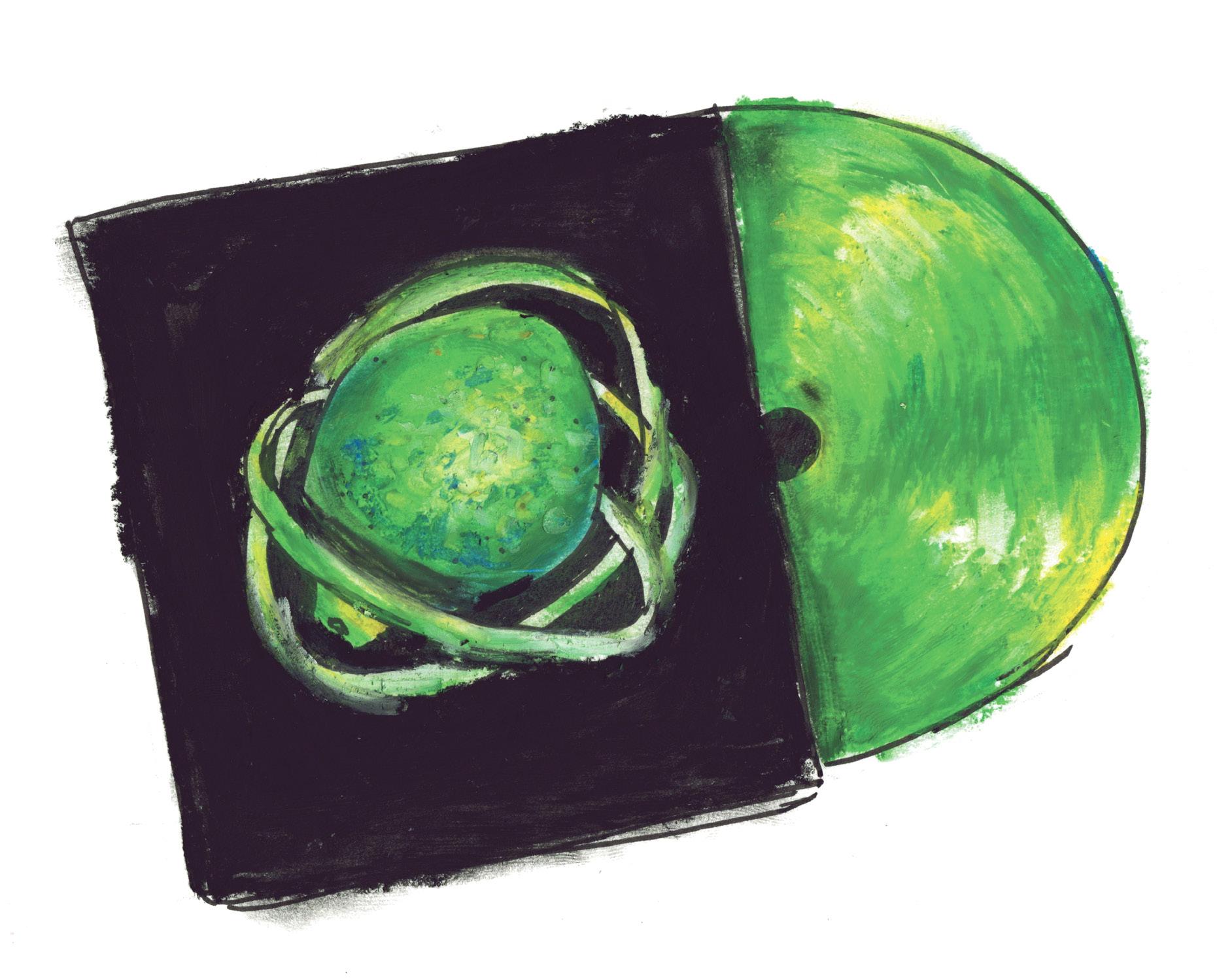
The listener can truly see “pictures of another from the future or
confine itself to a certain realm of love.
Generational family love is one of the themes the album explores through song titles like “Grandmother” and other references to parental figures.
“Double Infinity” is perfect for all seasons of life.
Laraaji, the featured artist, brings transcendent vocals to the piece. He lures the listener into a meditative soundscape.
Adrianne Lenker and Laraaji both end the song with higher-pitched vocals that blend together to fully depict the meditative aura of the song. It makes you feel like you’re dancing around a campfire during a full-moon drum circle in the best way possible. Upon listening to “Happy with You,” I immediately felt an urge to joyfully move my body around my room. The strums of guitar that play behind the repetition of the lines “poison shame,” “happy with you” and “why do I need to explain myself” elevate the mood of the song. It feels like happily and shamelessly dancing with anyone. It could be your first love or someone you probably shouldn’t be dancing with or even a relative. The song is beautifully composed and doesn’t
// BY ANNA PAPAKIRK
The last few weeks for me have been summed up by training, cramps, back pain, caffeine and carb loading.
You probably think I’m running a marathon — I wish! That would be much easier. Alas, I am preparing for something far more grueling, extremely taxing on the body and the mind: Yale’s midterm season. Training? That’s hours spent training my brain to memorize anything and everything. Cramps? Hand cramps from writing copious amounts of notes and practice exams. Back pain? I’m hunched over my computer more than eight hours a day. Caffeine? Self-explanatory. Carb loading? This one has nothing to do with midterms in particular, but I just love bread and anything adjacent, so that’s what I’ve been eating, per usual. Having four semesters of midterms under my belt, I’ve learned the excruciating truth: midterms at Yale are a marathon, not a sprint. Midterms pile up, one after another, never allowing you to catch a break. After running 13.1 miles, feeling so accomplished, there’s still 13.1 to go. A midterm in the middle of September and one in the last week of classes? Yes, that checks out. It is a series of constant gasps for air. Unlike midterms, finals are a sprint. A weeklong 100 meter dash, where the gold medal at the finish line is winter break.
If you are thinking to yourself, “What do you mean midterms? I have none! I don’t have to sit down for a single exam!”
I’m afraid you have been deceived by the “Triple P Threat”: papers, projects and presentations. These assignments sneak up on you and can be even worse than sit-down exams. They demand a level of perfection that’s difficult to attain. You think you have it under control, then it’s 11:51 p.m., and you just submitted a paper with only eight minutes to spare.
Two weeks ago, I stayed up super late on Friday and Saturday. Not because I was in the backyard of a frat until the wee hours of the morning, but rather because I was writing the two papers and memo I had due on Sunday night. Once the final paper was submitted, I thought I’d feel a weight lifted off my shoulders — a sigh of relief. Yet, I had a midterm on Wednesday that I needed to study for — a sigh of a different sort.
I’m someone who has always enjoyed school. I love taking interesting courses and learning new things. Yet tests and essays always complicated that relationship. Trying to learn random facts just to regurgitate them on an exam and then forget them later or cranking out a paper on a topic I’m not passionate about challenges the enjoyment of school.
Nevertheless, something interesting happened to me this midterm season. Besides the time crunch and stress, I was enjoying the process. I feel weird writing that out, but I was genuinely so interested in the topics of my papers that writing them felt — dare I say — not that
bad? And the midterm I was studying for that Wednesday? The material fascinated me. I did not feel like I was just writing to write; I was invested in the topic and inspired as I wrote. And I wasn’t just studying to study; I was internalizing the material and thinking about how it applied to my own life.
Call me crazy — and I’m sure the lack of
“Double Infinity” is perfect for all seasons of life. Big Thief balances the natural joys and griefs of life with each song, making it hard to label them into a binary of sad or happy songs. This strengthens their focus on life’s duality, or a “double” way of looking at life. Depending on how one feels, the same song can elicit different emotions that are internally trapped and begging to be addressed. Because of this, it has earned the title of my favorite Big Thief album. Lenker, Buck Meek and James Krivchenia have once again created an unforgettable album that celebrates the human experience. Although the album is only around 42 minutes long, the listener doesn’t feel robbed of an experience because of its formatting and consistent themes. Along with the release of “Double Infinity,” Big Thief announced their “Somersault Slide 360 Tour,” which is beyond exciting because the album is well-deserving of being played live. If the universal human experience sounds in any way relatable to you, listen to the album. If you love it as much as I do — and buy a general admission ticket — you can catch me in the pit.
Contact ESMERALDA VASQUEZ-FERNANDEZ at esmeralda.vasquez-fernandez@yale.edu.
sleep is making me a little crazy — but after crossing the finish line of the midterm marathon, I think I’m ready to run a real one!
Contact ANNA PAPAKIRK at anna.papakirk@yale.edu.
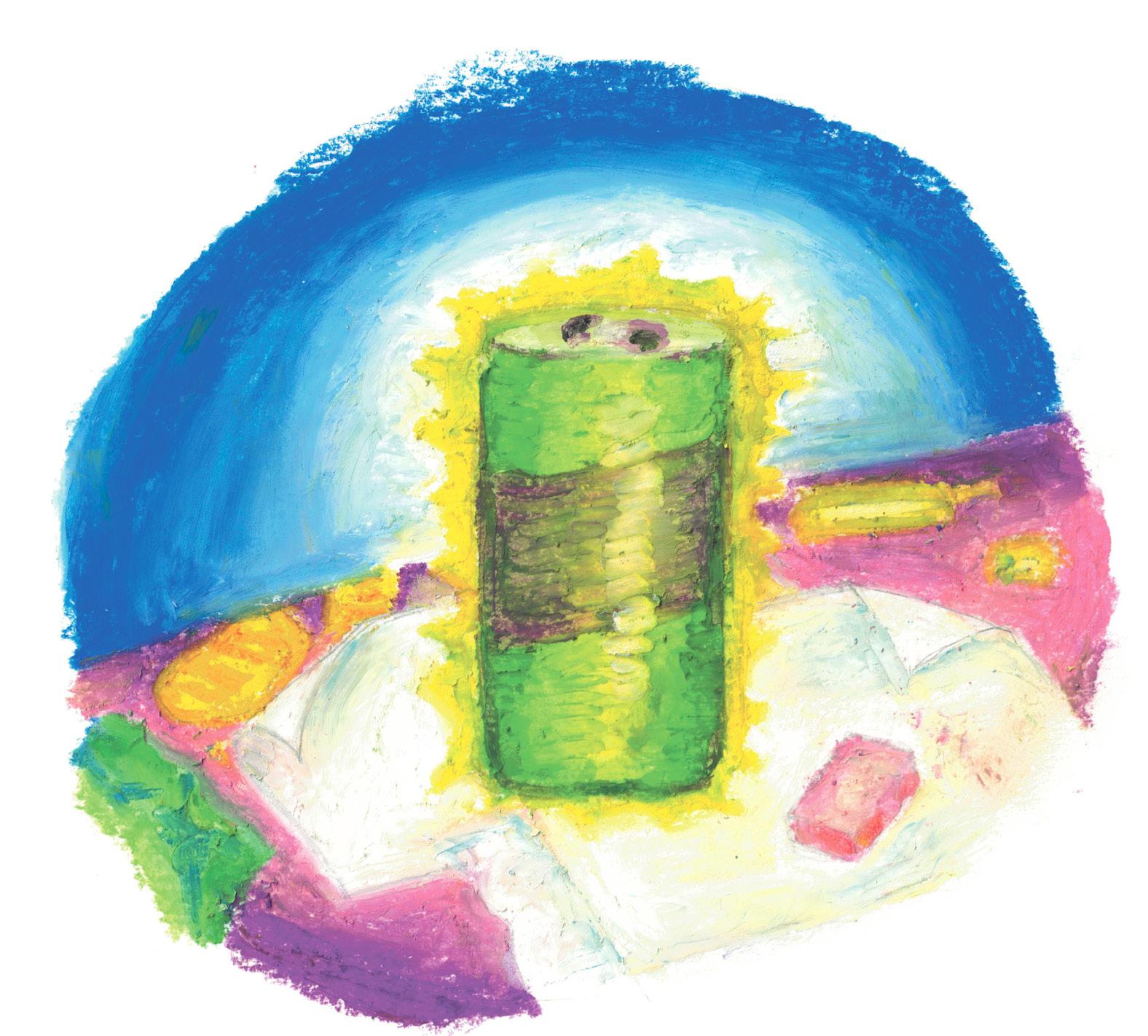
ESSAY
Sterling Library’s Egyptology Reading Room is where I go to ruminate.
// BY ANDREW DEMAR
I didn’t mean to find the Egyptology room. Like most Yale discoveries, I stumbled upon it wandering into some place I wasn’t really planning on going. The room features a single table, a single lamp that emits soft light and walls lined with books. It’s a space with an immense feeling of history. In all honesty, most Yale study spots look similar to this one, but somehow the Egyptology Reading Room has a different feel from those other Yale spaces. For me, it’s the place where I’m in the habit of reflecting on time at Yale.
That’s sort of the point. The room is a space that forces you to be alone with yourself, sometimes for longer than you’d like. It’s a singular table for a singular experience, a reflection of what Yale sometimes feels like: full of other people’s history, but deeply personal all the same.
I think about this whenever I manage to sneak in and sit there — about how much time I’ve spent trying to find my “seat at the table,” figuratively and literally. We inhabit a school where it can feel like everyone seems to have their place already: in student organizations, friend groups and heated seminar discussions. At times, I’ve felt like I was still standing in the doorway, holding my laptop and wondering if I was supposed to knock first.
The Egyptology Room doesn’t answer that question, but it does make me think about it. It’s a place where you can feel the weight of all the history around you — not just Yale’s, but your own. The friendships that once
felt like forever but quietly faded. The moments you thought would define your college experience but didn’t. The small, unglamorous ways you’ve actually grown.
There’s an irony in the fact that a room so meticulously preserved and curated isn’t very practical. You can’t really study there without bumping elbows with the lamp or feeling like you’re breathing too loudly. But that’s Yale, too — charming from a distance, a little messy up close.
When I sit in that room, I don’t feel like I’m making history. I feel like I’m observing it. I’m one student in a long line of people who have passed through, each convinced that their own worries, their own deadlines, their own heartbreaks were monumental. And maybe they were, for a moment. Having spent hours in the Egyptology Room and contemplated the magnitude of my own troubles, I’m inclined to believe they were.
Maybe that’s the quiet charm of this place: It reminds you that being here, even briefly, is its own form of permanence. That the table will remain long after you’ve graduated, waiting for another student to find it and think those thoughts, or maybe entirely different ones.
For now, the Egyptology Room is my secret. And maybe it should stay that way. Part of its appeal lies in how it finds you when you’re ready to be alone with yourself.
Contact ANDREW DEMAR at andrew.demar@yale.edu.
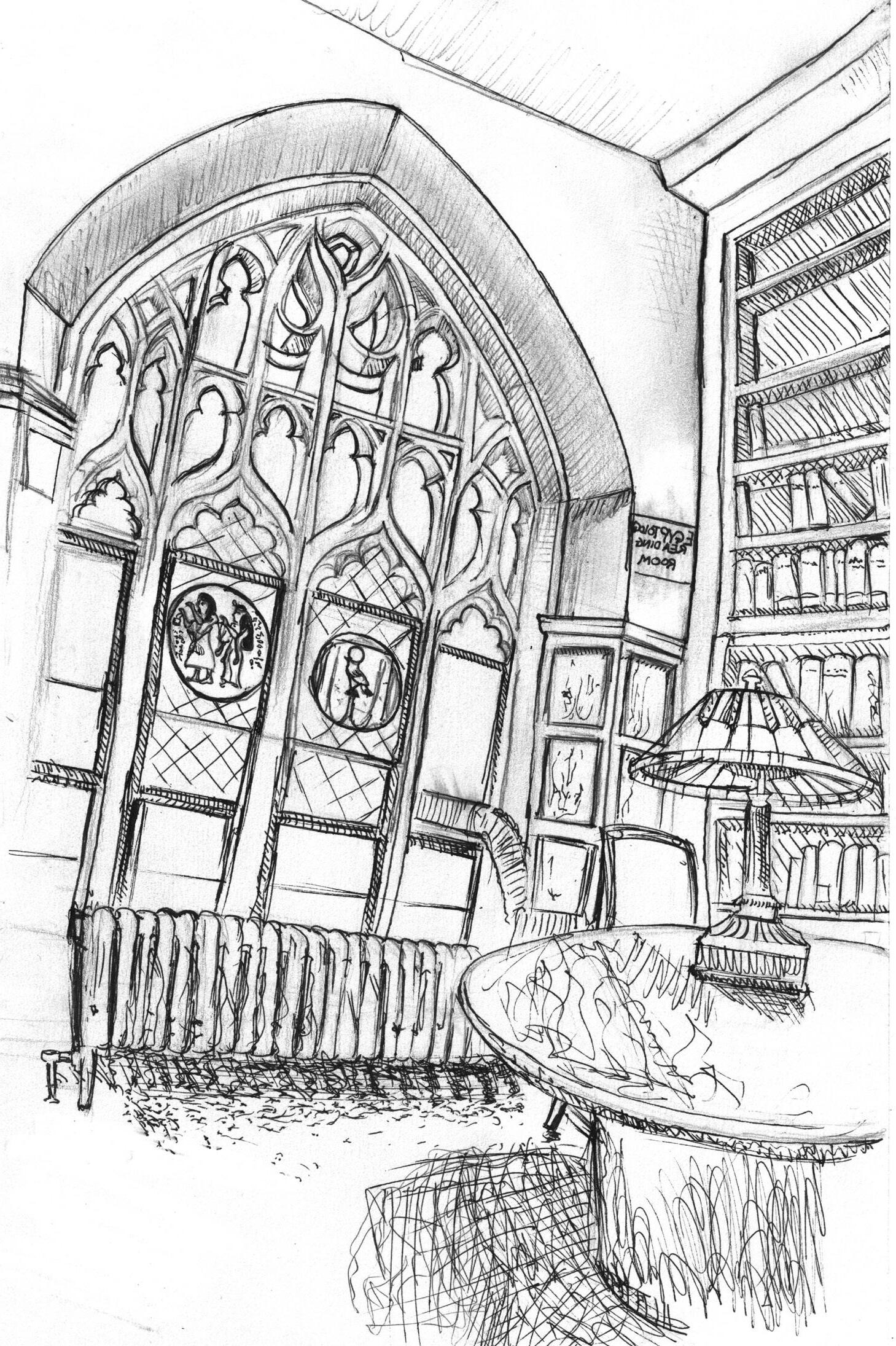
on the bitter millenials at my summer ice cream scooping
// BY ESMERALDA VASQUEZ-FERNANDEZ
Millennials did one thing right: indie sleaze. I wanted to be them, with their Tumblr accounts, their peak Coachella trips, and overwhelming sense of authenticity. They were cool. There was a wide gap between a Karen and a millennial. At least I thought.
It was the Fourth of July in a SoCal beach town, so I was playing the most overzealous music I know: indiesleaze. The soundscape of the ice cream joint where I worked was a blend of incessant customer chatter and vocalist Michael Angelakos’ falsetto.
Only “Sleepyhead” could make me forget that I had been running on canned cold brew and stolen samples of gelato the entire summer. Standing behind the gelato case, I noticed how customers leaned forward, pressing on the glass — as though I were an artist they’d been dying to see. Instinctively, they craved closeness to what they wanted. Join the club.
“Can I get a strawberry swirl sundae?”
A 30-year-old man was asking me this question. He was millennial. Very millennial. I instantly recoiled. His dated style reminded me of my elder sister’s equally millennial white mug. On the side of the mug, in black Amatic SC font, it says “mug.”
It still has pride of place in her
kitchen cabinet.
I would like to personally thank designer Rae Dunn for making sure I know I’m drinking out of a mug instead of a cup every time my sister pours me a mug –— not a cup — of coffee. Is pottery what made millennials uncool?
Maybe the transformation took place when they left behind their dyed-pink hair and decided to have apartments filled with beige furniture instead. I get it: the job and housing market has soured the twee-slash-Tumblr energy they once had. But still. Have some self respect.
I handed off the sundae to the 30-year-old cardigan-wearing man who at least seemed to have a twinkle of joy in his eyes. Was it due to the presence of Passion Pit in our collective sound mix, a band from his youth. His approval of my song choice confirmed my theory that at some point in his life, he was a cool kid.
I wondered if the indie sleaze drought in the Spotify playlists of today’s teens might be to blame for their higher levels of depression. I mean: If the first thing you hear in the morning is Mitski’s “I Bet on Losing Dogs” or Lana Del Rey’s “Dealer,” are you even trying to have a good day?
My coworker, who was likely annoyed to see me on my phone, stepped on my shoes as he slid past me. I continued to hand out samples to eager customers, but I noticed my coworker was
talking to the millennial. He seemed particularly upset. Something about a hair in his gelato.
The twinkle in his eyes — that reminded me of the glittery indie sleaze era — had turned to something more malevolent. In his unintelligible rant, I heard him shout that we were out to get him.
Whatever. It’s just gelato. I couldn’t imagine the daily stress and distaste for life I would need to possess in order to throw an emotional fit over something so miniscule. My employee-of-the-year coworker offered to replace the hair-tainted cup, but had to refuse a refund. Store policy. I held myself back from intervening.
With my back turned to face the milkshake machine, I focused on the consistency of the chocolate shake in my hand, cup shaking from the pressure. A splash of cold hit the back of my neck. I felt it just under my scrunchie-tied bun and left shoulder. It reminded me of being a kid and placing my cold hands underneath my sister’s shirt. Splattered colorful specks clung to the left side of my shirt. It almost mimicked the fireworks bursting outside. I turned slowly, afraid that he would want to fight me face-to-face. Once I turned around, all I saw was a man in a cardigan, running out of the store, crossing the street without even a glance.
Phrases like “Oh
my God are you okay?” filled the customer-packed room. The fearful and shocked stares helped me register that I had been hit with a gelato cannon. My rule-following coworker came running towards me. He’d forgotten my favorite rule: If the customer seems like a raging lunatic, the customer is always right. You’d think with the dated millennial fit he’d have an equally mature way of handling conflict. Growing up I never imagined that a millennial would turn into a Karen so easily. I mean, yes, I would be repulsed by a hair in my gelato cup, but not enough to turn into a baseball pitcher. Maybe the millennial cardigan and the indie-sleaze don’t matter. With time, all people can become bitter. God, I don’t want to end up like that.
Contact ESMERALDA VASQUEZ-FERNANDEZ at esmeralda.vasquez-fernandez@yale.edu.
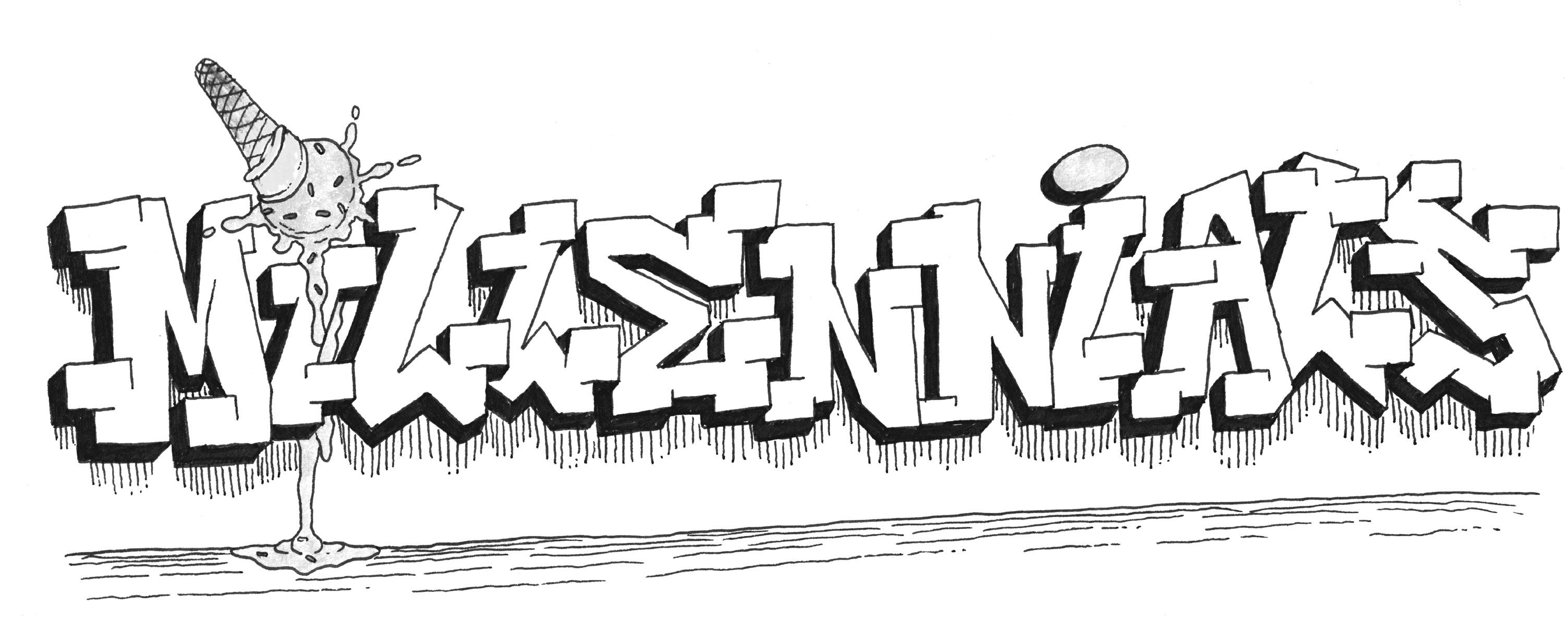
ILLUSTRATION BY SEBASTIAN WOODS
// BY FABEHA JAHRA
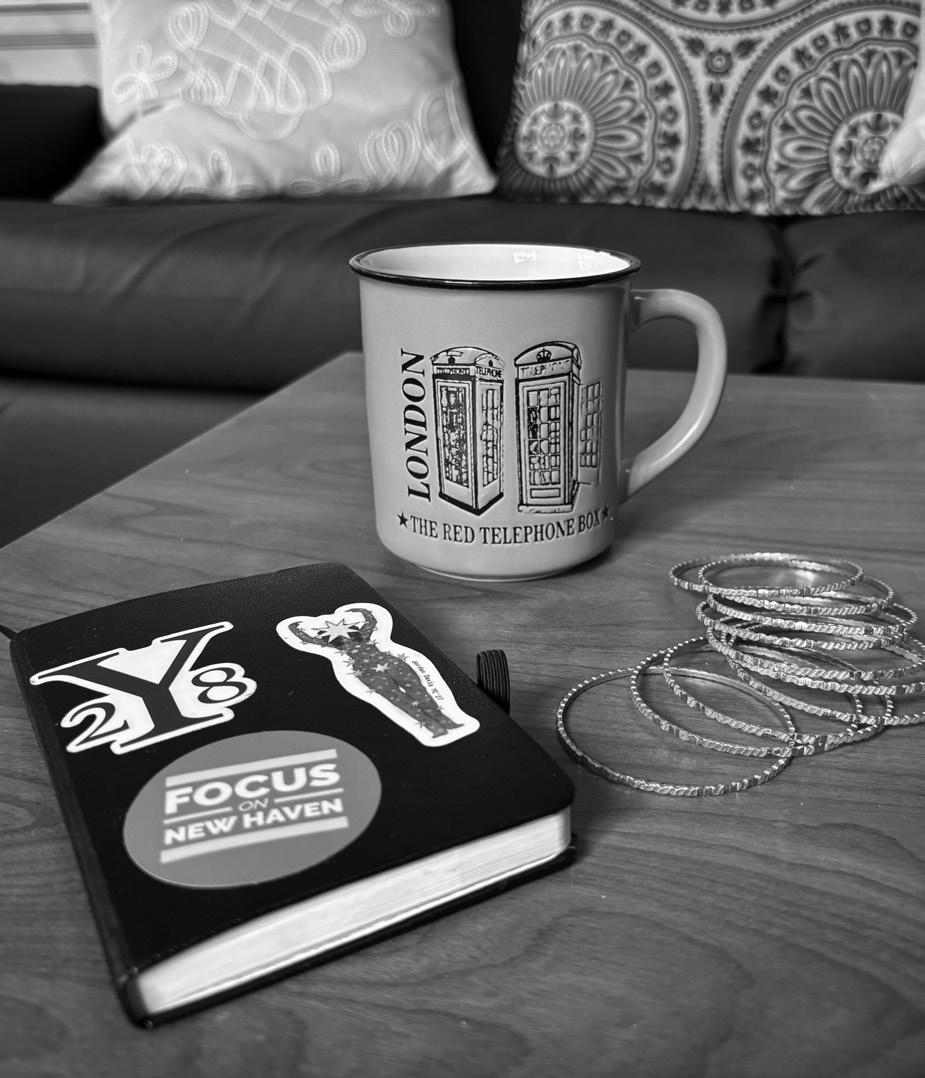
On my cluttered desk sit three things that have followed me across semesters, dorm rooms and different versions of myself: a journal, a set of gold bangles and a cup I bought in London this summer. None of them are worth much on their own, but together they form a small archive of who I’ve been trying to become.
My journal is a contradiction. It contains both versions of myself that are long gone yet it is still unfinished itself. Half finished and half full. The cover is soft from being packed and unpacked too many times, the edges bent from being jammed into overstuffed tote bags. I started writing in it last winter break, inspired by a friend’s goal to journal every day. I was determined to write everything that ever mattered.
I thought that I would write everyday, that documenting would keep me grounded, but instead the pages are uneven: a burst of messy handwriting one week, nothing for months after. Still, when I flip through it, the fragments feel enough — a line about a song I couldn’t stop listening to, a note about the way the city looked after rain, a few entries written in the middle of the night when I couldn’t sleep. It has become less of a record of what I did but more so what I felt in the moments I thought I’d forget myself.
The gold bangles were gifted to me by my mother. She gave them to me in pieces, one on my fifteenth birthday, another before I left for college, the rest tucked into a small tin box I still only rarely open. They’re delicate, thin enough to make a faint clinking sound whenever I move my wrist, a reminder that memory has a rhythm of its own. When I wear them, I’m reminded of her, of the way she would slip off her own set before washing dishes or praying, how they’d catch the light whenever she gestured mid-sentence. For her, they’re a form of both adornment and inheritance, a small form of self-preservation etched in gold. For me, they’ve become something quieter: proof of care, continuity and the kind of love that doesn’t need to be spoken aloud.
Then there’s the London mug, printed with the city telephone booths. I bought it impulsively this summer at a souvenir shop near a train station during my first trip abroad simply because I wanted to, not for school or family or any reason that needed explaining. I didn’t mean for it to mean anything, but now it’s one of the first things I unbox in a new room. Now, whenever I fill it with coffee, I think of those quiet mornings in London: the hum of buses outside, the pale light through the window, the feeling of being lost but certain I was where I was meant to be. The cup really isn’t elegant or sentimental in any way, but it’s ordinary in the best way. It’s a small reminder that meaning often hides in what we use every day without thinking. Together, these items form a way to step outside of my own thinking and see who I’ve become. When I flip through the journal, I don’t only see myself, but I step into the third person. I see a girl furiously scribbling with no direction. When I see the bangles on my table, I think of what they’d be if they weren’t mine. How others would have treated them. Even without them being a part of who I am, innately they are beautiful and delicate in their own right. Maybe that’s why I bought the mug in London, even knowing that there were tens of other exact copies behind it on the shelf. It’s comforting to see how an inherently ordinary object like a mug has its own identity. That’s when they come to mean something to me, in the moments when I tap into the parts of myself that align with that identity.
Contact FABEHA JAHRA at fabeha.jahra@yale.edu.
// BY ZACHARY CLIFTON
The book with lots of nicknames
On Sept. 30, 1965, a Tokyo magazine publisher released a book about the fashion at eight American college campuses. The book is “Take Ivy.” The photos were taken by photographer Teruyoshi Hayashida. The text was entirely Japanese, and the campuses he shot make up the Ivy League. The New York Times hailed it a “treasure of fashion insiders,” and GQ dubbed it a “seminal #menswear tome.” The book has had no shortage of nicknames: “Original style bible,” “Sartorial kayfabe,” “Ivy League bible for Japanese baby boomers” and just about any pairing of a fashion word and synonym for sacred text one can imagine.
Last week, “Take Ivy” celebrated 60 years, and its legacy still stands in Philadelphia, Princeton, New York, New Haven, Providence, Cambridge, Ithaca, Hanover and every city between.
Stripped of its endless accolades and enduring references, “Take Ivy” is a photo book. It was the first time “Ivy style” was methodically chronicled. Hayashida shot the images in the spring after traveling from Japan. The photos numbered in the tens of thousands, The New York Times later reported. Hayashida wanted to give curious Japanese readers — who appreciated rules and clarity — a better grasp of what seemed like a complicated code of Ivy League fashion.
The book includes “Yale University’s 20-Article Dress Code,” a set of guidelines published in 1965 for incoming first-year students. The guidelines reassured students they could “dress casually on campus, now that [they] spend most of [their] time in class or at the dormitory,” but also sternly advised wearing a sport jacket and tie on dates or to restaurants.
In “Stalking Ivy League Madras Wearers in the Wild,” American fashion and culture writer W. David Marx writes about student’s “Ivy style” captured by “Take Ivy.”
“They’re dressed in the pinnacle of classic Ivy League style: madras cotton blazers, Oxford-cloth button-down shirts, khaki Bermuda shorts, and patinaed penny loafers, he writes.”
Marx, who studied at Harvard and now writes from Tokyo, offers a succinct explanation of “Take Ivy.” Effectively, he says, the book is “young American men strolling across quads, eating hot dogs and studying for finals in libraries.”
The strolling and studying hasn’t changed. But the students have. Today, they’re half women and nearly one-tenth international. The Yale College students of the 1960s — almost entirely white, American men — are now less than one-fifth.
The students look different, but the clothes are often the same, especially now. Last month, “Double polo collars, cargo shorts, and lots of blazers — J. Crew, Ralph Lauren, and J. Press — led the preppiest New York Fashion Week in recent memory,” according to GQ’s Samuel Hine. A style catalogued six decades ago is still at the front of the cultural consciousness. “At NYFW, everyone wants to be a preppie,” the recent GQ writeup reads.
What is “Take Ivy” to today’s Yale students?
Some don’t know about it at all. But some still wear the style that the book introduced to Japanese readers. Those who know about “Take Ivy” still have copies and still use it as a style guide — though, slowly, students have crept away from preserving its style rules and closer to subverting them.
Sunbathing and studying
On a sunny day outside of Morse College, a shirtless Yale student sprawled out on the lawn between his college and Payne Whitney Gymnasium, according to a “Take Ivy” photo. Its caption explains the student was “desperately trying to get bronze skin while also preparing for an exam. The photo — probably the most evocative in the collection — conjures the first warm day at Yale when a beaming sun tells students they’ve survived the New Haven winter. The caption continues, “Ivy Leaguers frown upon students who earn good grades but have pale skin from spending too much time inside.”
Last spring, the Edon Club turned that warning into a parody, hoisting a red leather couch from Berkeley College and onto Sterling Memorial Library’s front lawn, which Yale students affectionately call
“Cross Campus” — or “XC.” Jayden Gonzalez ’28, an Edon member who respects the style Hayashida chronicled generations ago, helped.
“Take
On that early spring day, Gonzalez sat on the couch wearing dark leather J. Crew penny loafers, white ribbed gym socks with red stripes and red gym shorts with white stripes. Gonzalez lives in Berkeley College, whose colors — unsurprisingly — are red and white. Celebrating his college’s colors, his outfit could be called “allegiant.” Daniel Cappello used that term to describe Yale students in “The Ivy League,” his Assouline volume. “Yalies, both matriculating and graduated, bear a remarkably genuine love for their alma mater.” Cappello revisits the impression of “Ivy style” first catalogued by “Take Ivy.”
“Yale students tend to dress with a similarly unaffected classic ruggedness — what might be called the Maine look: a sporty Patagonia fleece or North Face jacket to temper the brisk autumns of the Northeast,” he writes. “New Haven, with its maritime climate, makes Yale a natural habitat for the Land’s End look. Gonzalez gets it. He pairs his worn penny loafers with trousers or either striped or plaid shorts and tech fabric outerwear from Arc’teryx or The North Face. Recently, a minimally vibrant — almost burnt orange — yellow raincoat has been his go-to. He talked to me about “Ivy style” — not just as “Take Ivy” presents it but a modern version which “from time to time,” Gonzalez enjoys “tapping into.” He told me: “Fashion has a lot of different niches that are objectively good. Most of us gravitate toward a few and leave the others behind. ‘Ivy style’ is one of them I admire and wear. But I never fully make it my own.”
Gonzalez’s sartorial impulses are tempered by feelings beyond aesthetics. He echoed David Brooks, who last year wrote “HOW THE IVY LEAGUE BROKE AMERICA,” in The Atlantic: “Every coherent society has … an image of what the superior person looks like. In America, from the late 19th century until sometime in the 1950s, the superior person was … a man born into one of the old WASP families that dominated the elite social circles like the one on Fifth Avenue, in New York City.”
Gonzalez calls New York home, too, but told me, “Fashion shouldn’t be limited to the uber wealthy. So much of what becomes mainstream often comes from working-class groups. Fashion is one of our most prevalent forms of cultural exchange and language between different groups.”
That conversation, he believes, should include everyone — though few have his roommate’s fluency in it.
Standard Bearer or Wearer?
Griffin Santopietro ’28, a Berkeley College sophomore and Gonzalez’s roommate, has a fondness for “Ivy style” immortalized by News ads. He’s an “Icon” for J. Press, the storied New Haven institution that has outfitted U.S. presidents and Nobel laureates in navy blazers and Shetland sweaters since 1903.
Santopietro, who is also a writer, is originally from Maine. He’s now a Connecticuter but still sports Cappello’s “classic unaffected ruggedness.”
Last year, at the Yale-Harvard Game — which “Take Ivy” venerably calls “one of the world’s three biggest intercollegiate games” — Santopietro wore a waxed-cotton Barbour jacket, black leather gloves, a classic navy “Y” sweater and Japanese selvedge denim. He posted the photo with the aesthetics of a J. Press catalogue to Instagram and captioned it: “Harvard lost.”
Indeed, they did. But Santopietro’s outfit looked as though the football game was merely incidental. He told me that he “didn’t want to be awkwardly formal,” and Santopietro’s classmate Saketh Sadha-
nala ’28, a student in Morse College, agreed. “I just don’t feel comfortable wearing something crazy,” he told me. “Instead, I prefer wearing normal staples with a little bit of a flair.” Sadhanala told me his favorite thing in his closet is his Acne Studios 2021M. “They have a ‘personality’ that keeps me away from my other black pair of Levi’s.” Their “personality” is wide straight legs, a slight flare from the knee, a long length and a vintage wash for a heavily worn-in look.
Both men — and Gonzalez — agree about not making too big of a deal out of their clothing. Santopietro, specifically, resists letting “Ivy style” become doctrine. “There’s no reason to be didactic about it,” he said. “Not every day will be my best outfit, because there’s no reason for it to be. But I never want to end up in just sweatpants and a t-shirt. I want people to know I’m conscious of where I am.”
On the book’s limits, he arrived somewhere close to his roommate.
“When you’re talking about this era … it’s very white, very male. What’s important is not to re-create that, but to take the style principles and modernize them.” For him, that means “dressed up but functional. The ‘Take Ivy’ men were the first generation that went into their dad’s closet to wear his old clothes.”
“But,” he quipped, “they’re all wearing them in a cooler way.”
Sadhanala told me: “We’re far less formal today than the past. ‘Ivy style,’ to me, isn’t ‘law’ but more of a place to draw inspiration. I balance expressing myself while nodding to tradition.”
Each of the three men — Sadhanala, Santopietro and Gonzalez — get noticed on campus for their style. But none of them take it too seriously.
It’s easy to imagine them flipping through pages of “Take Ivy,” sinking into a Berkeley-red sofa and dissolving into the kind of laughter that is somehow at their expense and in their favor. The culprit would be Hayashida’s section titled “Play hard…” which, with the matter-of-factness of the Yale Dress Code, observes:
“When with male friends, male students may go on drinking sprees, which although usually tempered, sometimes involve the students bingeing to the point of unconsciousness.”
“Take Ivy” endures as proof that beneath the fabrics and formalities, college life at the Ivy League has long been a precarious balance — between style, study and the stir of social hours. In 60 years, the more dated pretenses of social life have faded. But the best style conventions have stayed.
Contact ZACHARY CLIFTON at zachary.clifton@yale.edu.
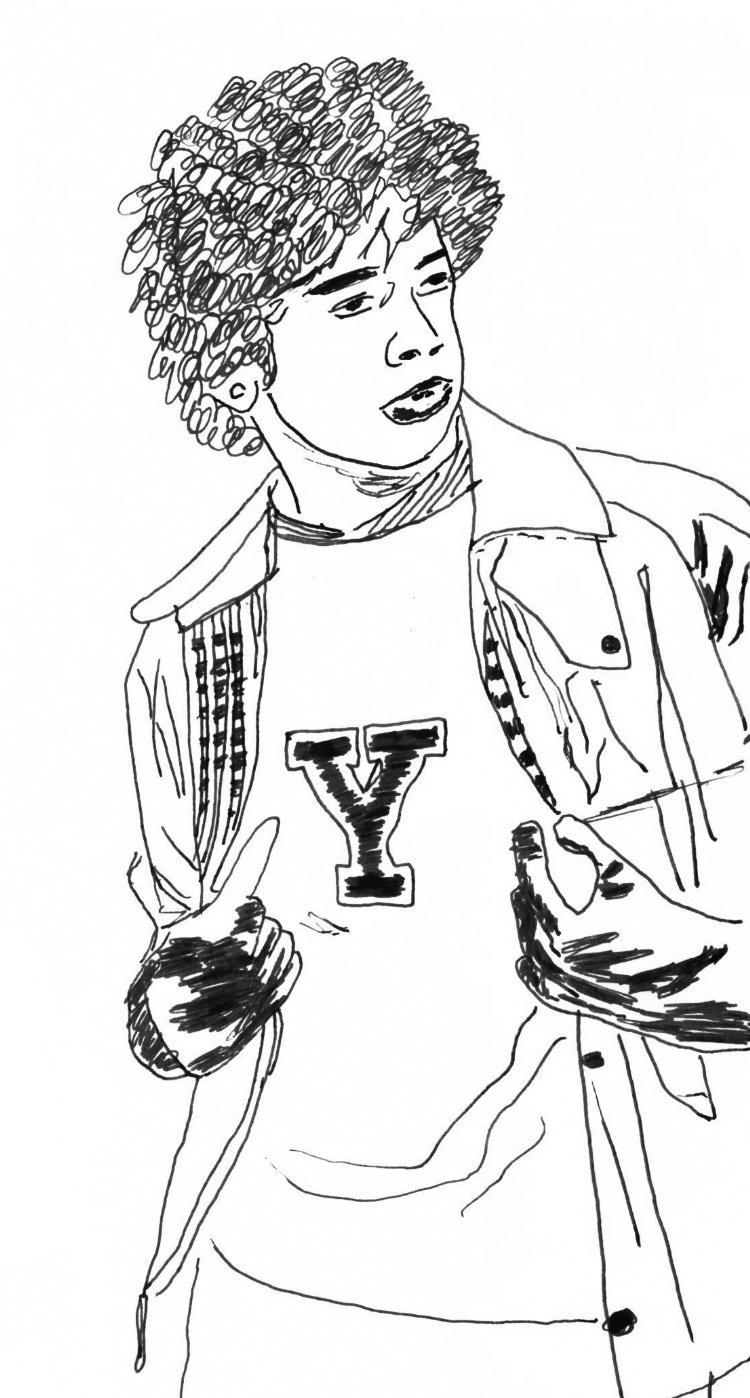


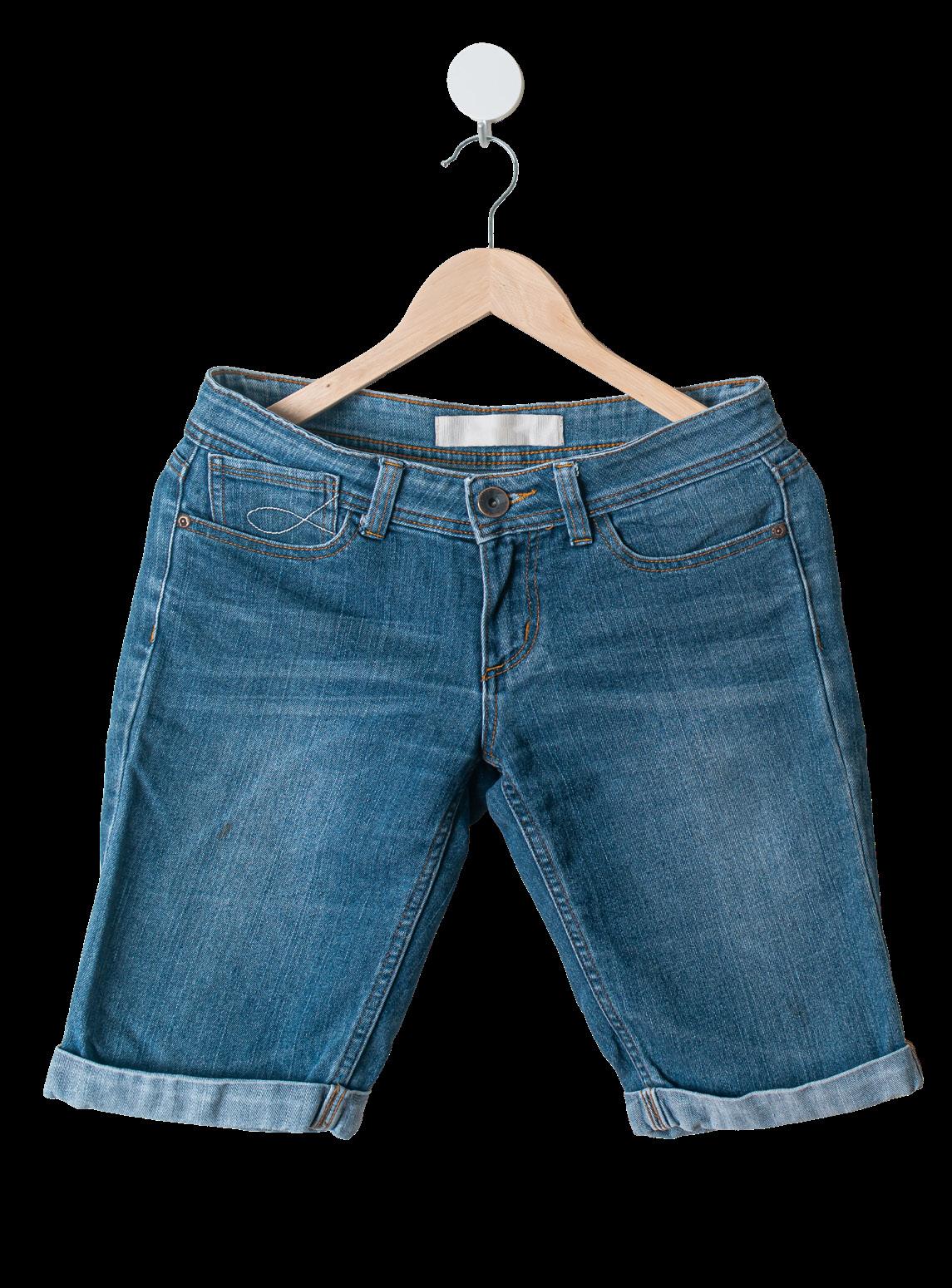

// BY REETI MALHOTRA
Last year, the look was leopard print — a product of the maximalist “mob wife” aesthetic that proliferated on social media and promoted an accessible in to an elusive world of luxury.
This year, the look is polka dots. Polka dots are on dresses, skirts and nails. The retro print is no longer dated, but rather the epitome of versatile, playful class, at least according to Vogue. Walk around any function lacking a discernible theme and you’ll spot someone donning polka dots.
Am I criticizing either pattern? Absolutely not. But the ceaseless cycle of rising and dying microtrends made me wonder how rapidly changing mainstream tastes affects our own style.
I fell in love with animal print — cheetah, leopard and zebra — at 17. My Pinterest algorithm had spat out photo after photo of the “rockstar girlfriend” aesthetic — which crucially included lots of animal print, leather and fur. The look had found its perfect target: a teenager with a nascent love for rock revival bands.
Pinterest collages paved the way for my devotion to Alexa Chung’s effortless indie sleaze and Kate Moss’ cool chaotic rock. My closet was soon populated by leather jackets, boots, bags and metallic tops that provided a pop of alternative texture. I learned how to draw on my eyeliner — smudging it just right — and to paint on a dark lip. I only wore black, red and
silver. I had swallowed the “rockstar girlfriend” aesthetic whole and absorbed it into my identity.
But while wearing an all-black leather look in the middle of spring is a choice I can applaud, it’s not one that always works for me. I got older and developed a greater range of tastes — and bought new pieces to go along with them. I purchased flowery, iridescent, beaded cami tops, inspired by the lighter-colored dresses my friends and I prefer to wear in a sweltering Singaporean summer; bright flats, borne from my love for Punjabi juttis; and baggy skater jeans paired with band tees, like Lindsay Lohan’s styling in “Freaky Friday.”
awareness of a certain aesthetic can point us towards a fitting mode for self-expression, like me with my “rockstar girlfriend” discovery — but to highlight how dominant they are in navigating our present fashion zeitgeist. Ever-shifting microtrends make us buy, buy, buy to keep up with the times. As our closets fill up
Ever-shifting microtrends make us buy, buy, buy to keep up with the times.
I still wore my leather and grunge looks, but broke them up with a hint of something different.
Each of these garments became a staple in my wardrobe around the time that their corresponding microtrend appeared in the mainstream. My cami tops became fashionable amid the ongoing Y2K resurgence. Juttis became cute after “balletcore” proliferated on TikTok. The baggy look became desirable with the rise of the “cool girl.” I point this out not to be critical of the reliance on microtrends for fash ion inspiration — sometimes the
with an endless number of pieces, certain garments shift to the back, gathering dust as the trend that drove us to purchase them fades. Others come to the front, deemed newly desirable according to forever fluctuating fashion tastes.
While clearing out my closet before returning to college this fall, I found a white lin

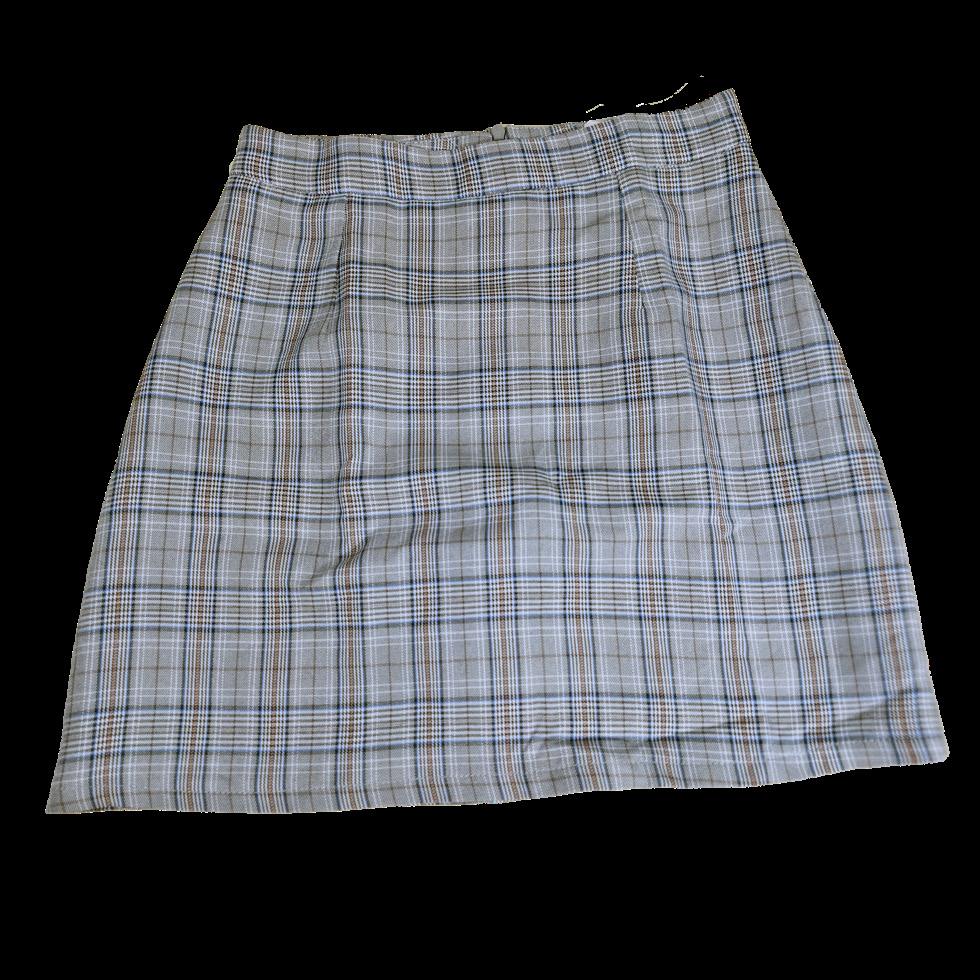
en top I hadn’t worn in a year. At present, it is the ugliest garment of clothing I own. It is not “me,” nor an item I would reach to wear irrespective of its deviation from my usual style preferences. But as the law of motion of fashion requires, fashionability returns. Give it a year, or two, and I know the top will be a “hidden gem” I’ll be delighted to discover as “Clean Girl Bali Bougie” becomes the new look of the moment. Maybe.
The principal topic of conversation with microtrends in recent years has been their contribution to overconsumption. Fast fashion companies churn out clothes to match the latest algorithm-pushed style. We in turn buy pieces without discerning if we actually like them, or if their inflated sense of palatability — borne from transient popularity — drove us to purchase them. This is a valuable point of discourse. However, I think it is equally important — from the standpoint of appreciating fashion as an industry, art form and means of self-expression — to recognize their im


pact on how we formulate our personal style. The 2020s don’t have a set fashion look, as the 70s, 80, 90s or 2000s did — we have a plethora of them. Though microtrends make up the superficial commodification of subcultures for fast fashion conglomerates — and therefore warrant a measured degree of criticism — they also compel us to learn about our personal style, given we don’t run to buy everything we see. So, don your leopard print or polka dots. Stop there if you please. But don’t be afraid to use each “mob wife” or “balletcore” or “clean girl” trend as a vantage point to dive into the broader fashion world and rich subculture that each of these aesthetics hails from. You might find something that gives you a way to express a newfound aspect of your identity, or at least something chic and fun to wear that’ll last longer than the doomed-to-die fad that led you to discover it. Take it from me.
Contact REETI MALHOTRA at reeti.malhotra@yale.edu
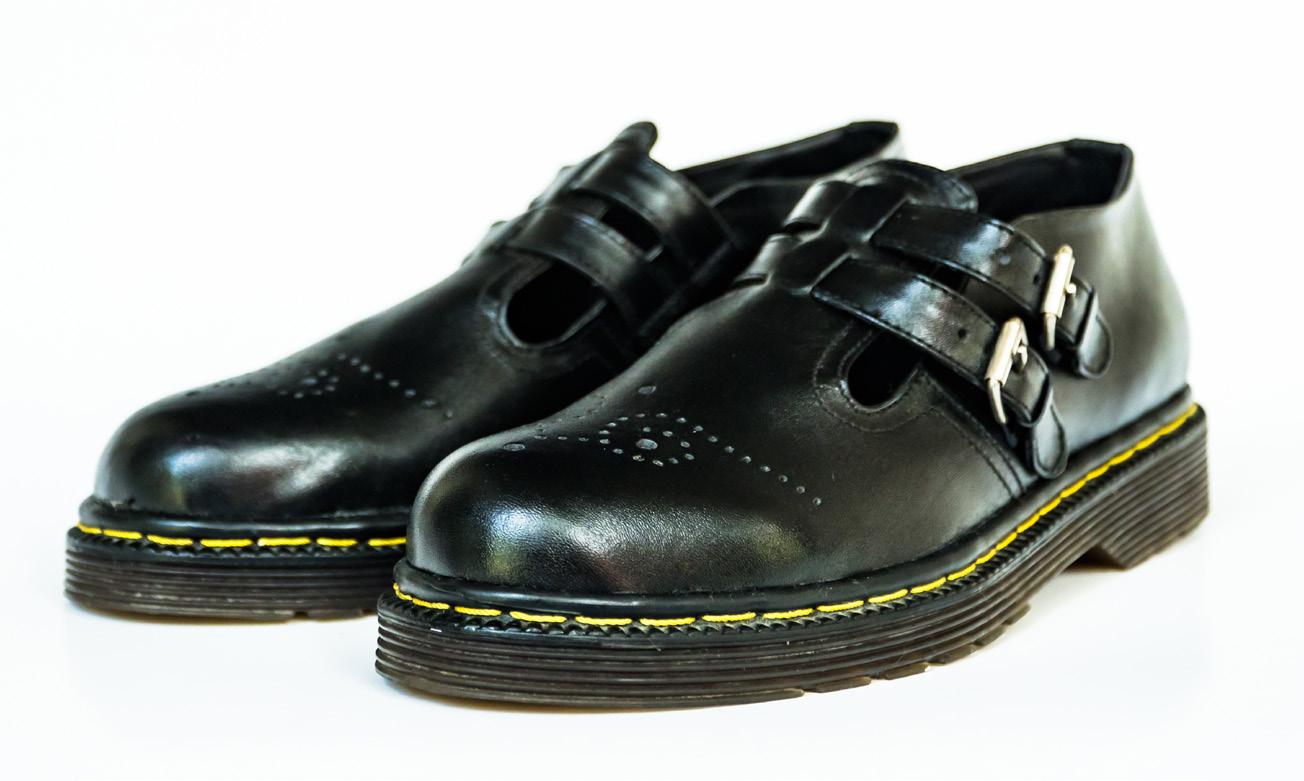
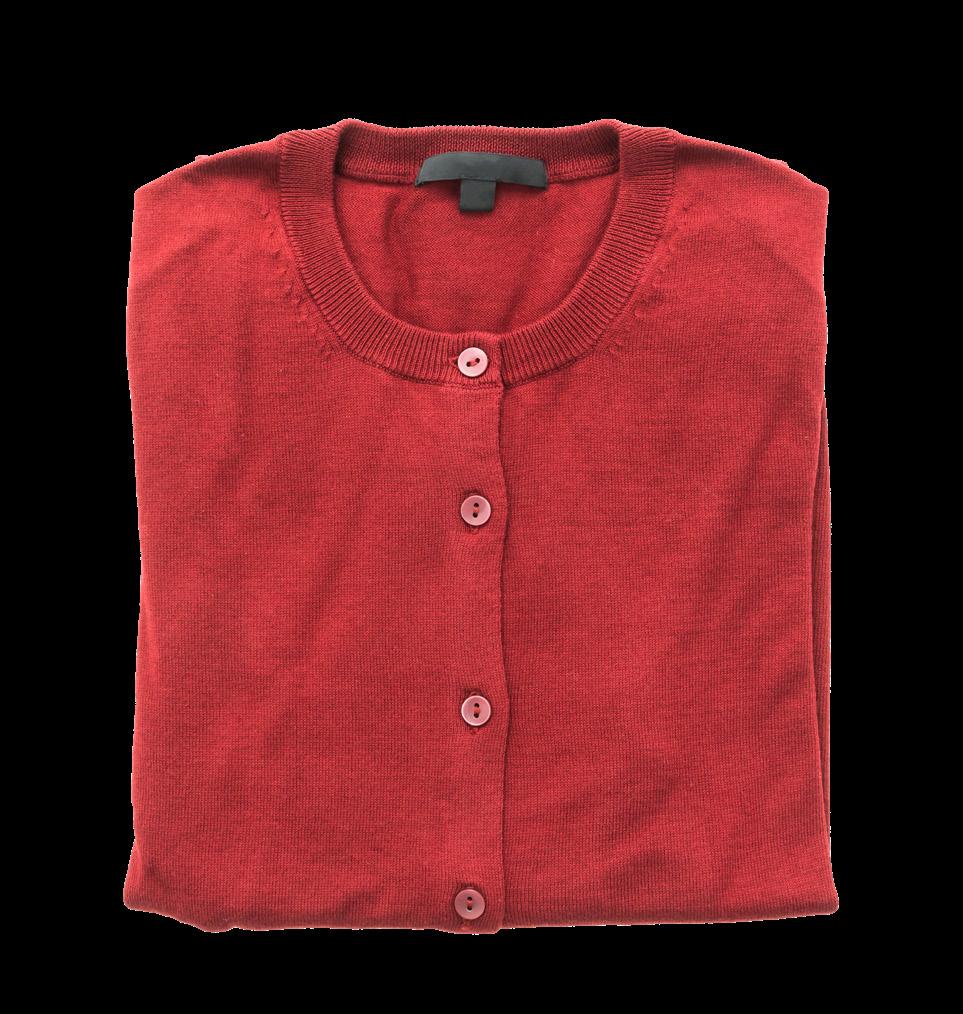
A summer flashback as summer “bears” down on us.
// BY ALEXANDER MEDEL
“It still feels like August,” a friend of mine said. He stared at the hammock across the TD courtyard. I nodded in agreement as my gaze fell on the cornhole boards. A sigh of resignation escaped through my lips and into the humid air. I made sure to exhale gracefully as a swarm of gnats hovered mischievously nearby. In the first few days of October, the weather seemed to grow sentimental about the end of summer. I did, too.
My friend kept on talking. About what, I couldn’t tell you. I was too busy reminiscing about a summer morning in Lake Tahoe.
Situated in the Sierra Nevada roughly 40 miles south of Reno, Nev., Lake Tahoe is a large, alpine lake bisected by the California-Nevada state line. Known for its crystal blue waters, snow-capped mountains and pine-covered forests, the lake is a classic destination for all seasons, but especially the summer.
The lake has all those qualities that make California summer an ebullient daydream. The beaches are warm. The water is cool. The company is fine. The wind twirls with a joy it knows only in July, and sunbeams cover the earth in a glow that truly makes the state golden.
Mark Twain once called Lake Tahoe “the fairest picture the world affords.” If you have seen the lake as I have, you would know that he is not wrong. Every day I spent on the lakeshore, but especially the last, was a lesson in its beauty.
My parents and I spent three days on the lake, our last morning spent hiking at Emerald Bay. The bay, known for the shade of its waters, is bounded by tall mountains and lush forests complete with pines and furs. A small island sits squarely

at its center. It was a Bob Ross painting come to life.
The sun had just clipped over the mountains on the Nevada side of the lake when we started our hike down to the lakeshore. The morning was slow, and the bay was in no hurry to rush it. The water was still. The tide was gentle. There were neither wakes nor any noticeable tides. It was as if the bay and the sky were one and the same. I hesitated to stare too much, partly because I did not want to trip on the trail, but also because I felt as though my gaze might disturb the tranquility of the waters. After a few minutes, my parents and I had made it to lake level. Continuing on the trail toward the shore, I stopped. There was something behind the trees.
A large, amorphous mass bounced in the brush near a trail running parallel to my own. The thing was dark and brown, but I couldn’t make out much more than that. I walked onward to a clearing to get a better look at whatever it was. The bobbing ball of fur was, in fact, a black bear.
I stood roughly 20 feet away from the bear. If the walk it was taking was not leisurely, it was certainly lethargic. It made no sign of emotion or excitement. It bore the same countenance of someone on their morning commute to work, or of a STEM major en route to Science Hill for a 9 a.m. lecture.
I kept myself a healthy distance away, hoping not to become a summer headline in the News. Quietly and discreetly, I signaled the sighting to my parents and fellow hikers. They all stopped, hushing their gasps into barely audible exhalations. Just then, the bear sprung out of its lethargy and darted into the lakeside brush.

The apparition left my dad amazed, my mom terrified and me elated. We finished our hike and claimed a picnic table on the shore of the bay. As my parents wandered nearby to take some photographs, I remained seated at the table to look out into the water. As my head panned across the horizon, I spotted several hikers to my left pointing in my direction with excitement. With the full knowledge that I am no public figure — at least not yet — I looked behind me to see, in the water, my ursine friend make a reappearance.
The bear seemed to be out on a morning swim, which, from its disposition, seemed to be a well-enjoyed morning ritual. It performed some rolls and splashes before it reached a point of land across the beach.
My friend jostled my arm, shaking me out of my reverie and back to the waking hours of a warm October in New Haven. I apologized for not paying attention as he left to go to class. I remained in the courtyard, where I watched a leaf bounce along the pavement, making its way to my feet. I looked at it and thought of the bear once more.
After making it to shore, the bear shook itself dry and wandered along the treeline. It went into the forest and — just like my summer and all those lazy, crazy, hazy days — was gone.
Contact ALEXANDER MEDEL at alexander.medel@yale.edu

// BY CIELO GAZARD
Music overwhelms me. Every time I think I’ve listened to everything, I realize I haven’t even begun to scratch the surface of certain artists’ discographies, genres or eras in music. I fear over-listening to songs I love. What if “I’m Not in Love” by 10cc doesn’t move me like it has before? What if “Amelia” by Joni Mitchell doesn’t tug at my heartstrings anymore? I’ve already wasted countless hours mourning the day when my favorite artists will no longer be my favorites. At the same time, when I discover something new, I am reminded of why I have dedicated my life to music.
I was never supposed to become a Paul Weller fan. If we are to believe in musical geographical determinism, I, a 20-year old Nuyorican, shouldn’t even know the names of the bands he once fronted. But, since I’m always on the hunt for mid-20th century British rock, I have naturally become an avid listener to both the Jam and the Style Council. The latter, a politically-charged sophisti-pop outfit started by Weller after the Jam’s untimely breakup in 1982, I only started listening to last semester. Unless you happen to be a Paul Weller fan yourself, you’ve probably never heard of the Style Council. If you have, then chances are you’re British. At a gift shop in Liverpool, I stumbled upon a collection of officially merchandised buttons of the Jam. The cashier was shocked that I was a fan of the group. When I mentioned I loved the Style Council, he lit up and talked about his favorite songs. He then asked, “Did they have any airplay in America?”
My mother, an avid fan of ’80s pop rock outfits like Wham! and Duran Duran, had never heard of them. I responded that they did have one song hit the Top 40: “My Ever Changing Moods.” Reminiscing on my summer trip to the United Kingdom, I discovered that my most listened-to song was this little gem. “My Ever Changing Moods” is not a happy song. There are two different versions of the song. The album cut, a pensive piano piece, was the first version I listened to. However, the single version, the Top 40 hit in America, has an incredibly upbeat and danceable instrumental. Even with the more
optimistic track, there’s no escaping the unease of the lyrics.
Part of the reason I love Paul Weller as a musician is because he is a diehard music fan. He’s a connoisseur of the classics, and the instrumentation of “My Ever Changing Moods,” with its horns and smooth guitar licks, reminds me of something Curtis Mayfield might have cut back in the early 1970s. However, the sunny instrumental is juxtaposed with a stormy uncertainty in the lyrics. Weller’s soulful voice sings, “The cool before the warm / the calm after the storm / I wish to stay forever — letting this be my food / But I’m caught up in the whirlwind and my ever changing moods.” The speaker is weary, unsettled, unpredictable. But life goes on, and no-one bats an eye at his struggles.
While the lyrics are deeply personal, the song is also a deeply political work. A reviewer once described the Style Council as a bunch of “vegetarian teetotaling socialists.” Their music was in direct contrast to Thatcher’s Britain, and Weller and company were not afraid to call out the ills of conservative society. The band has a song — an instrumental, no less — entitled “Dropping Bombs on the Whitehouse,” which refers to both the president’s residence and hardline social conservative activist Mary Whitehouse, who is also one of the pigs in Pink Floyd “Pigs (Three Different Ones).”
The music video of “My Ever Changing Moods” heightens the musical/lyrical juxtaposition. Weller and fellow bandmate Mick Talbot are riding bikes through a park in Suffolk. After an instrumental break when Weller and Talbot are startled by waiflike beauties dancing in a field, the bike ride becomes more strenuous. Black-and-white images of atrocities and war flash on the screen as lyrics like “Teardrops turn to children who’ve never had the time / To commit the sins they pay for through another’s evil mind” are sung with a greater sense of urgency. The road signs have dollar signs and a mushroom cloud as they inch closer to the finish line and Weller sings “I wish we’d wake up
one day, and everyone feel moved” and laments “The love after the hate, the love we leave too late” in the song’s extended outro.
The final verse of “My Ever Changing Moods” is cut from the single, but it is easily my favorite verse in the whole song. After lamenting about the future that we “always leave too late,” Weller rises to sing, “I wish we’d come to our senses and see there is no truth / In those who promote the confusion / For this ever changing mood.” A song that is over 40 years old reflecting on a time of great political uncertainty only rings truer in today’s world. Weller is not preaching to the choir or speaking in a passive voice saying there is nothing left for the ordinary people to do. “My Ever Changing Moods” is a call to action. In the world of 2025, where popstars seem to dance over the issues of the day and
pretend that they are not real, it is up to us to find our own voice and our own path.
“My Ever Changing Moods” was my song of the summer and perhaps my song of the year. However, the song does not comfort me or make me numb to my own struggles, my own ever changing moods. It embodies the personal being political and the political being personal. I hesitate to say I find this song relatable. How could I possibly relate to a then 25-yearold Paul Weller who was already ubersuccessful by 1984? As long as there are anxieties about the world we’ve failed and the possibility to create a new one, “My Ever Changing Moods” will forever be a part of my personal soundtrack to this uncomforting reality.
Contact CIELO GAZARD at cielo.gazard@yale.edu.
